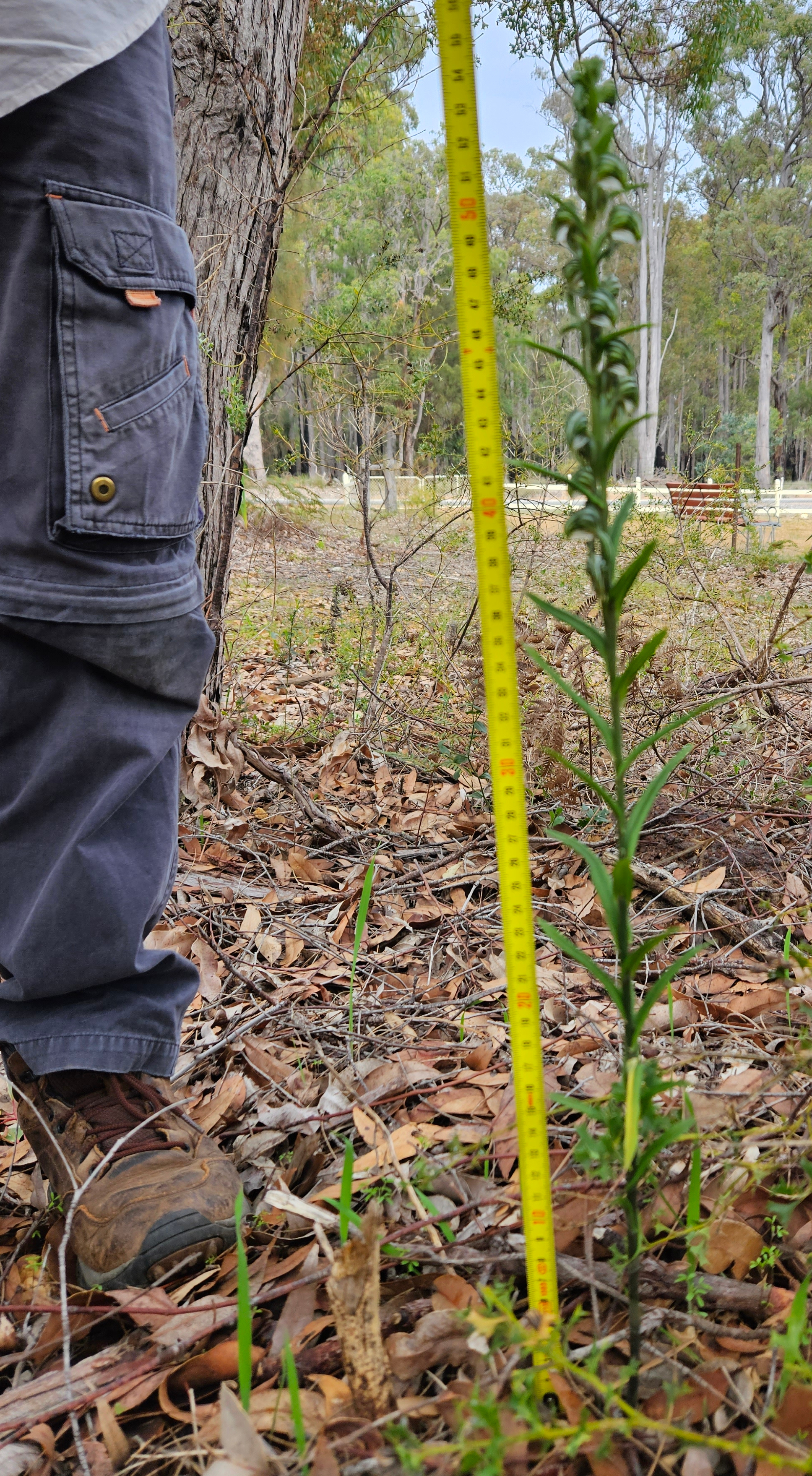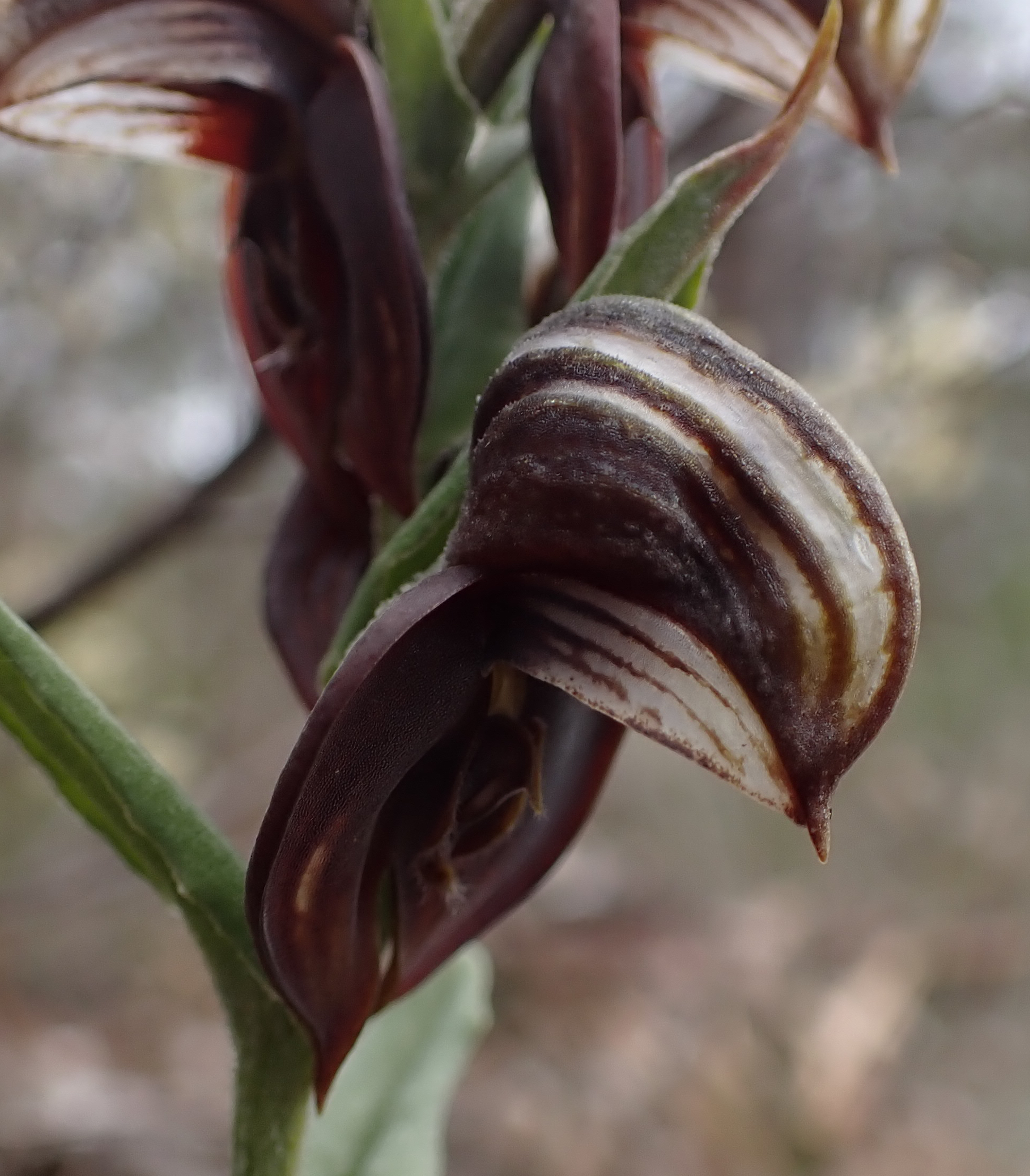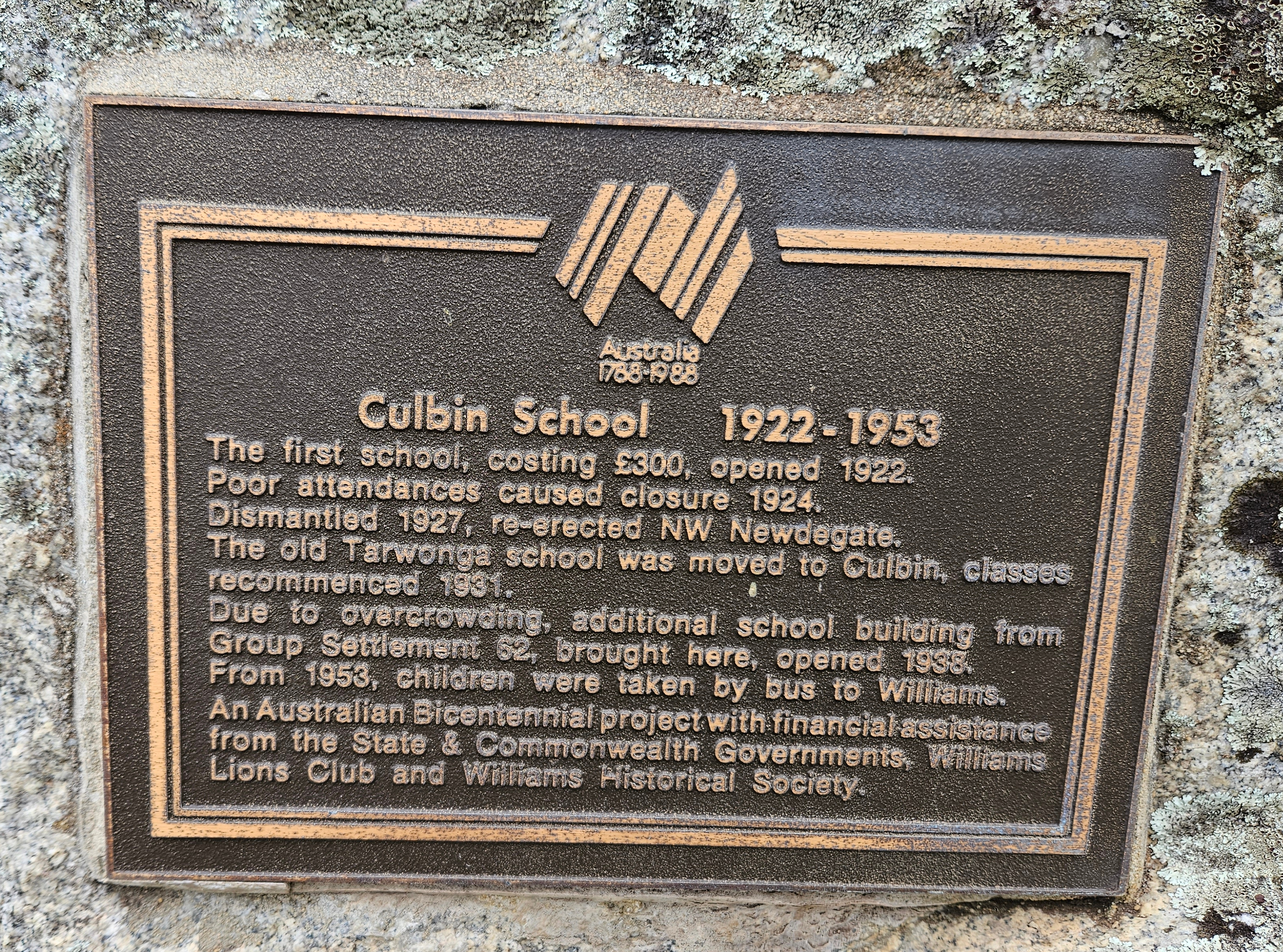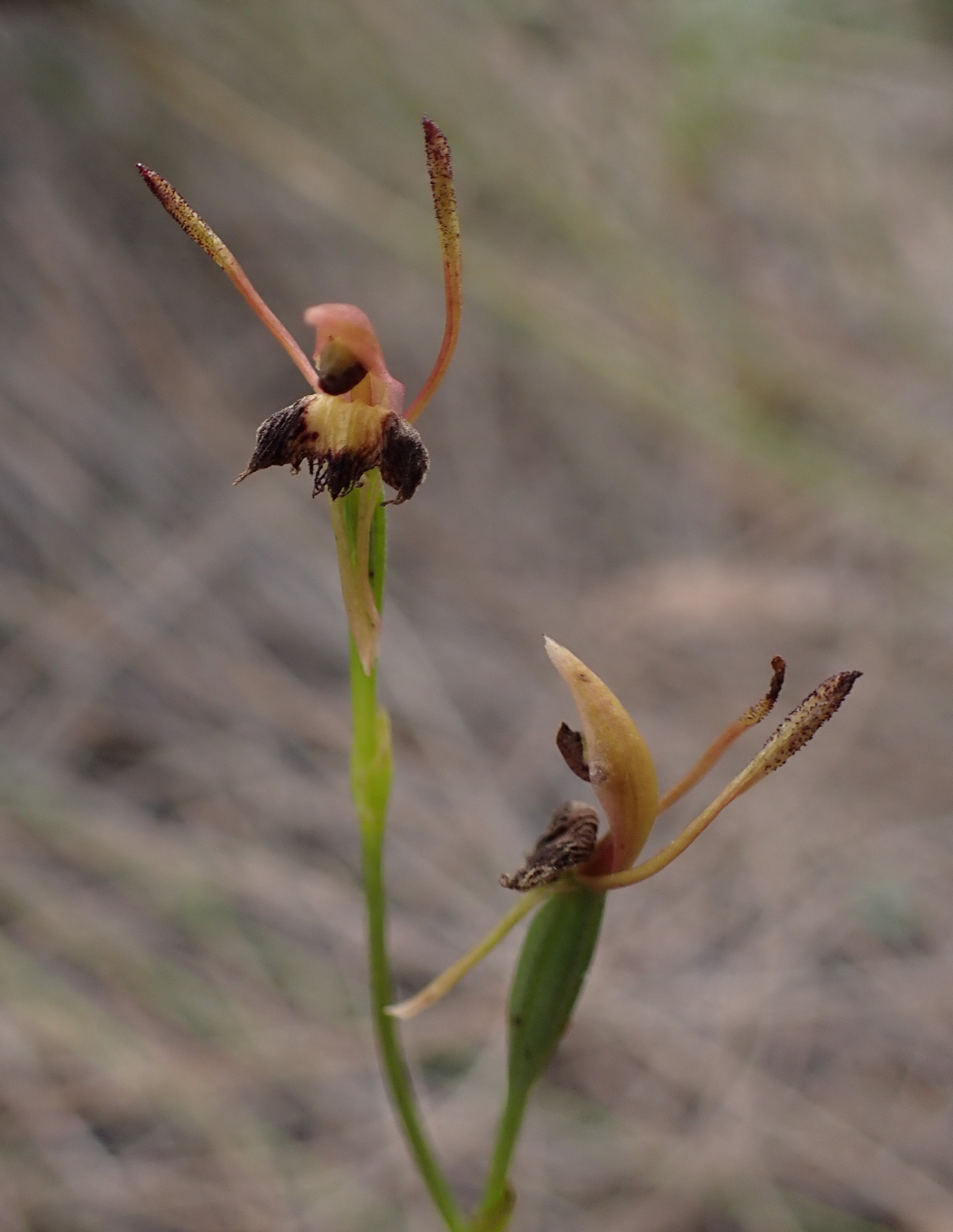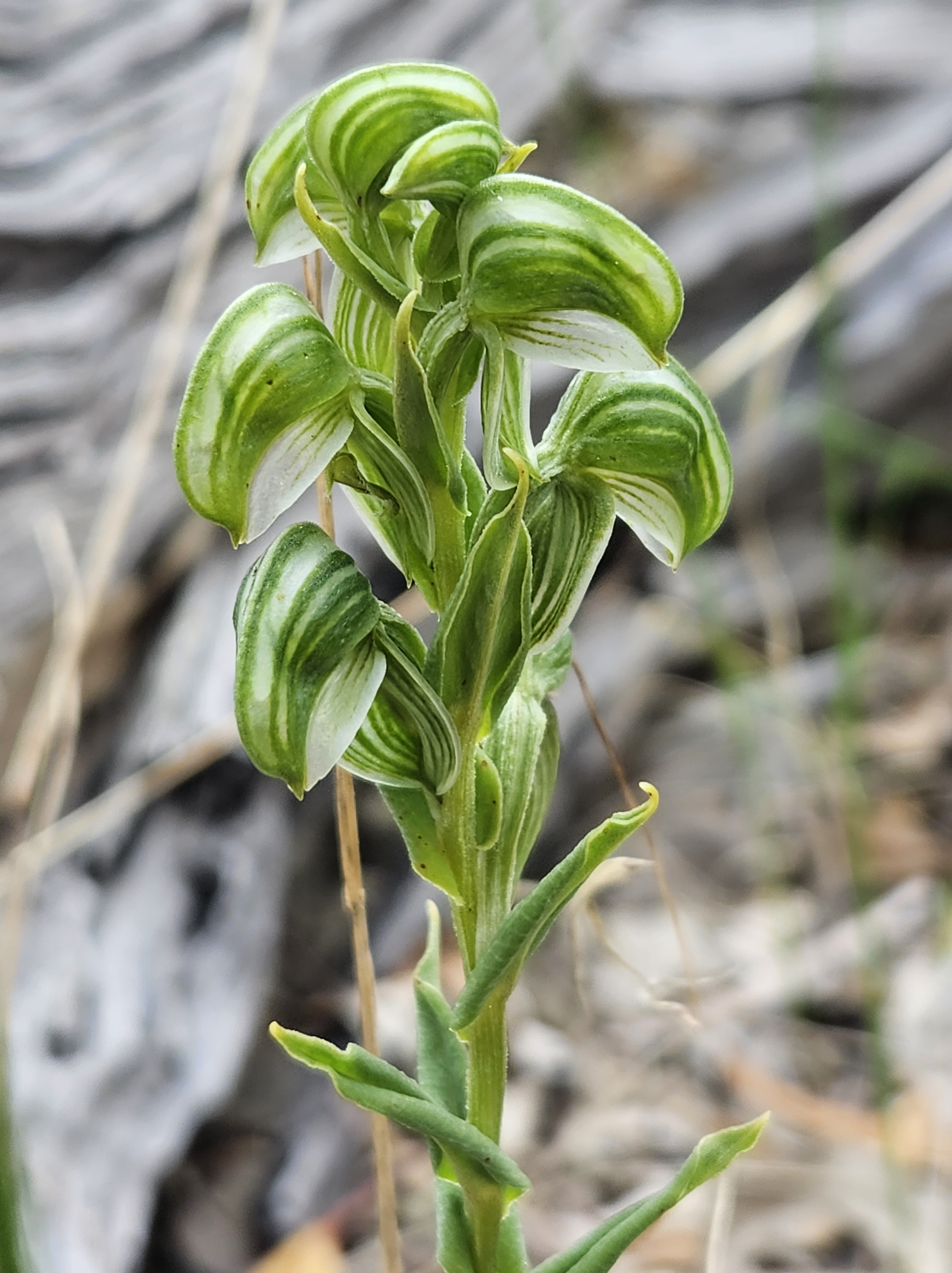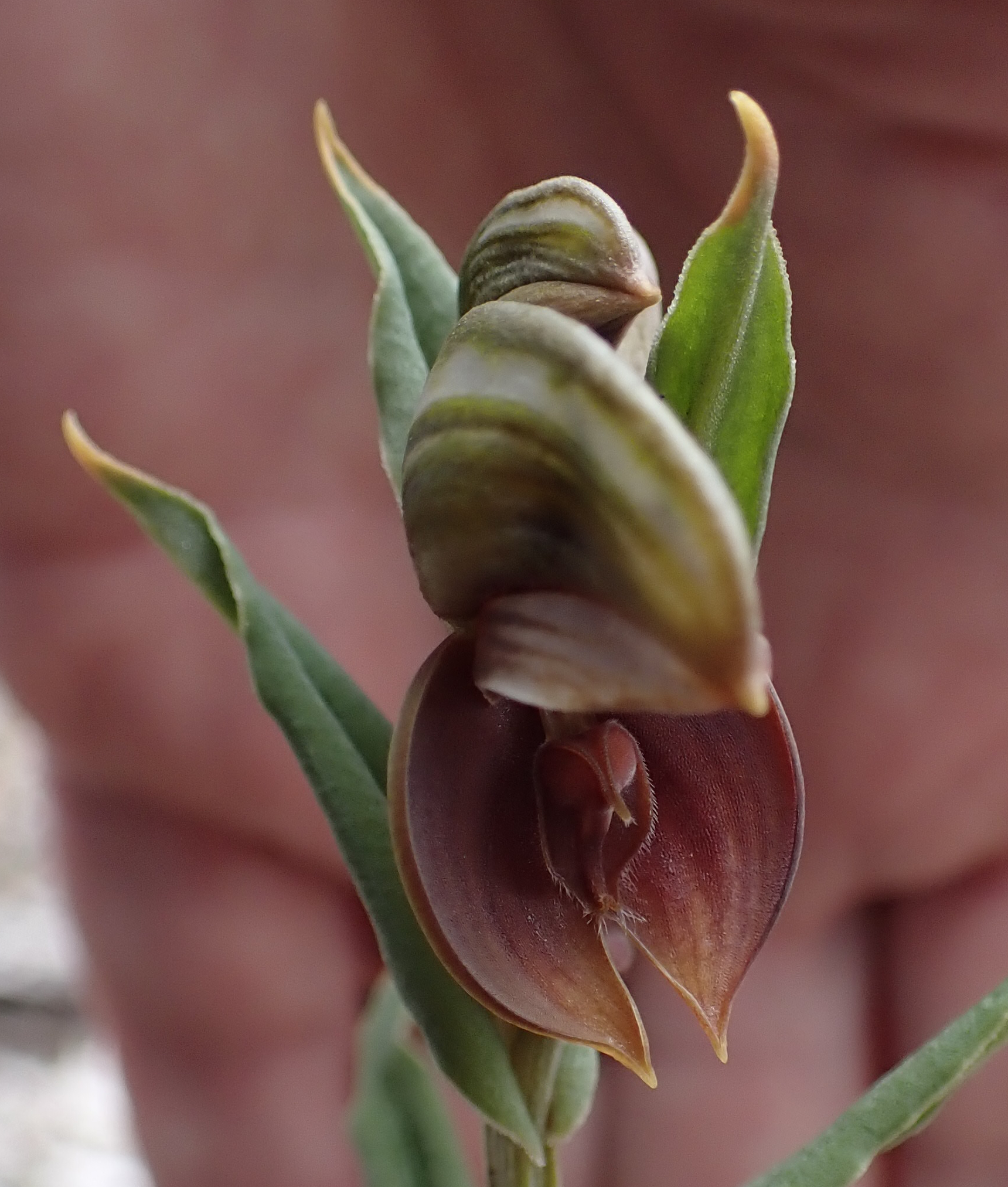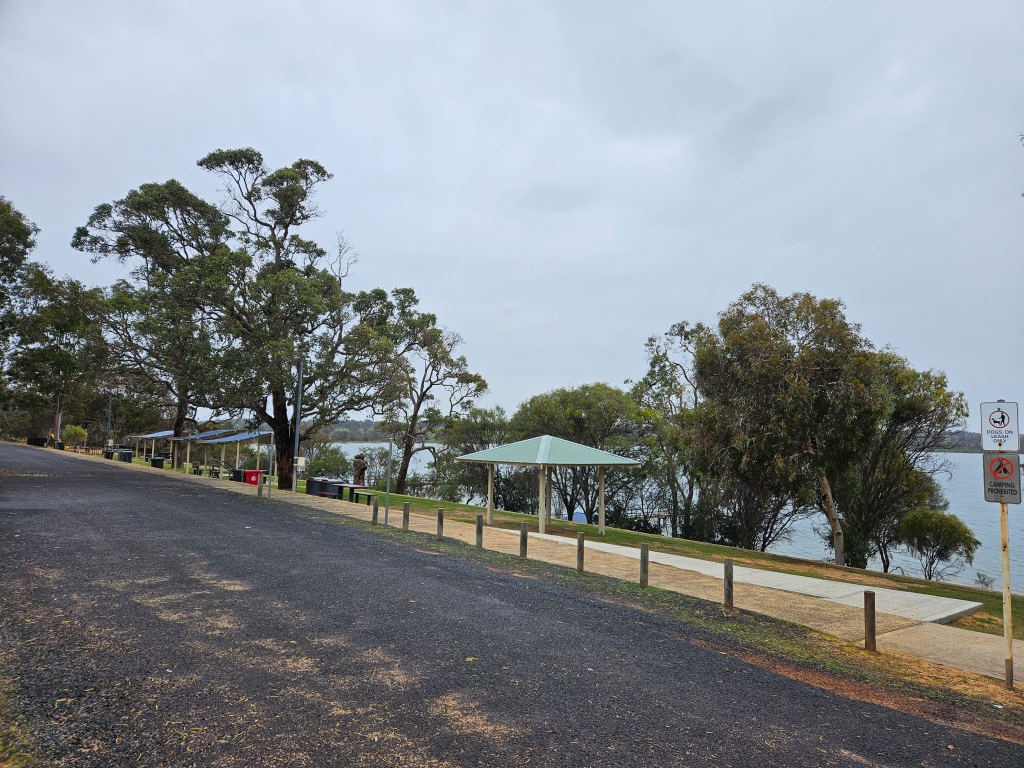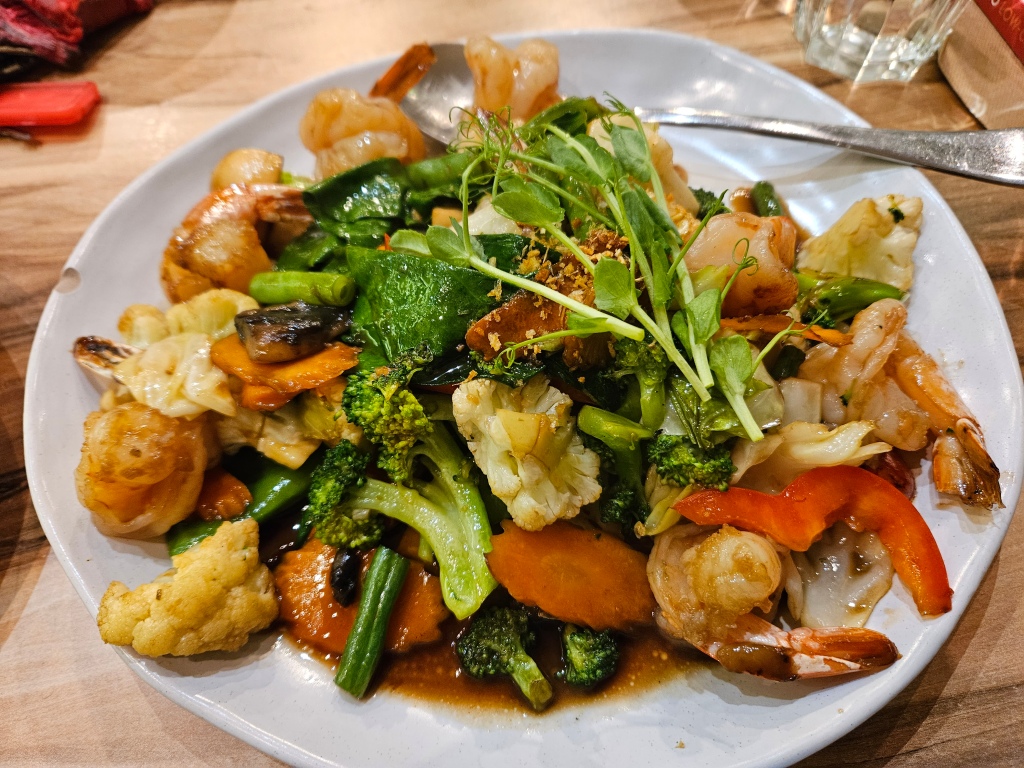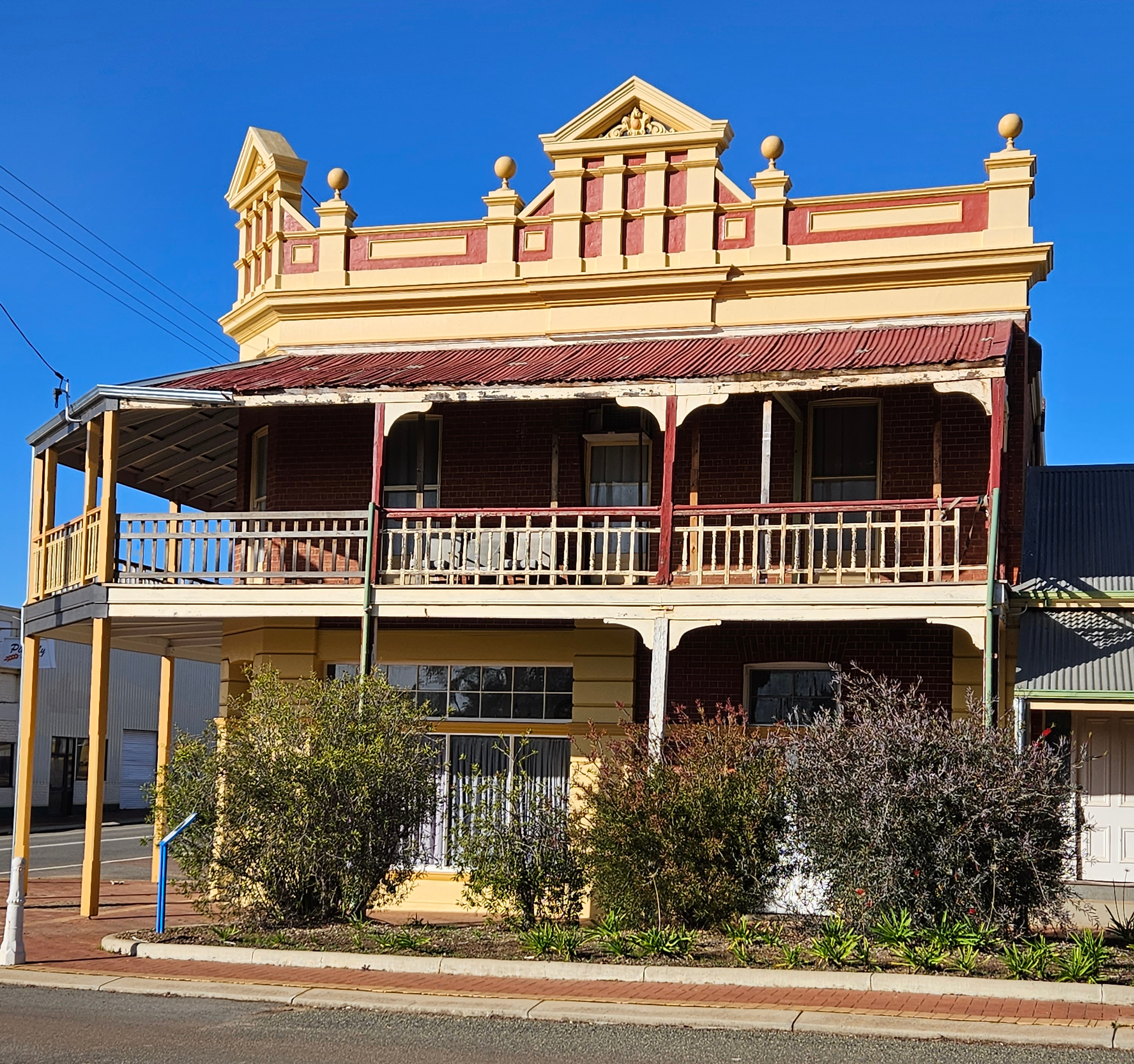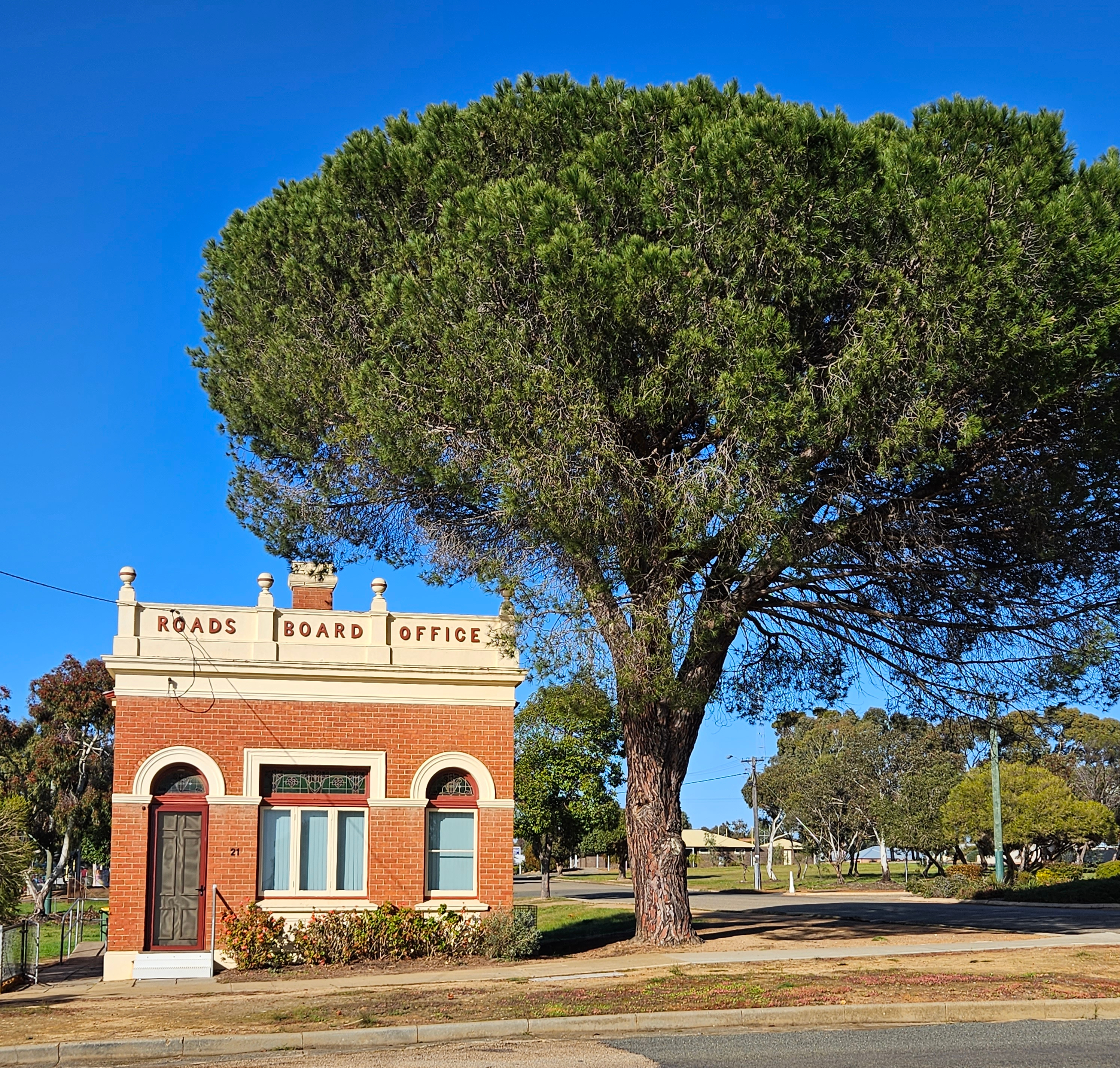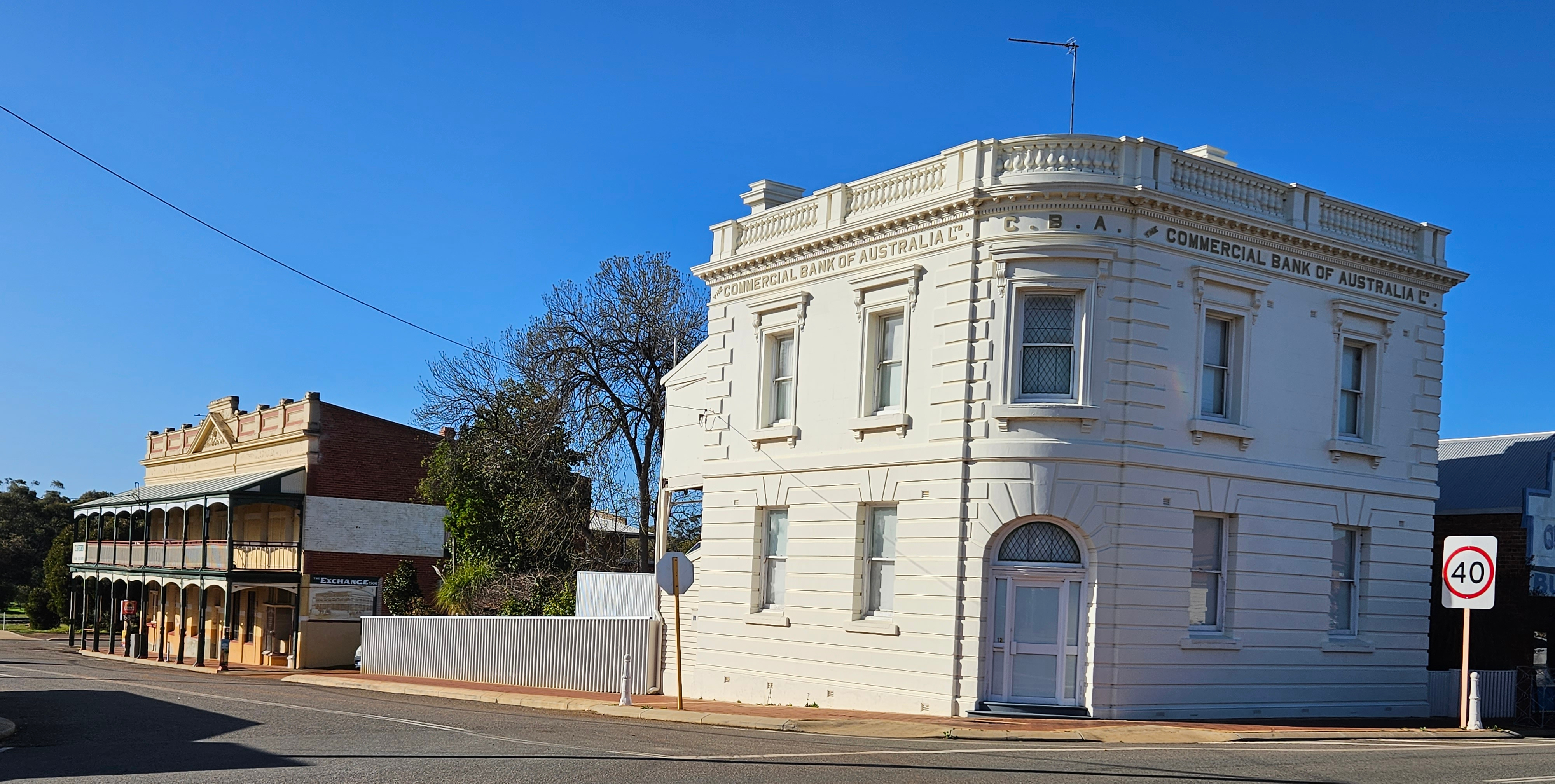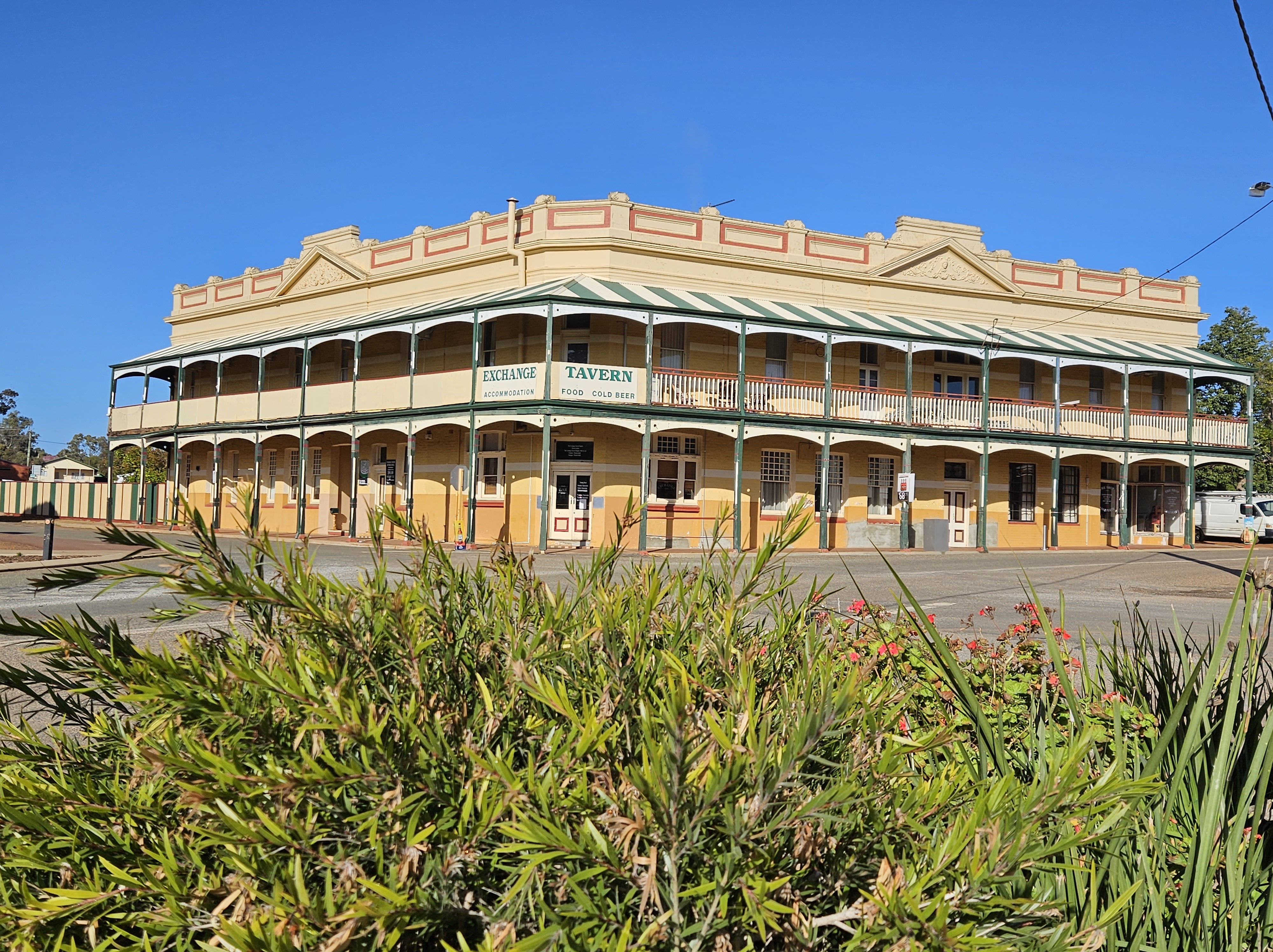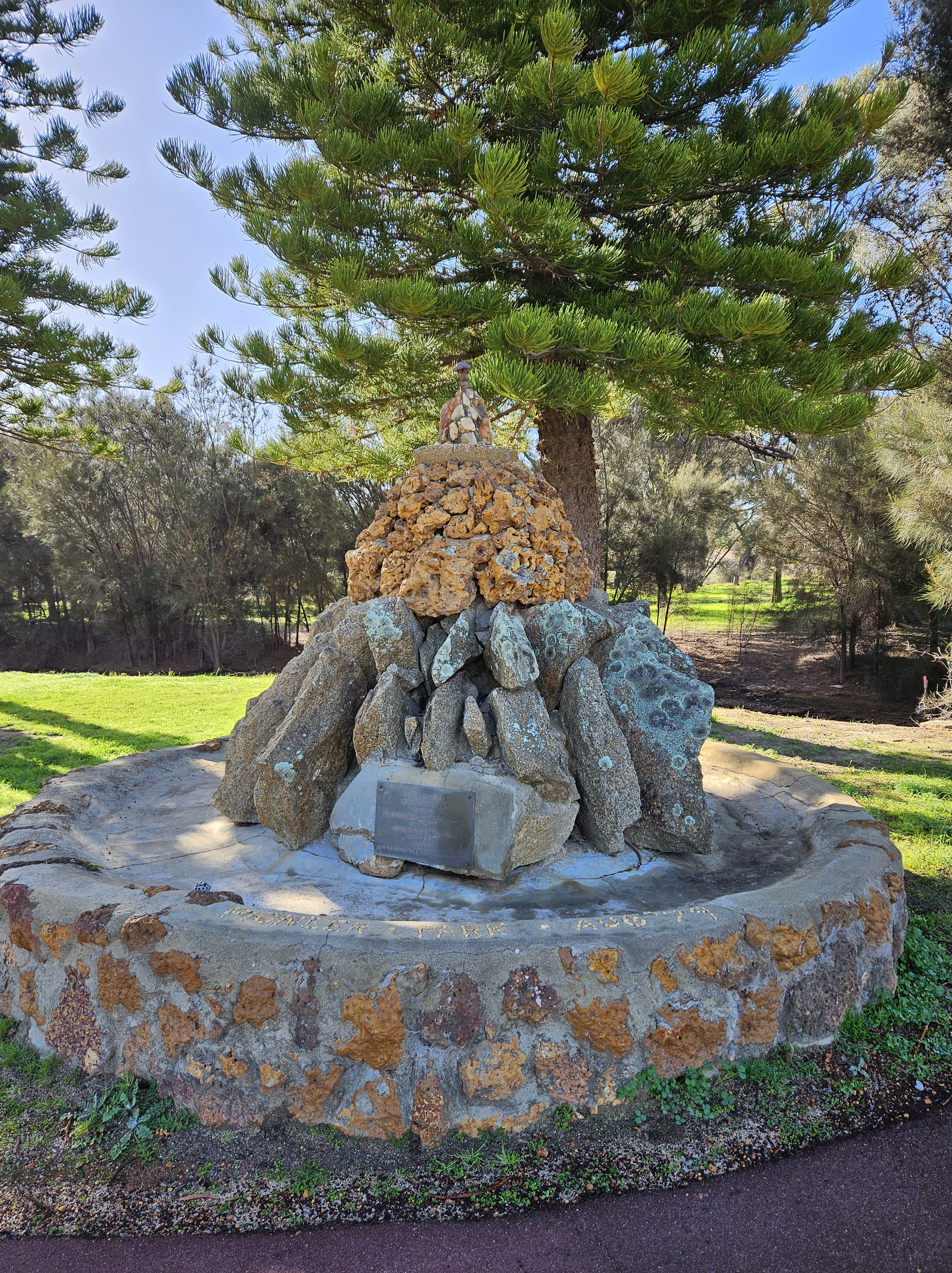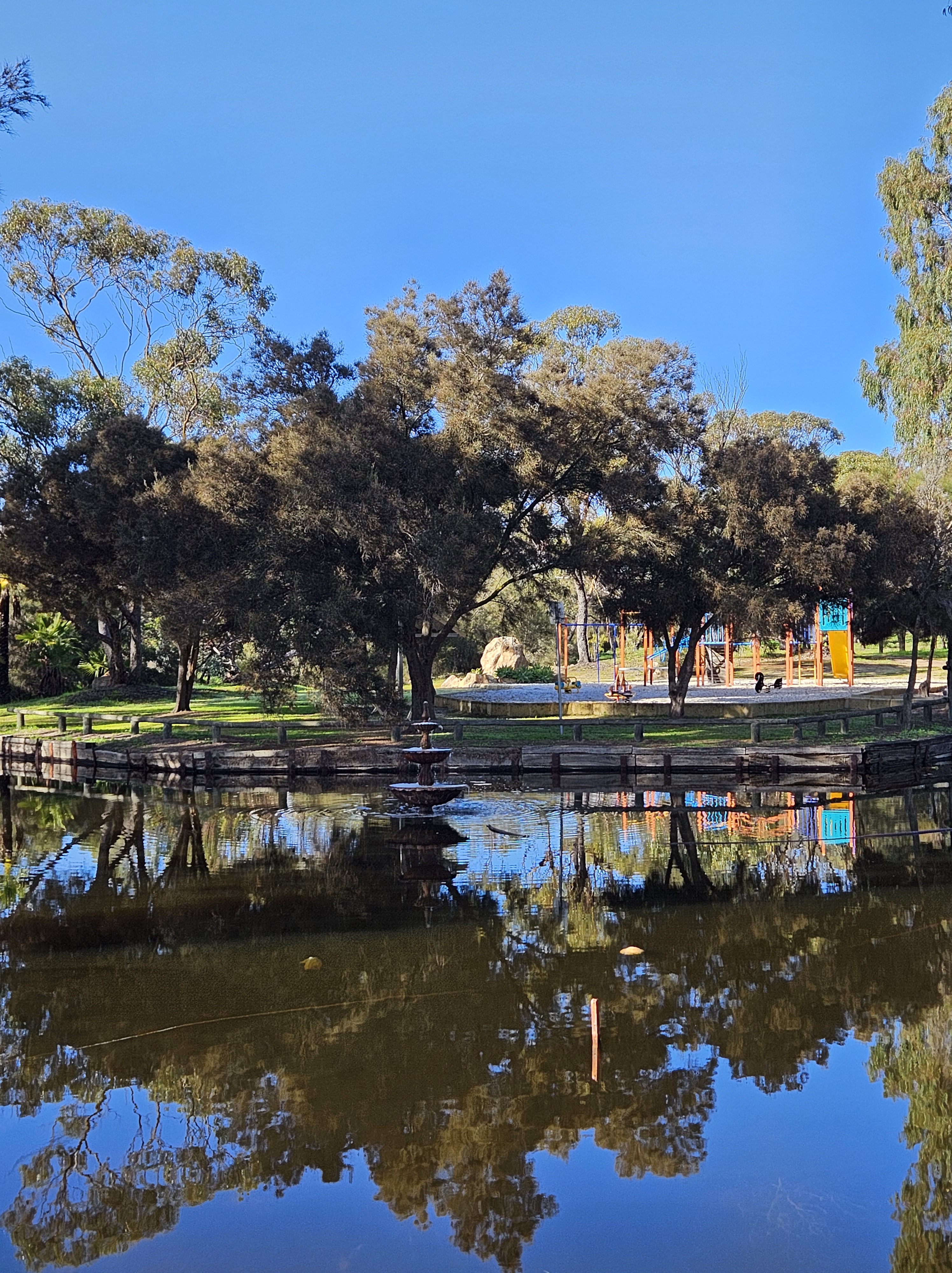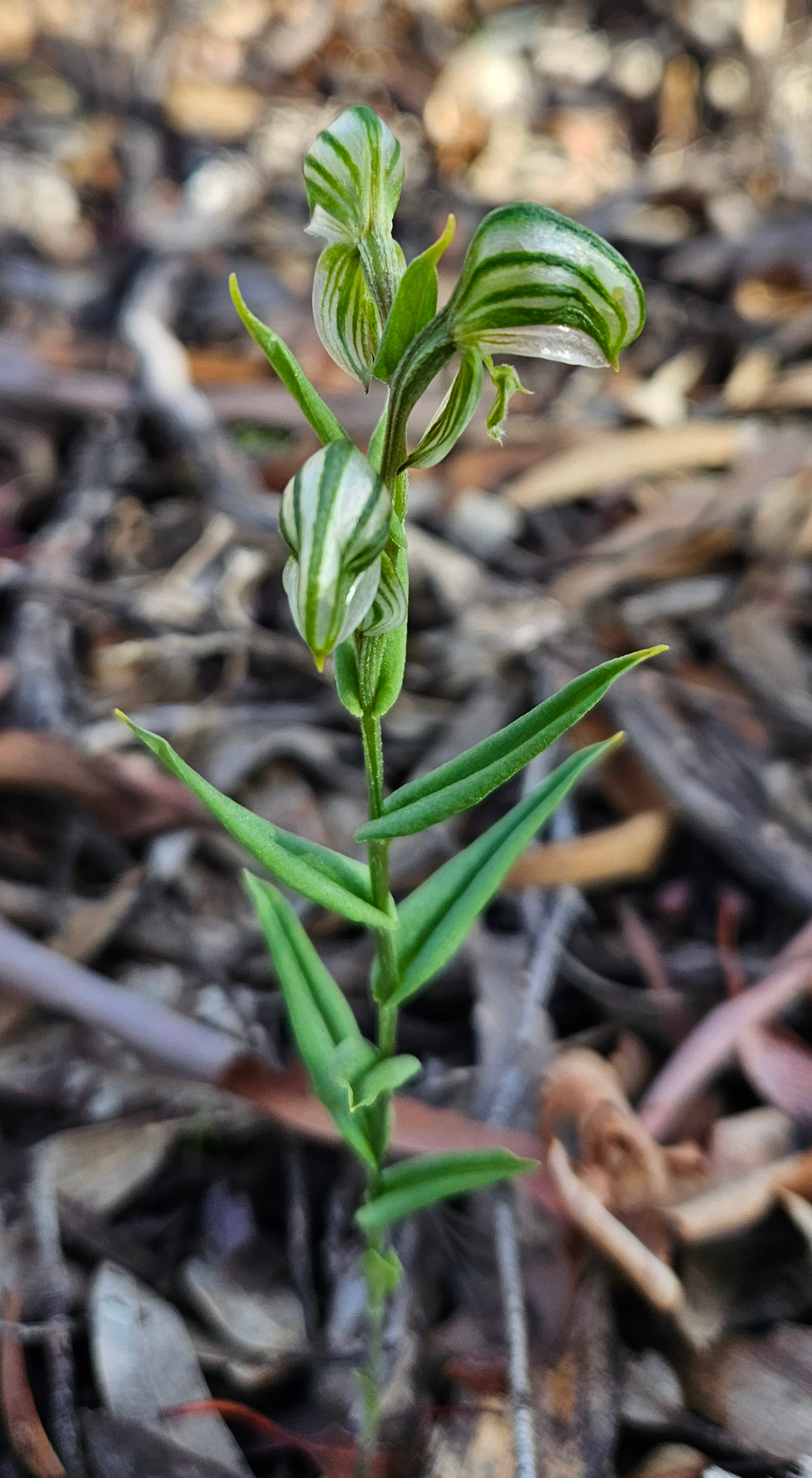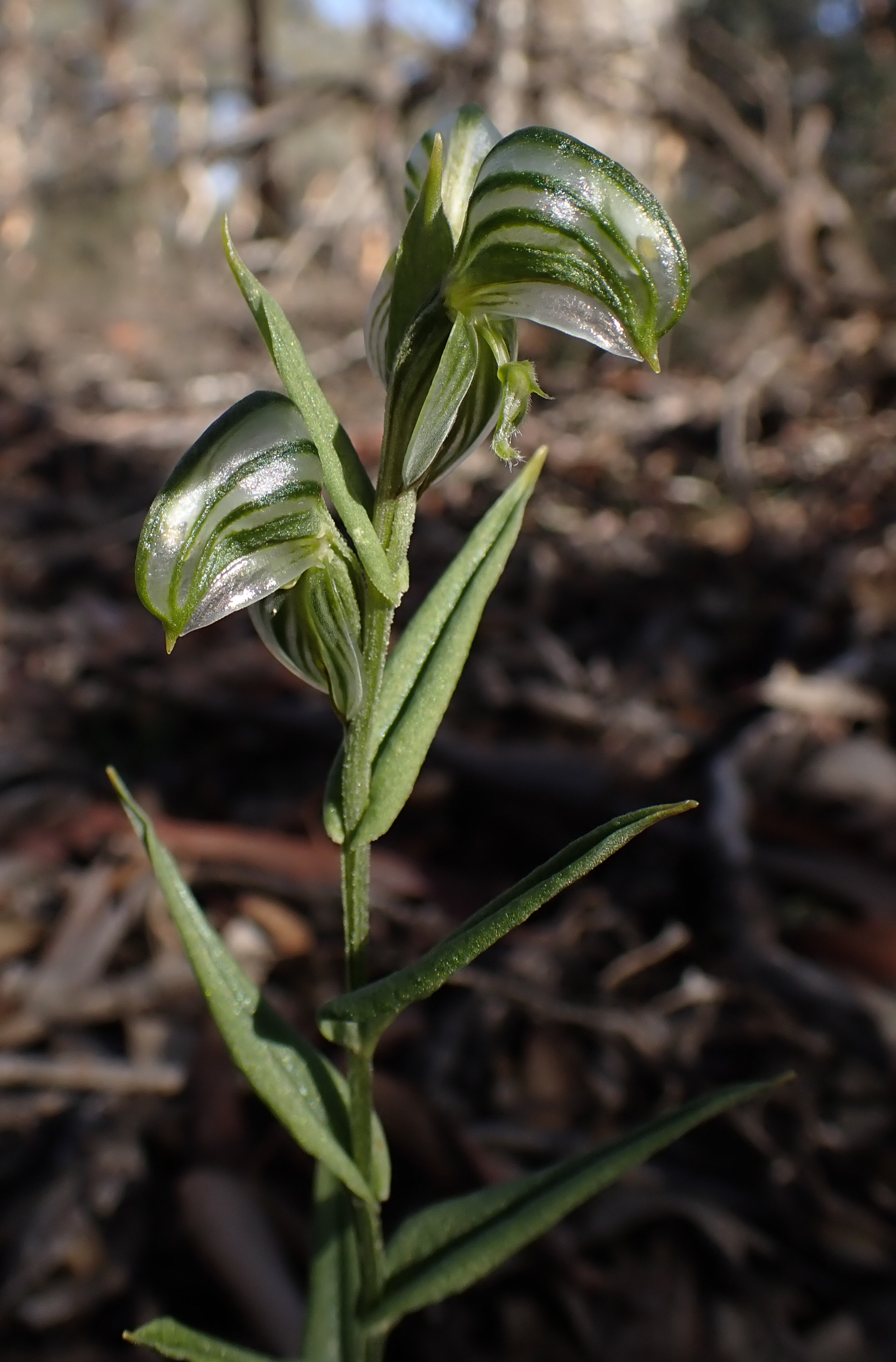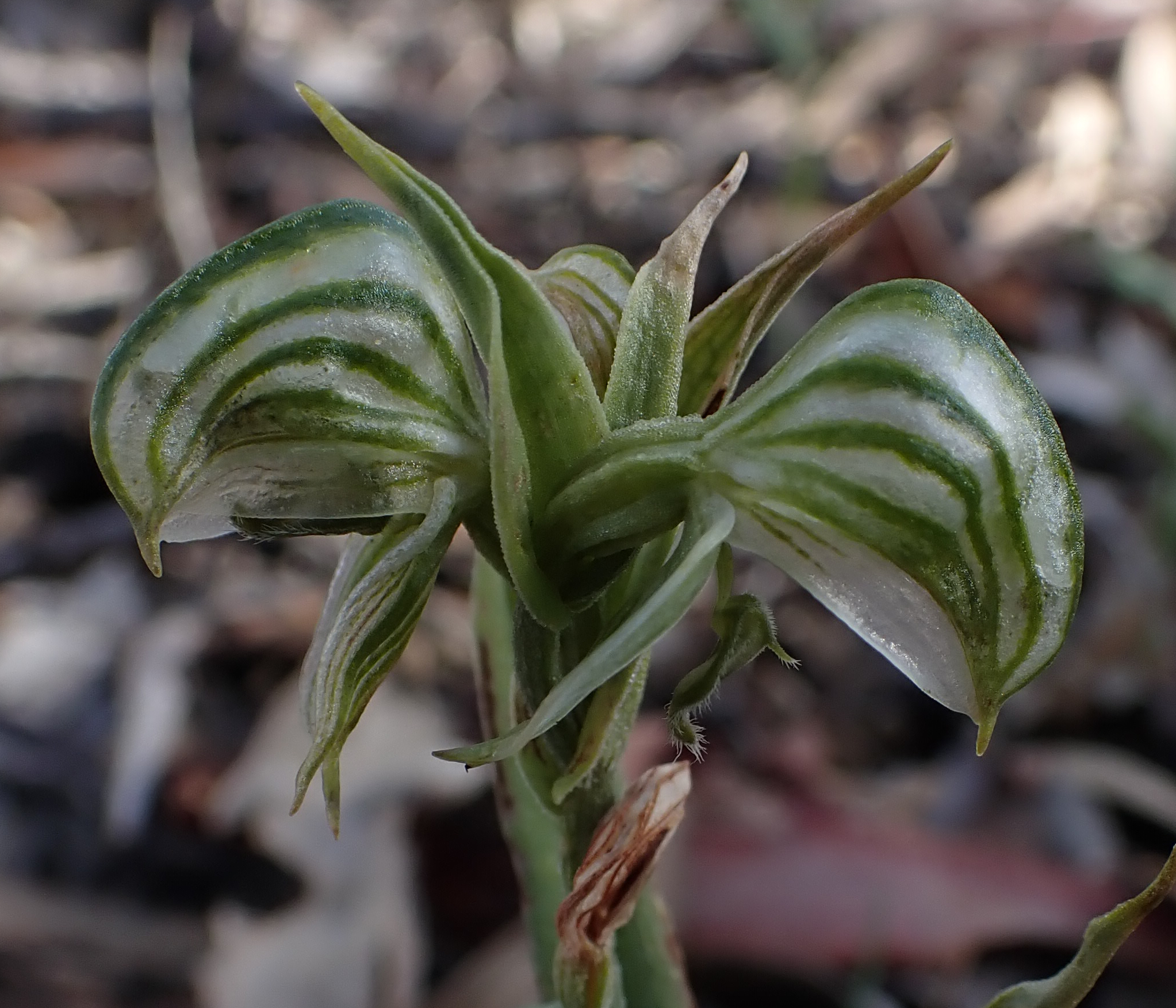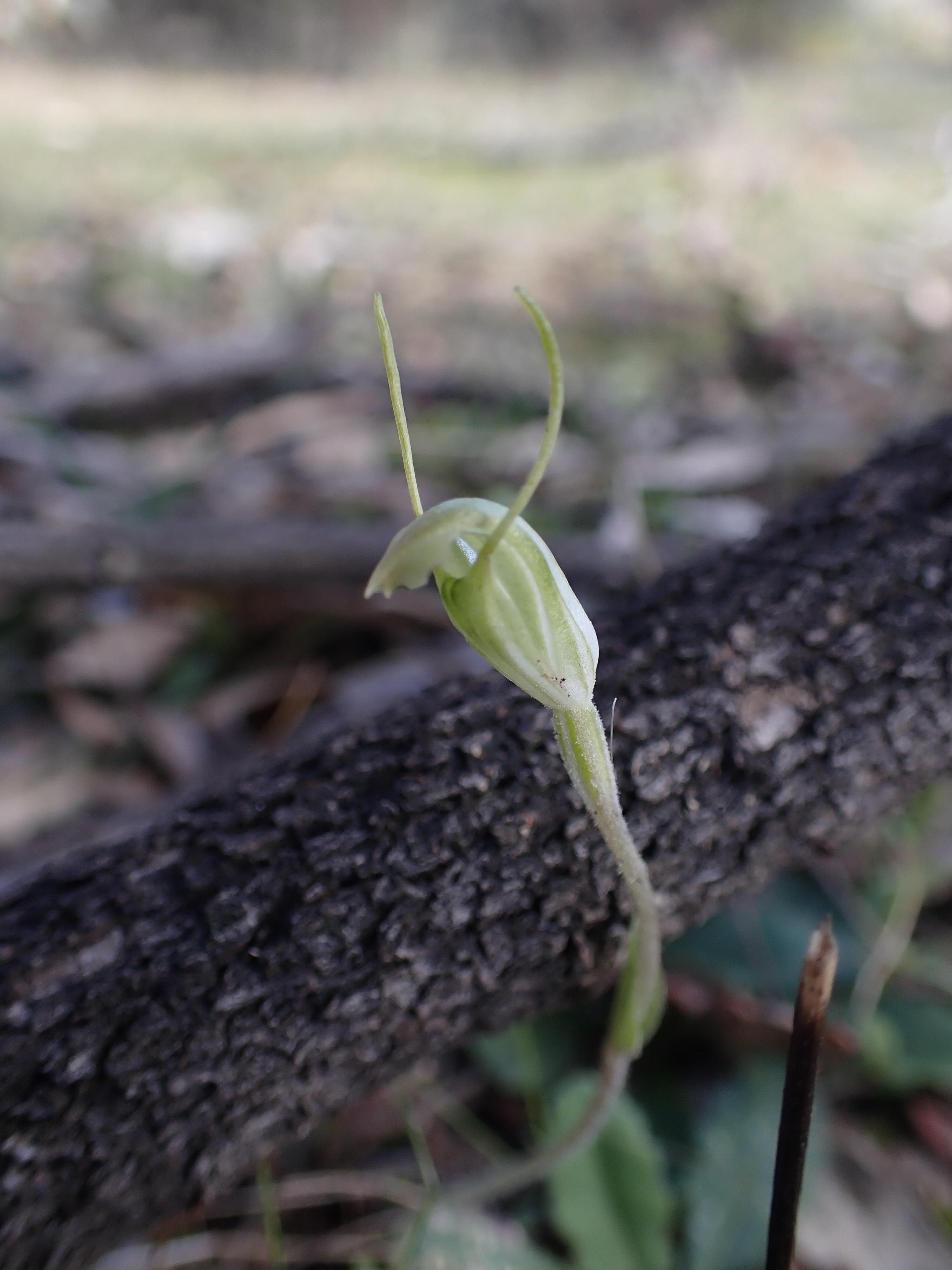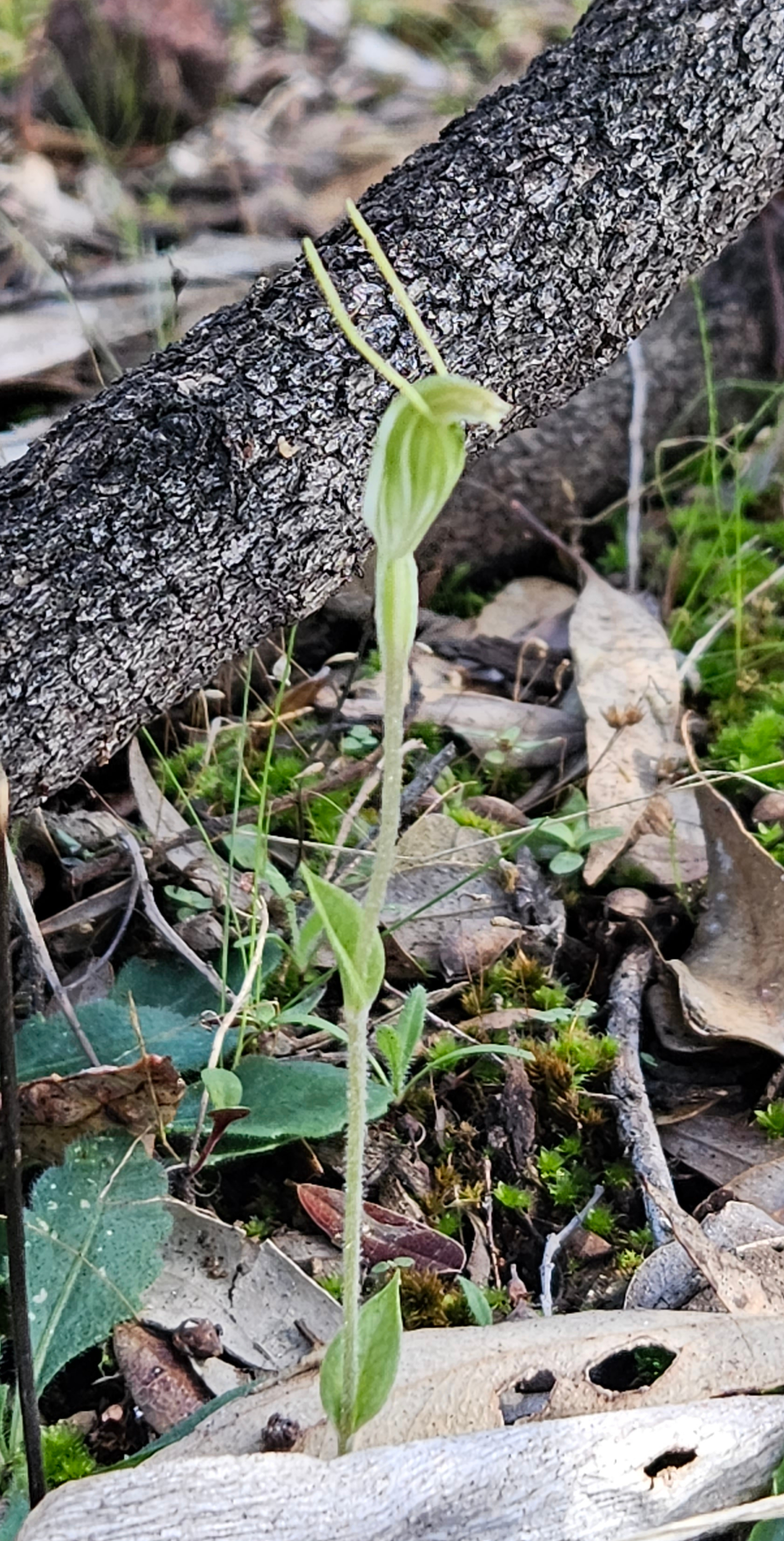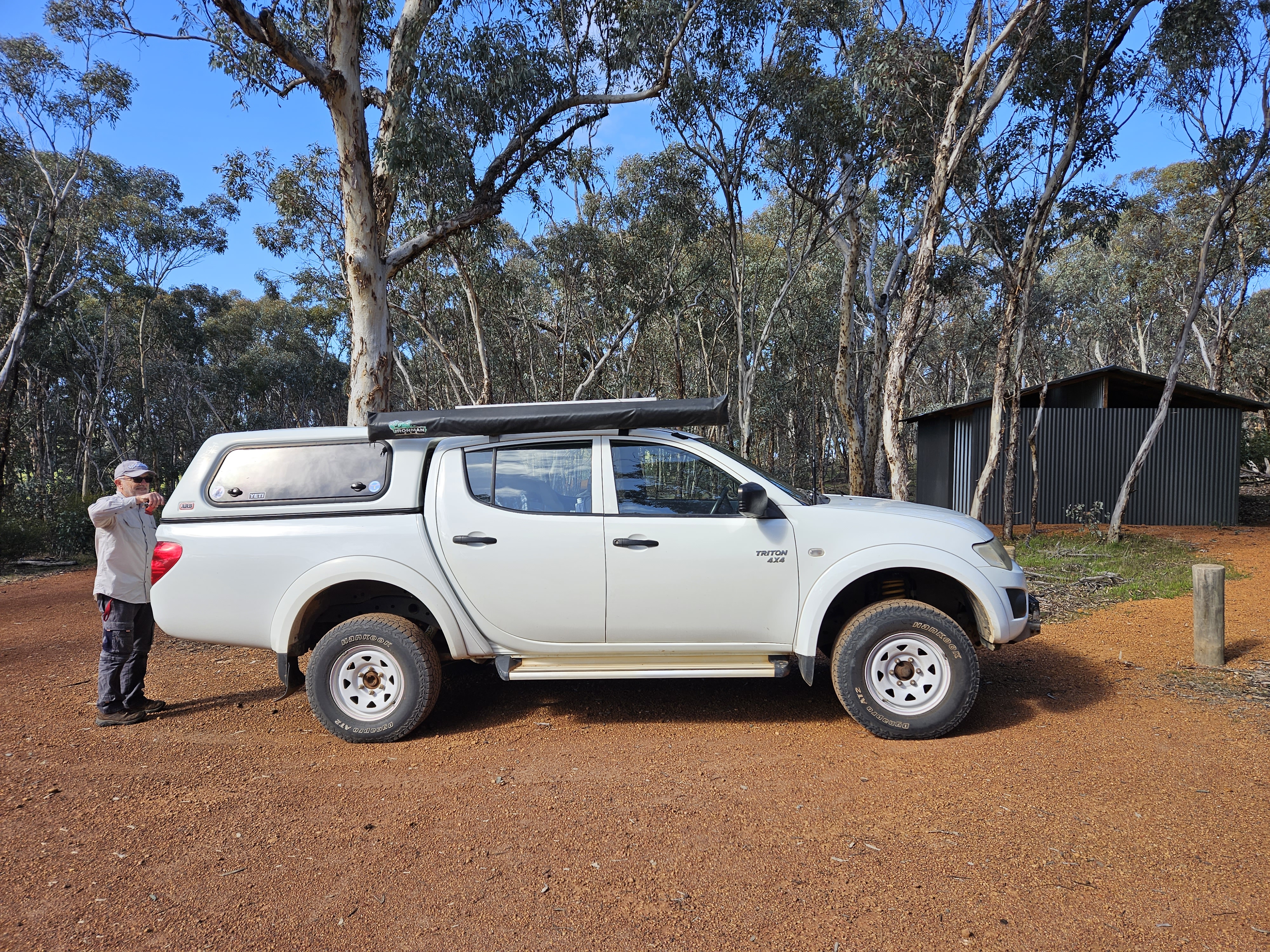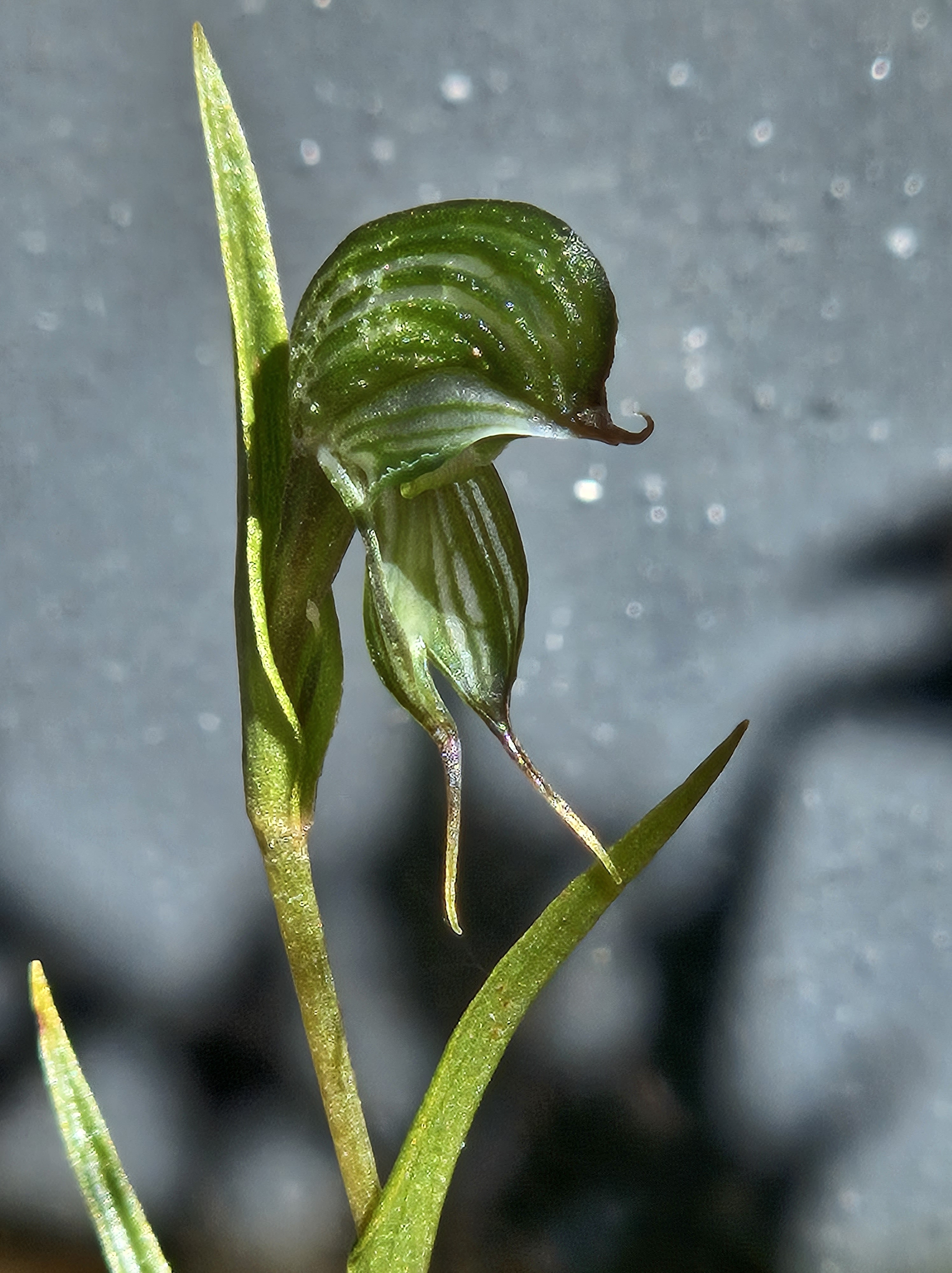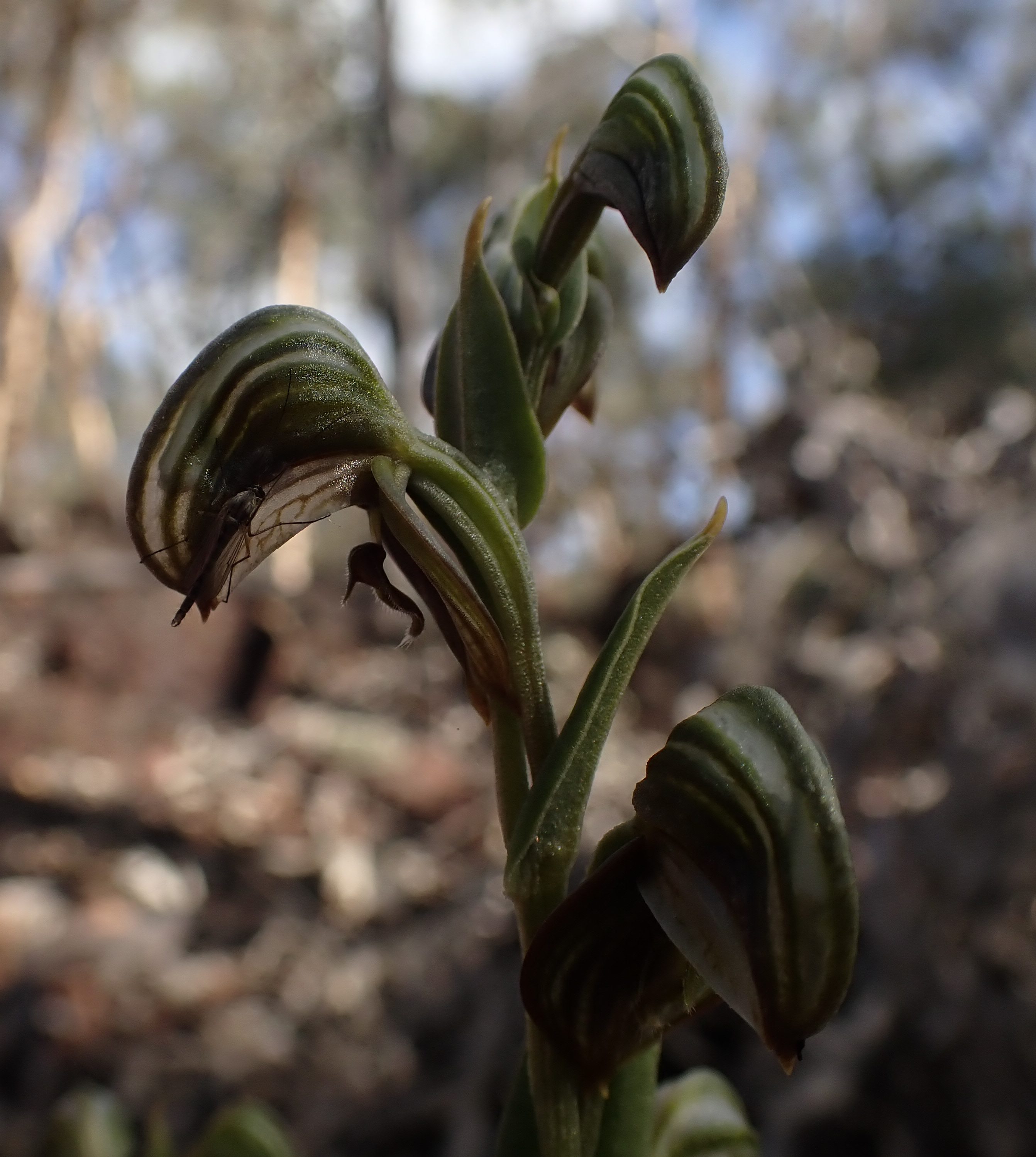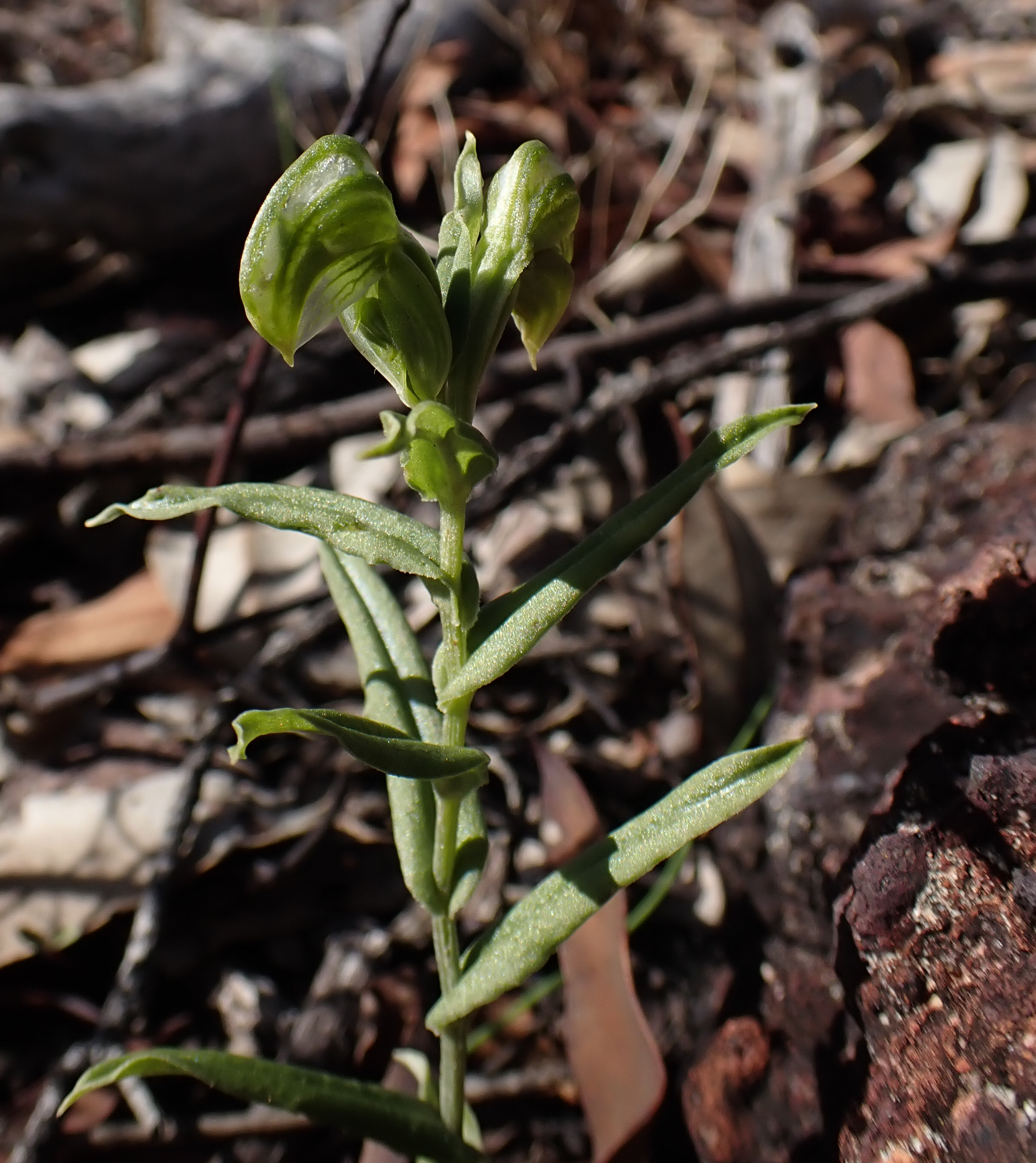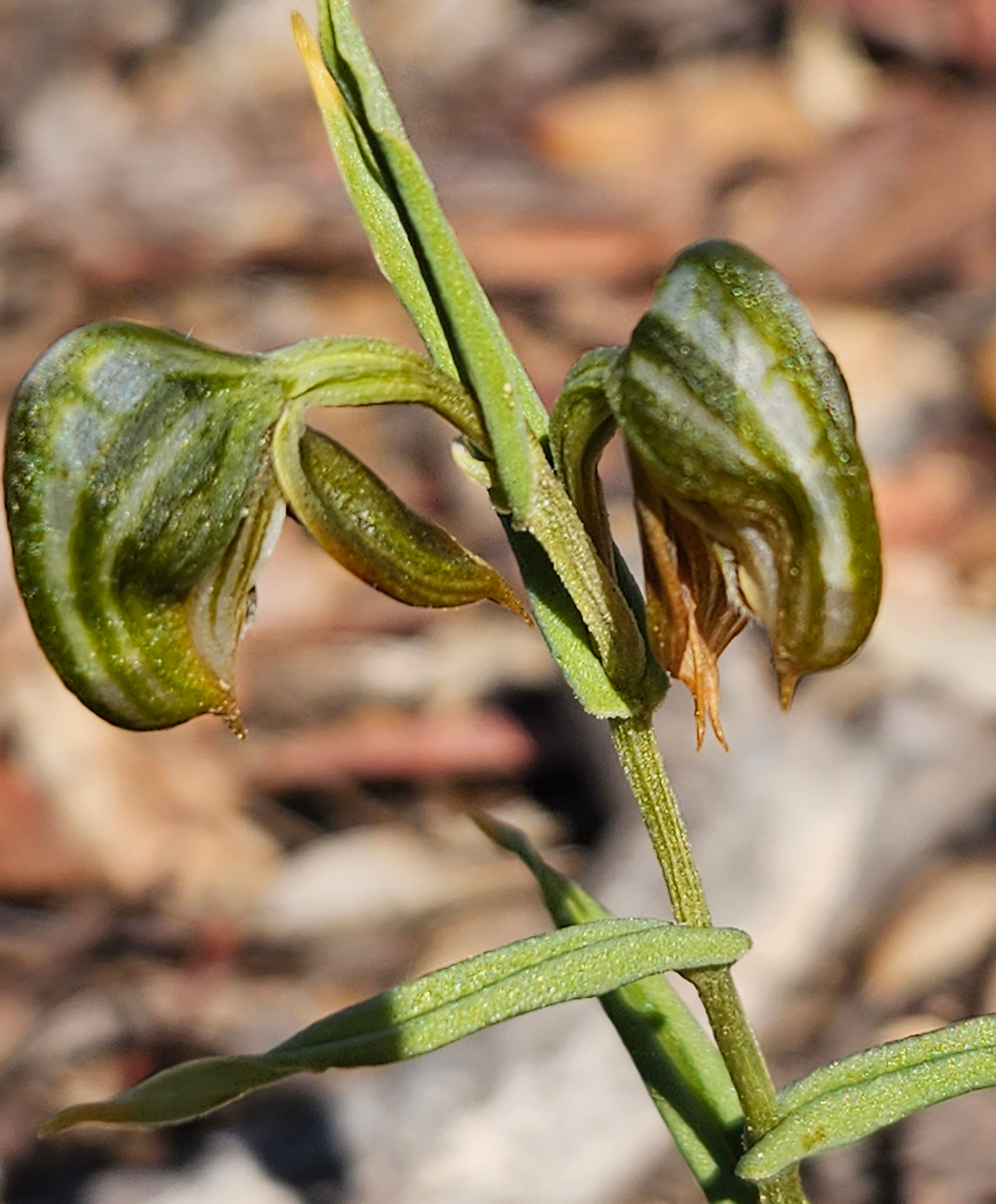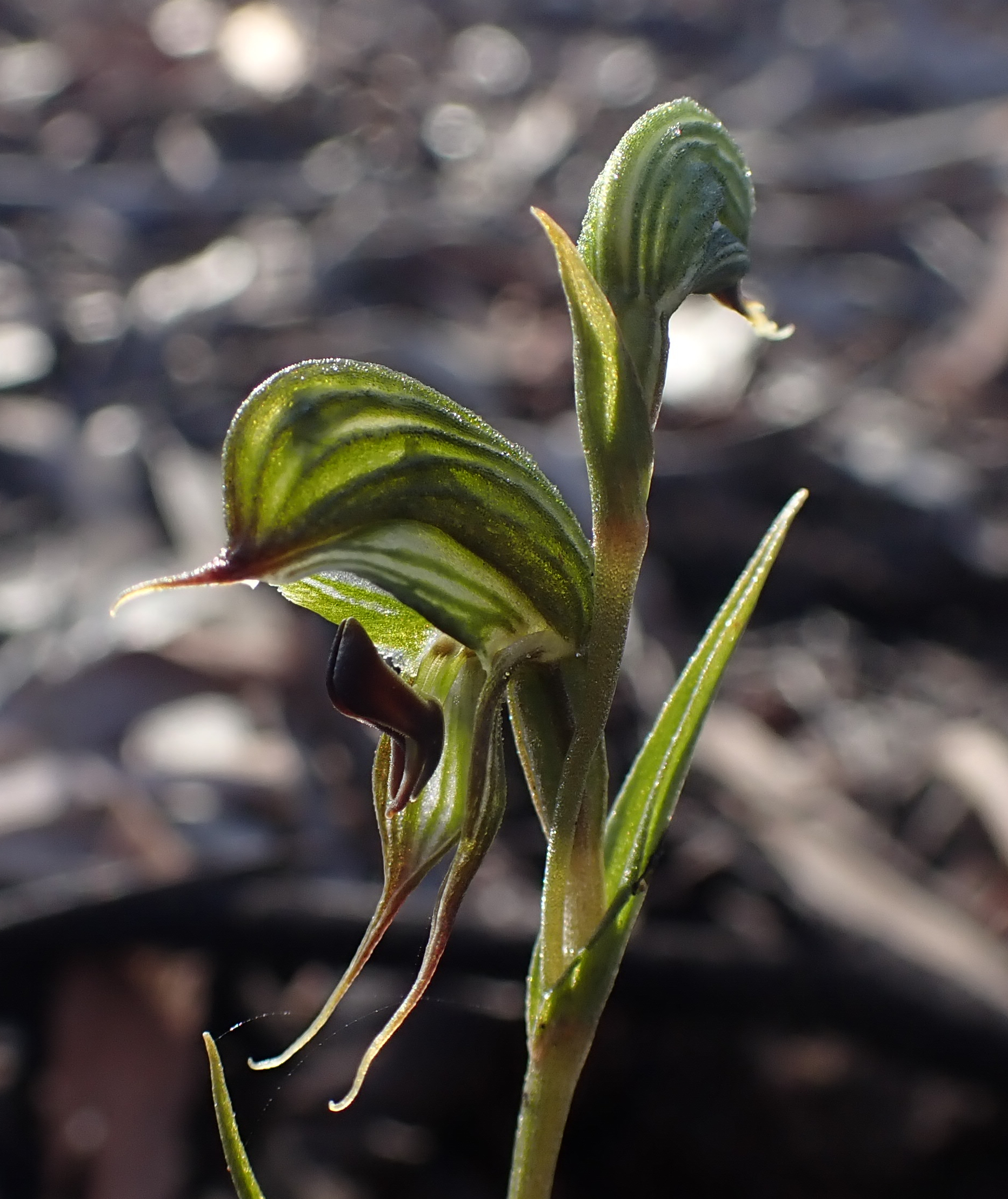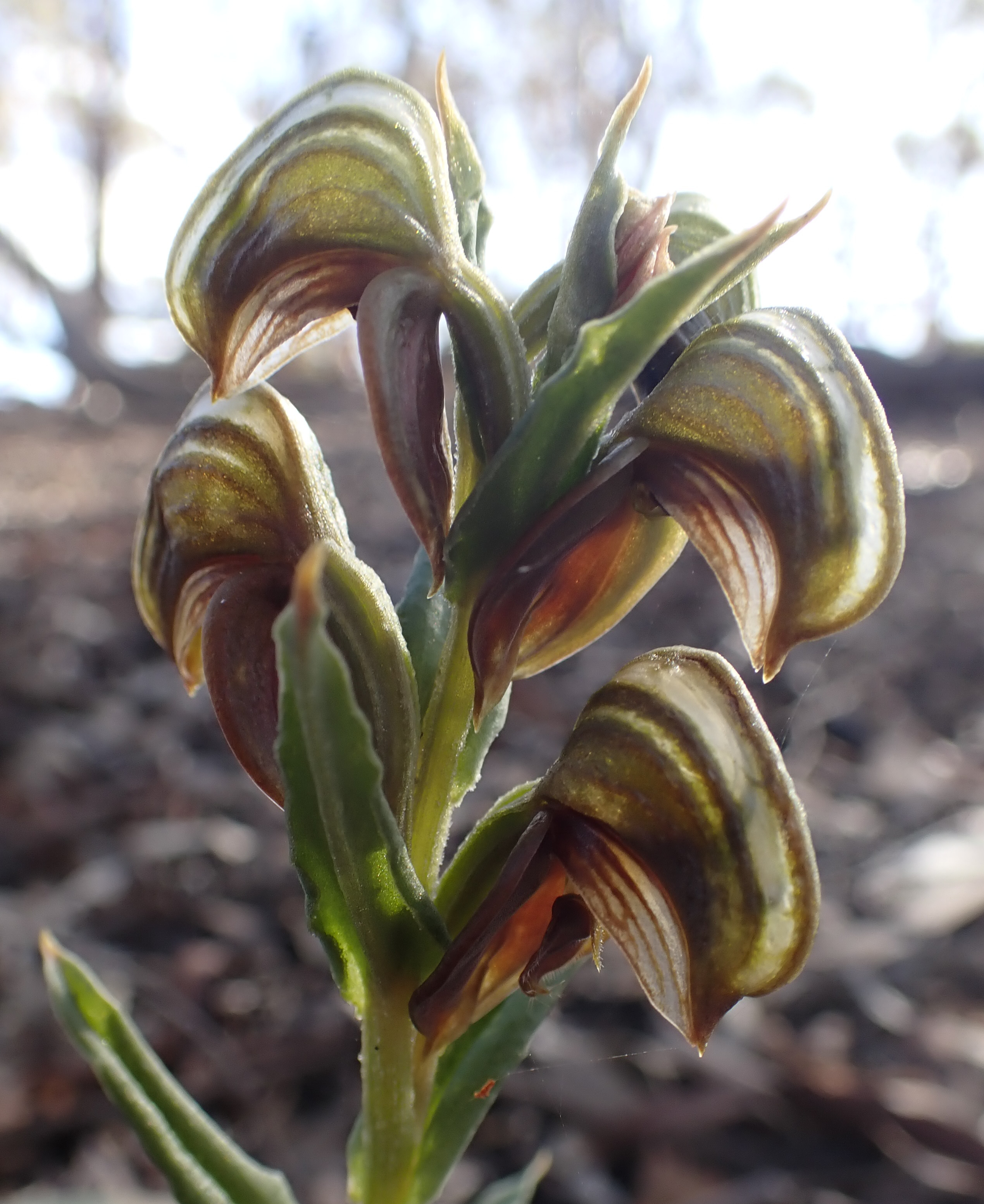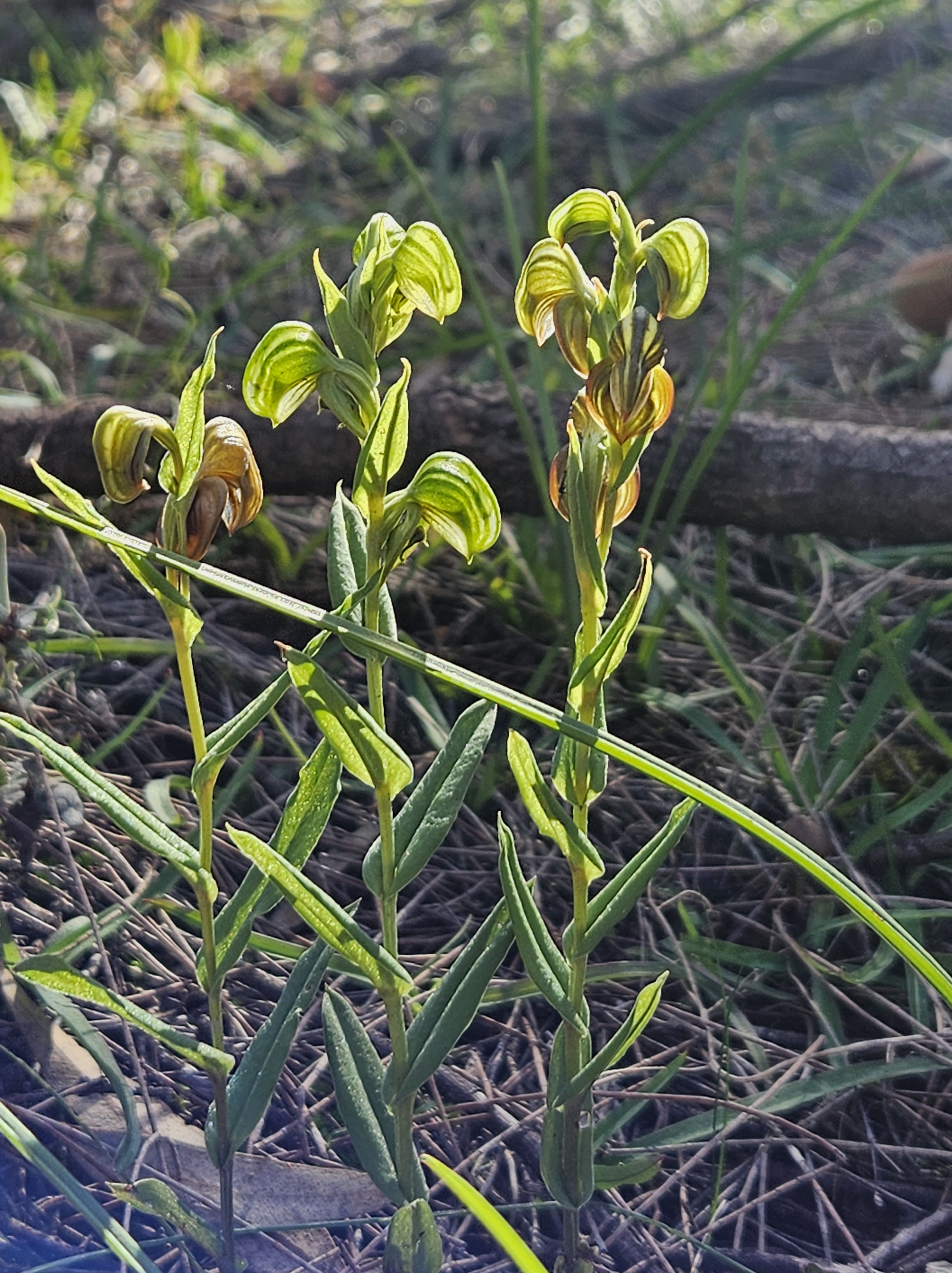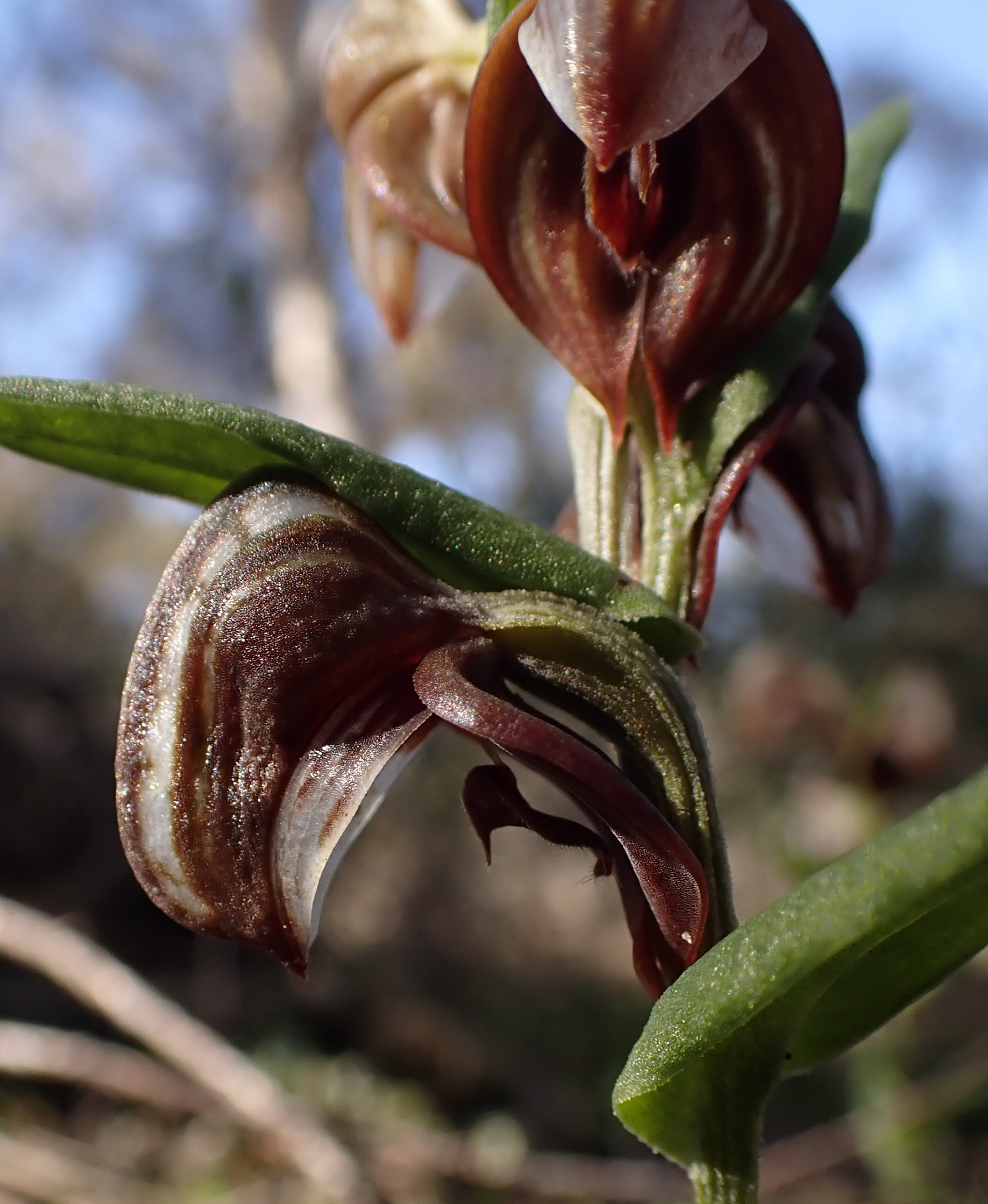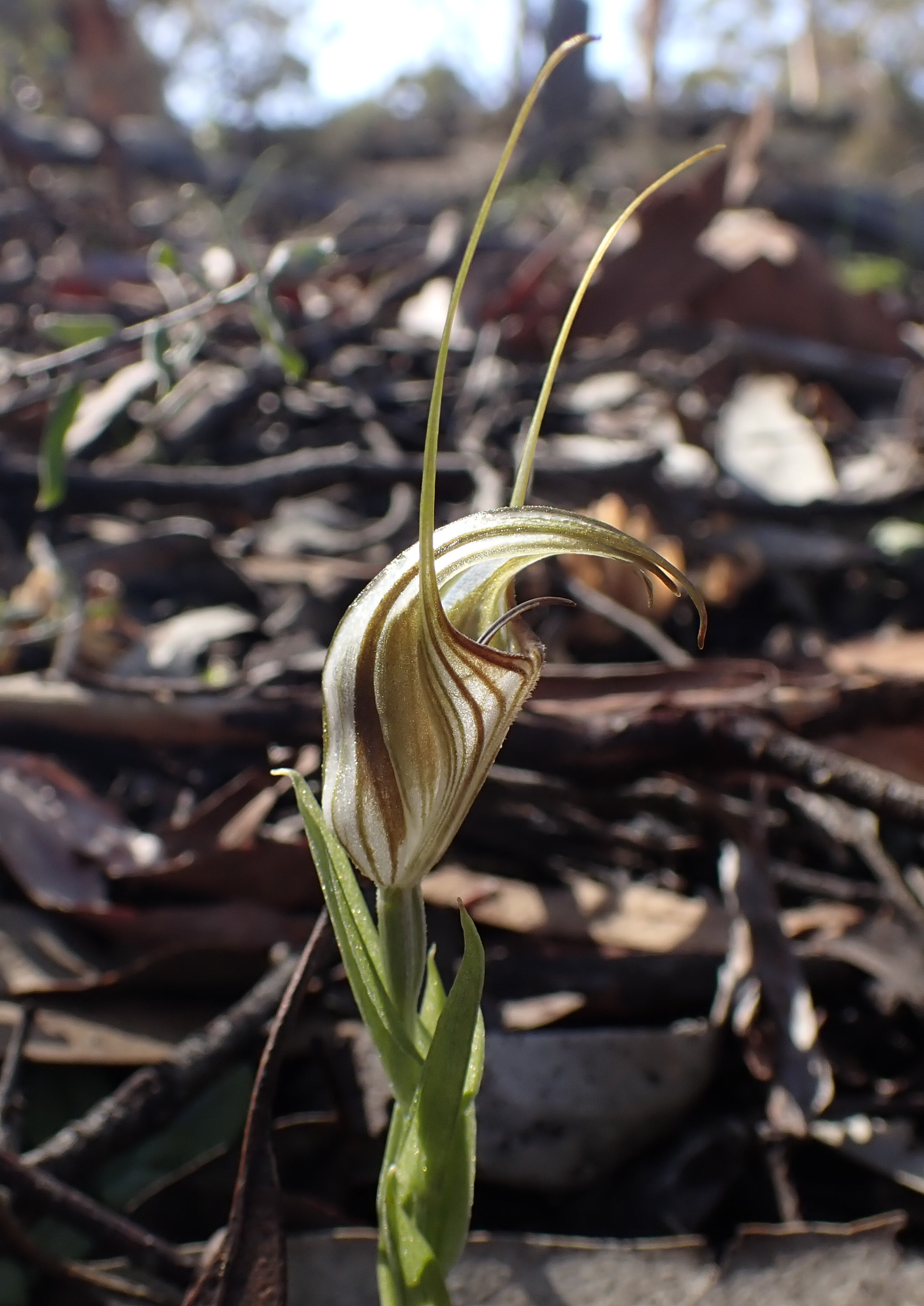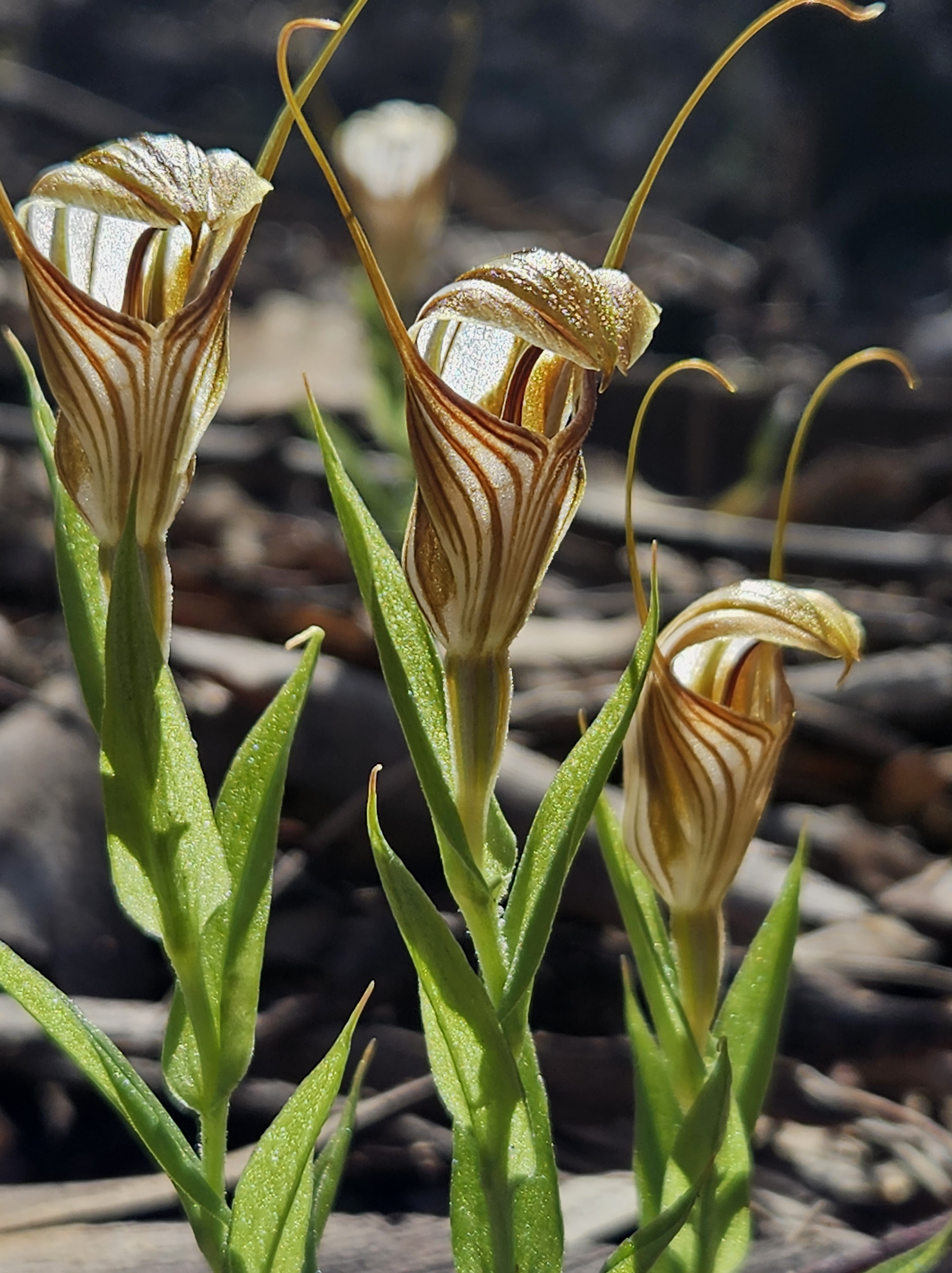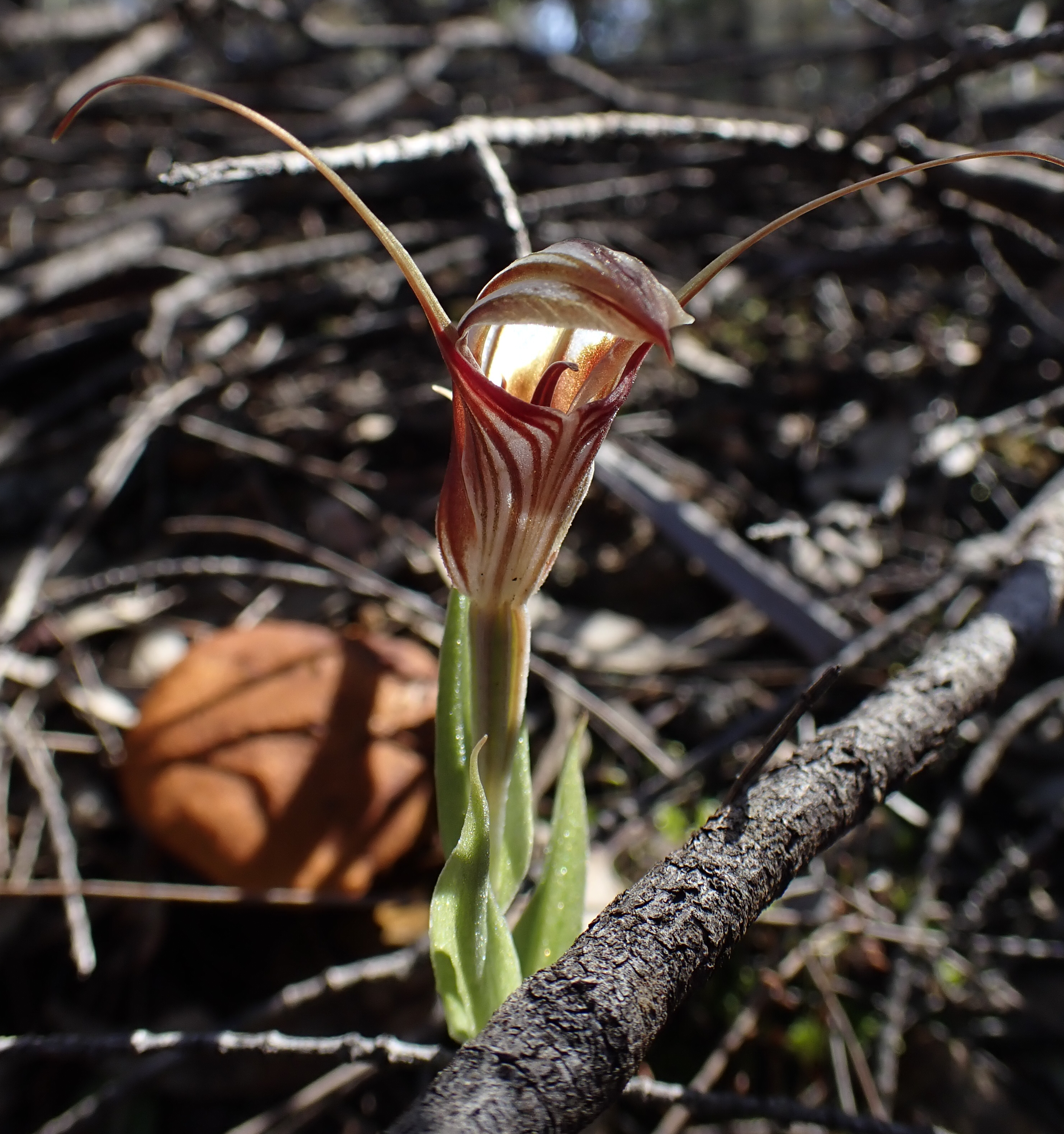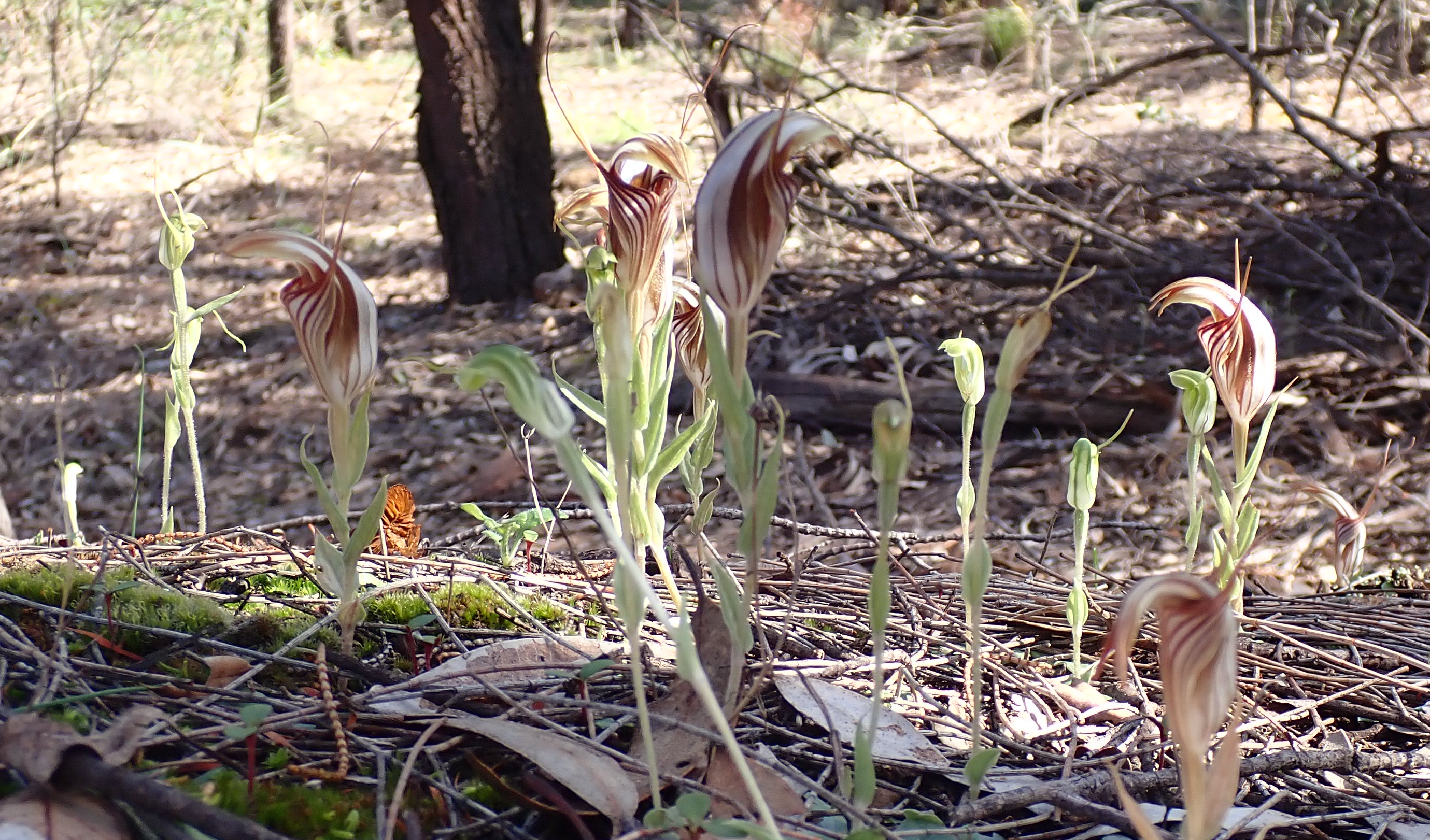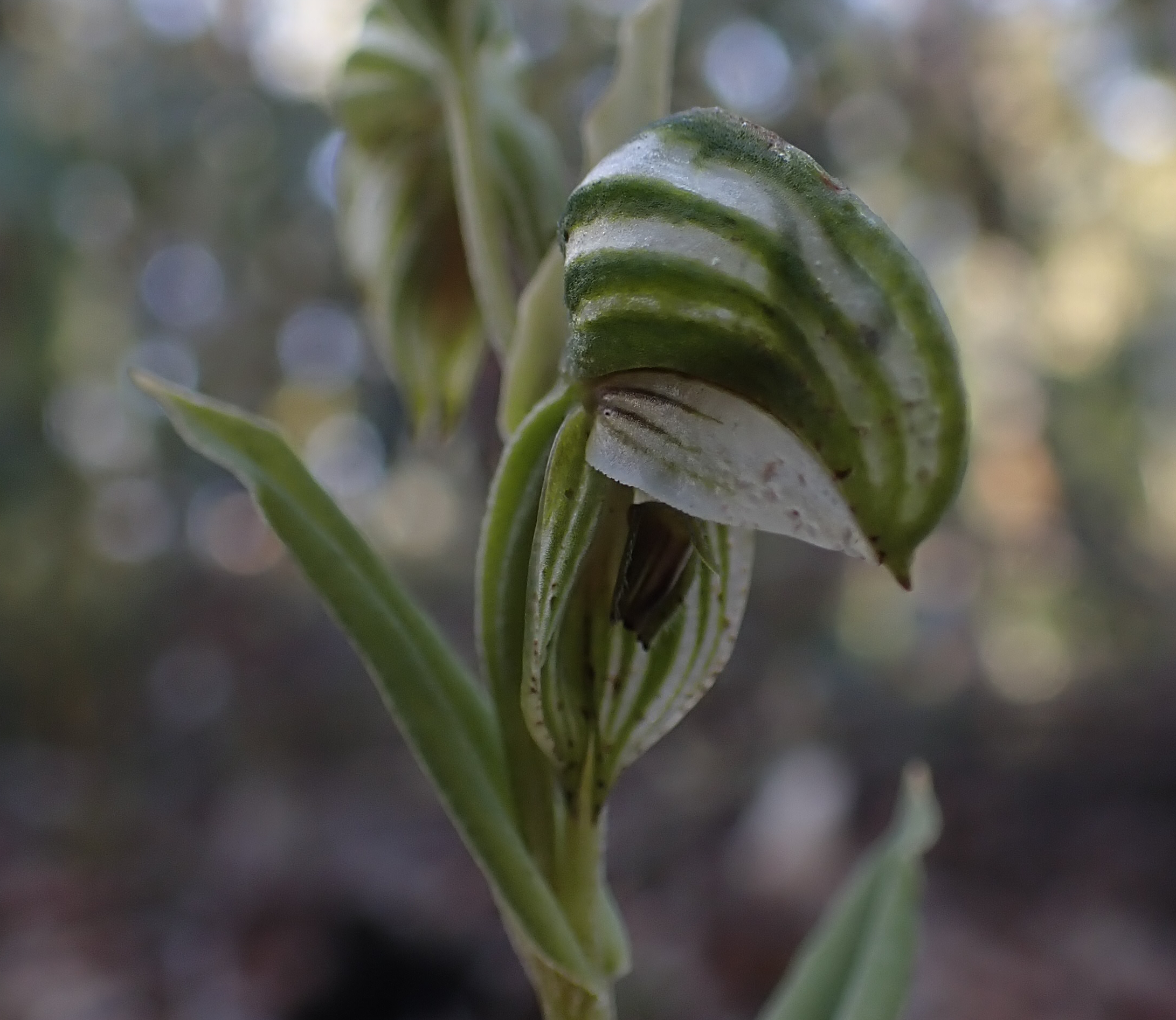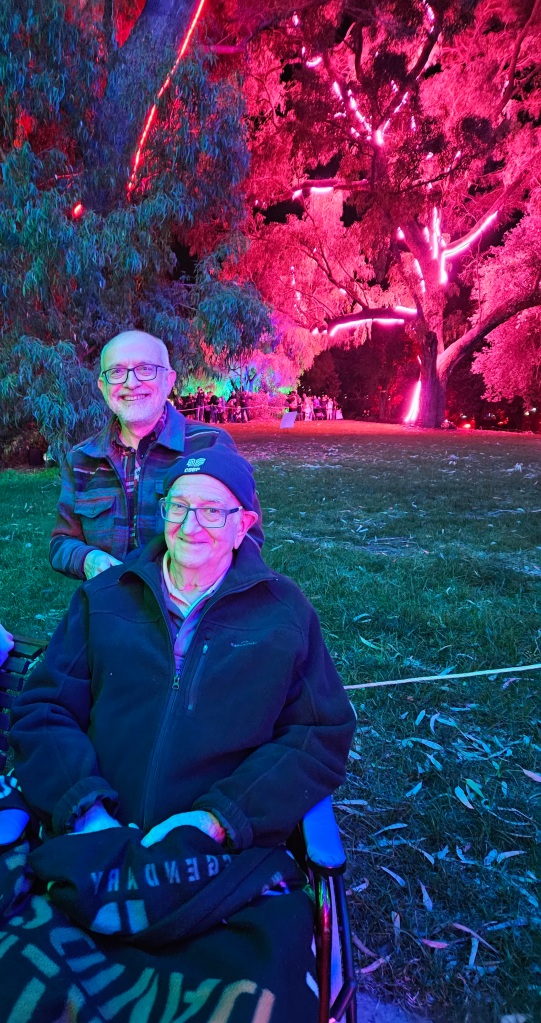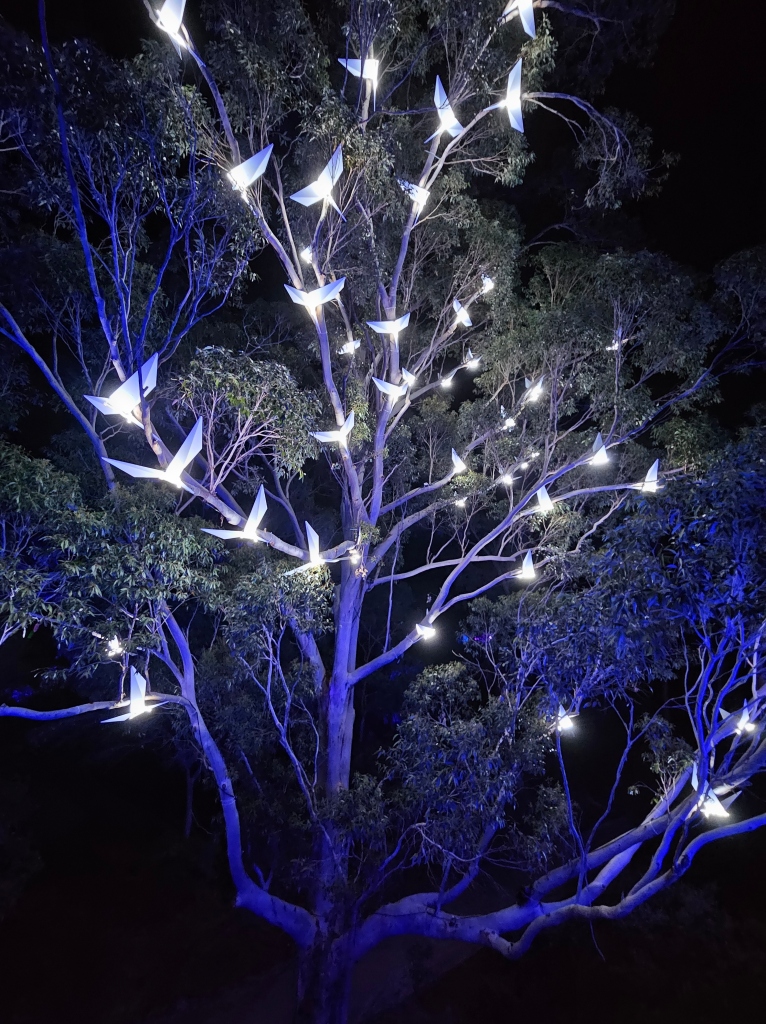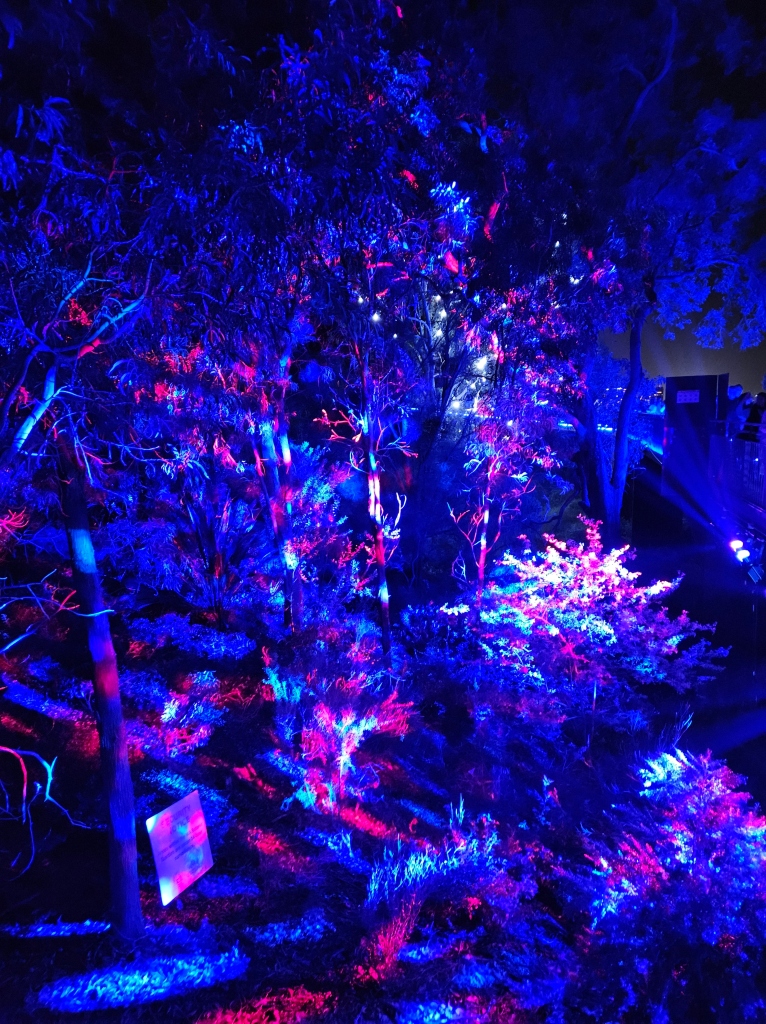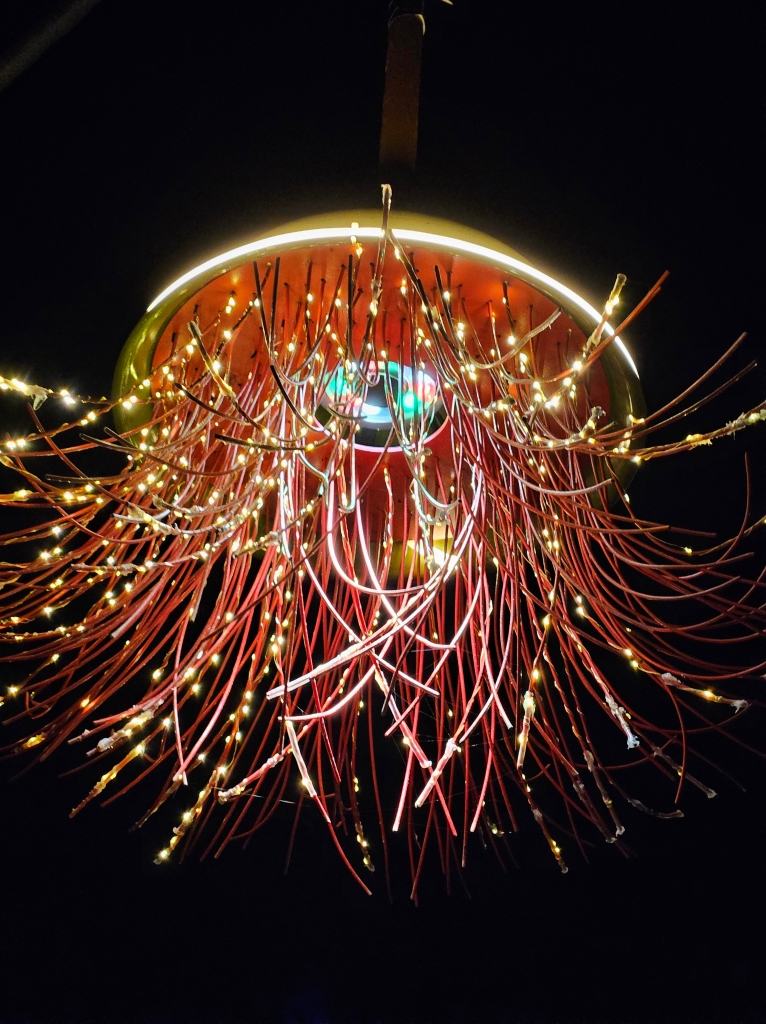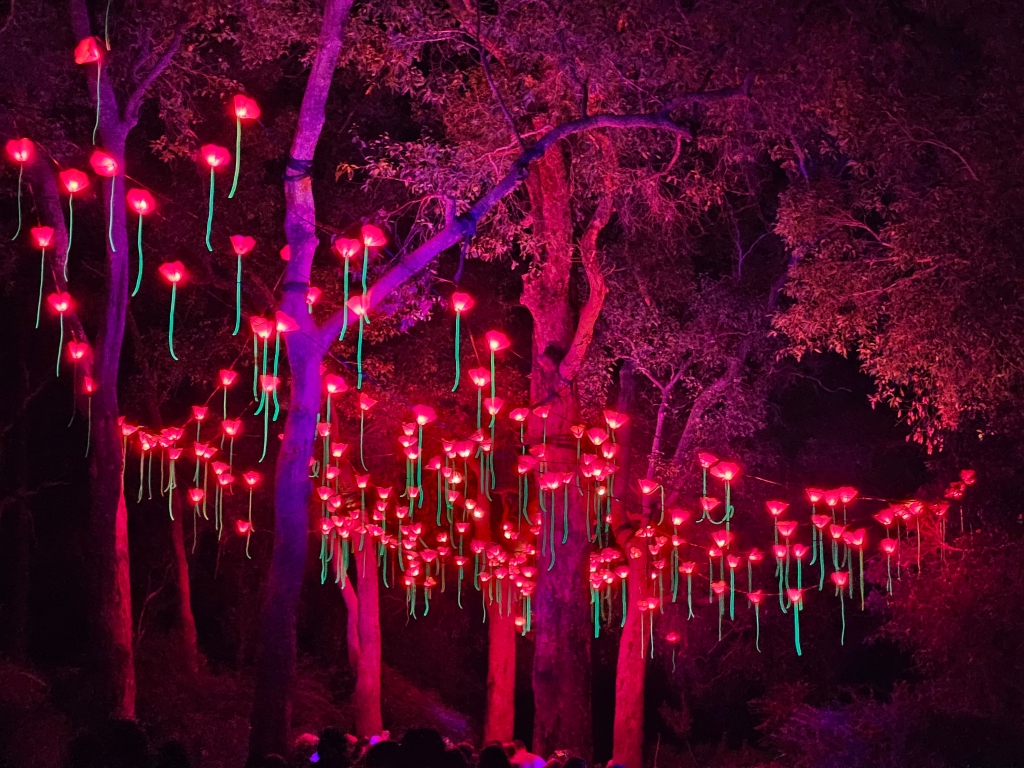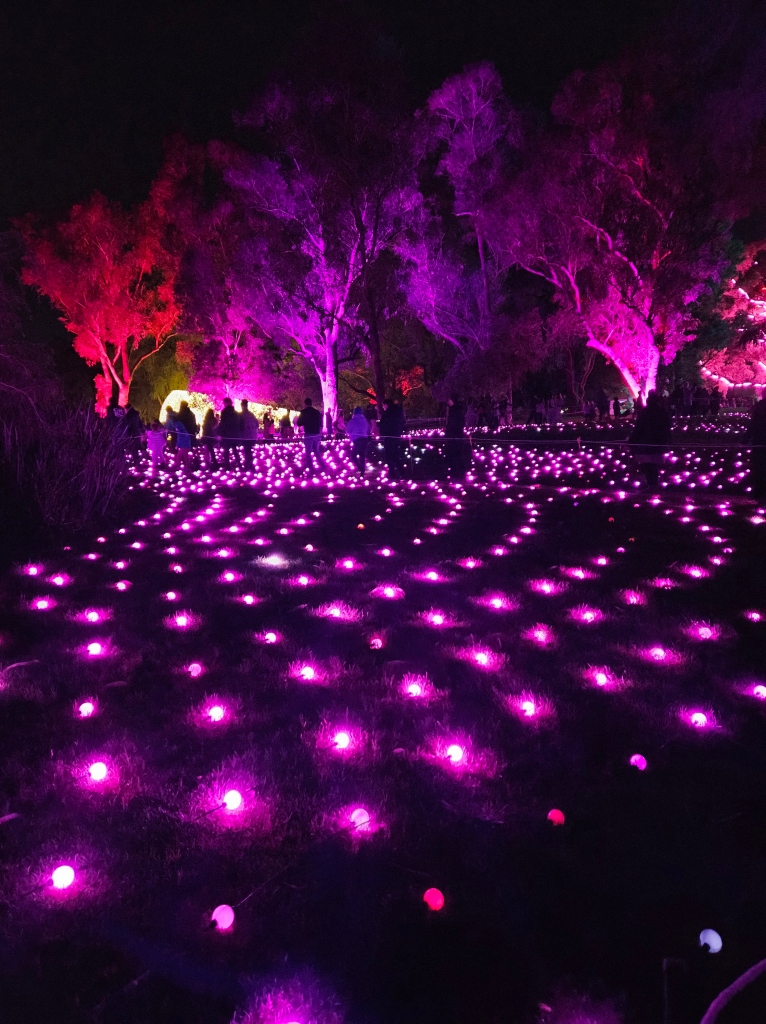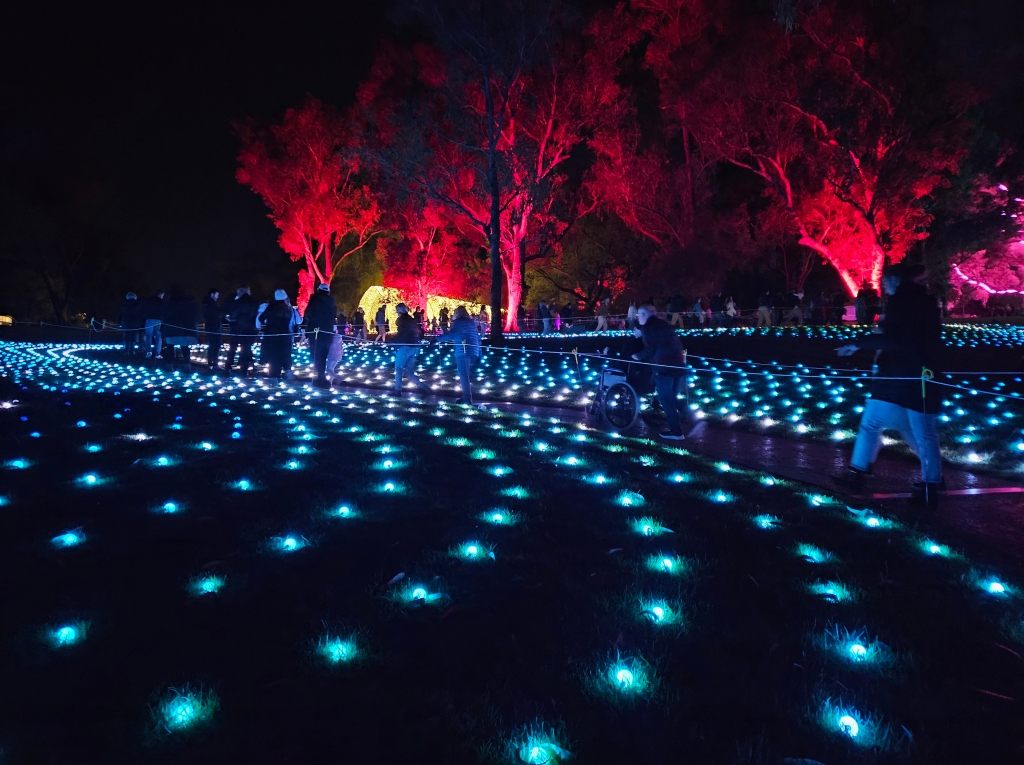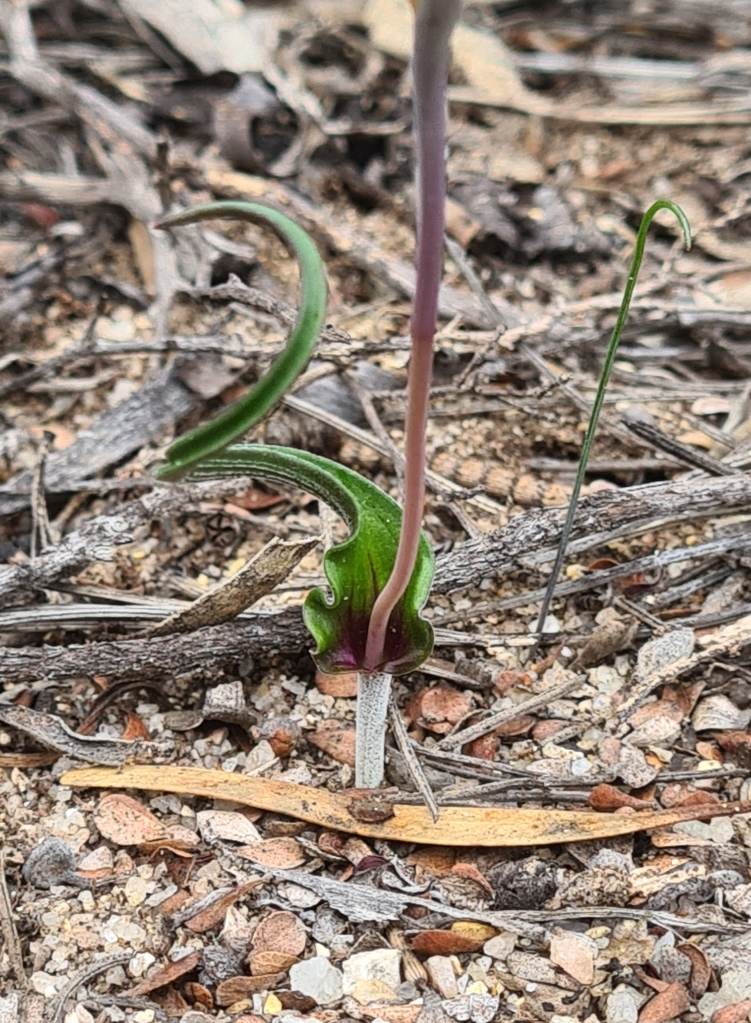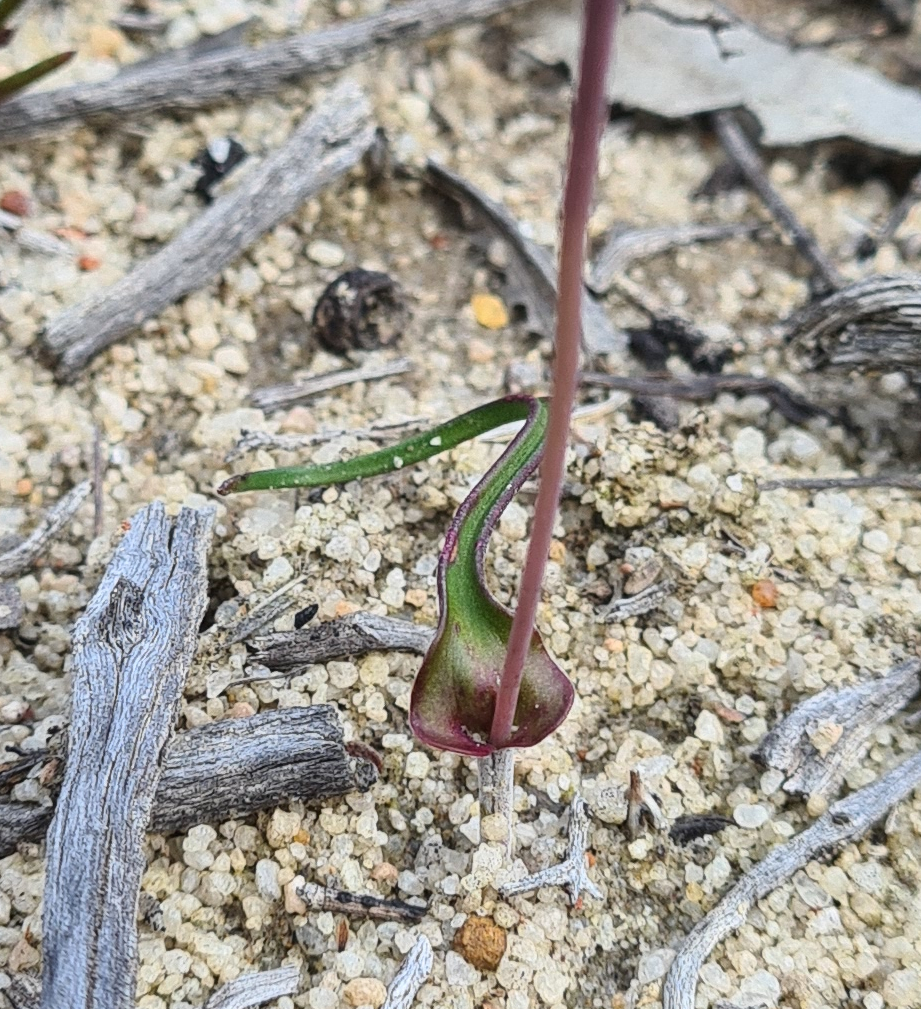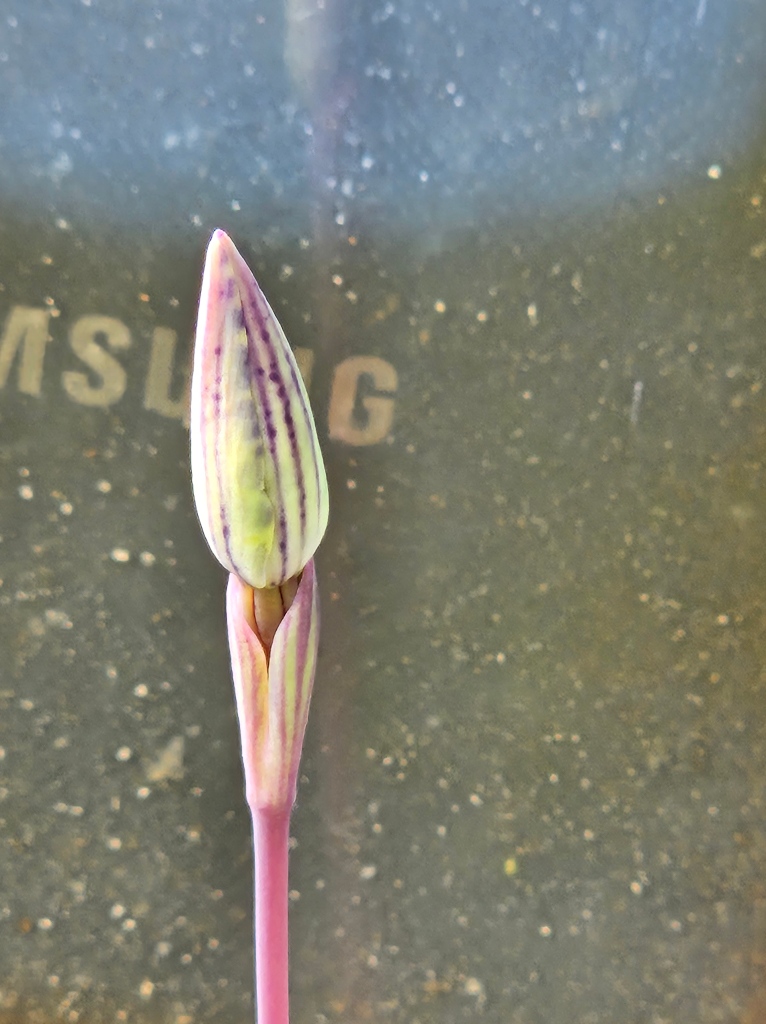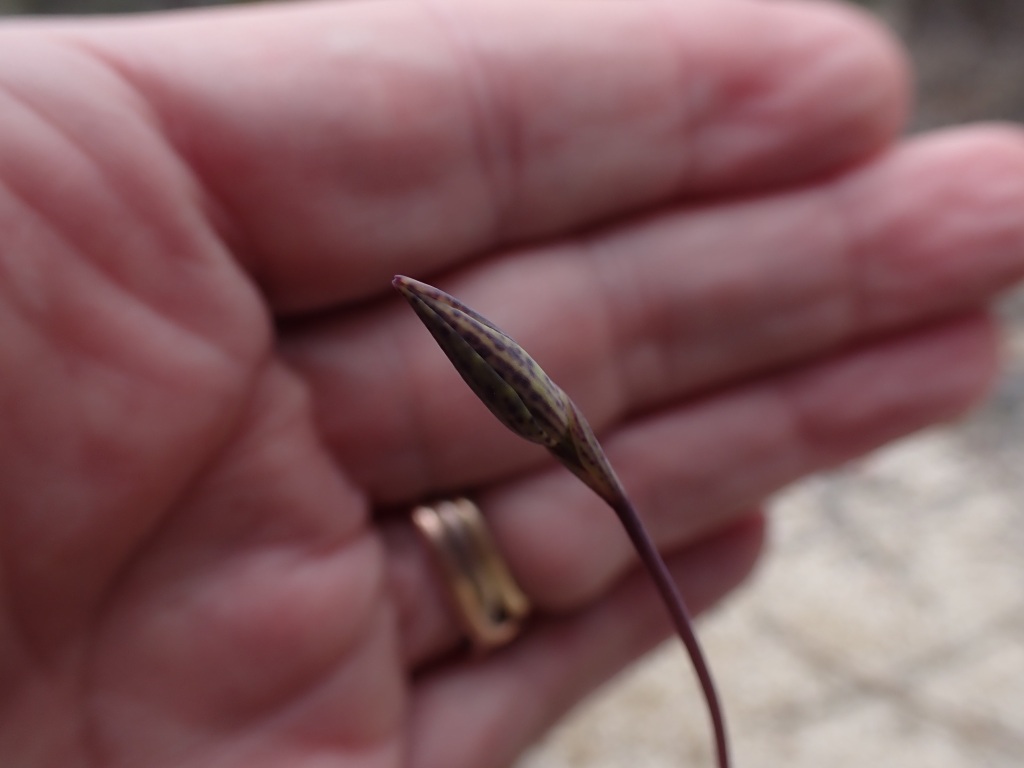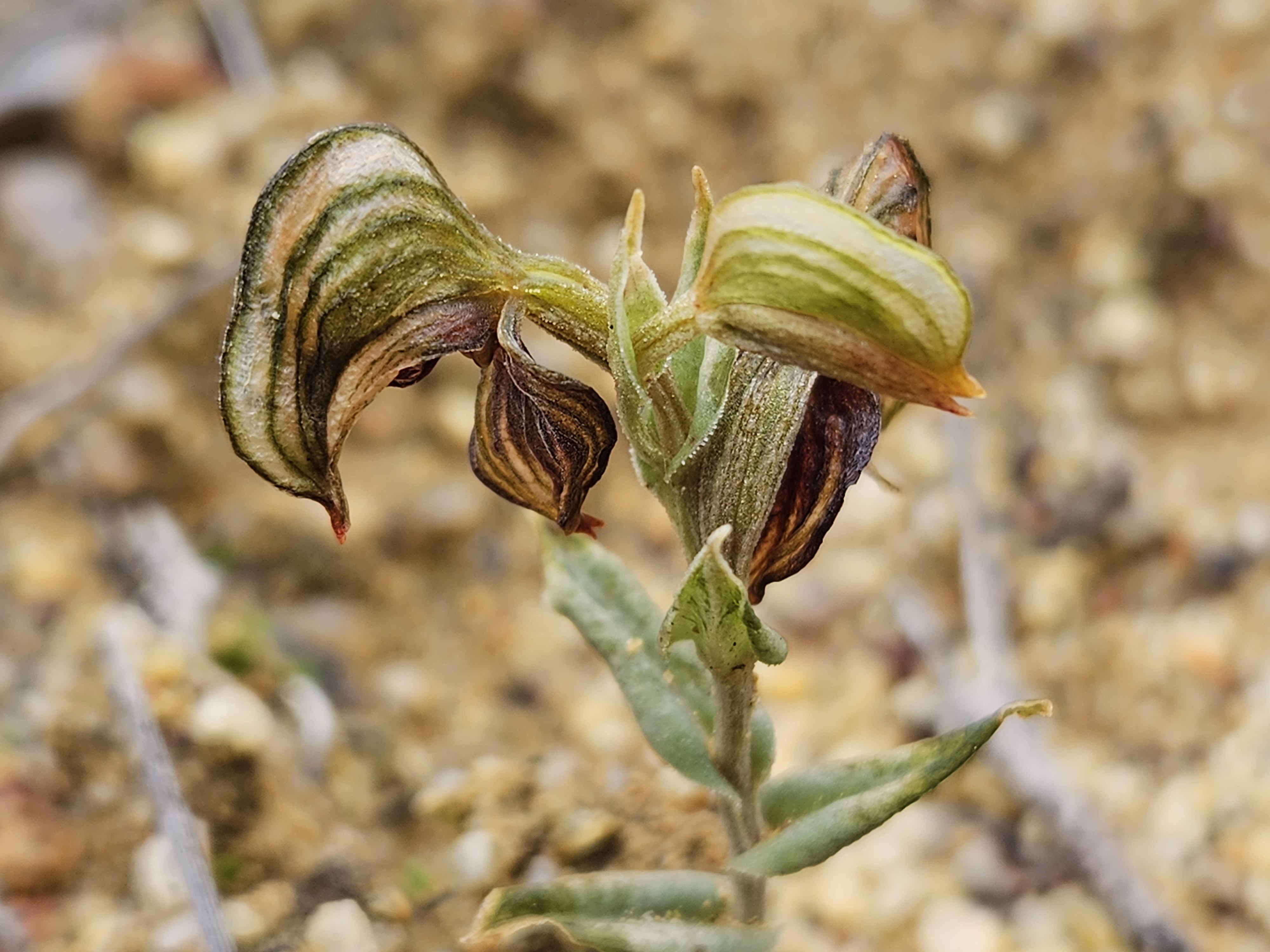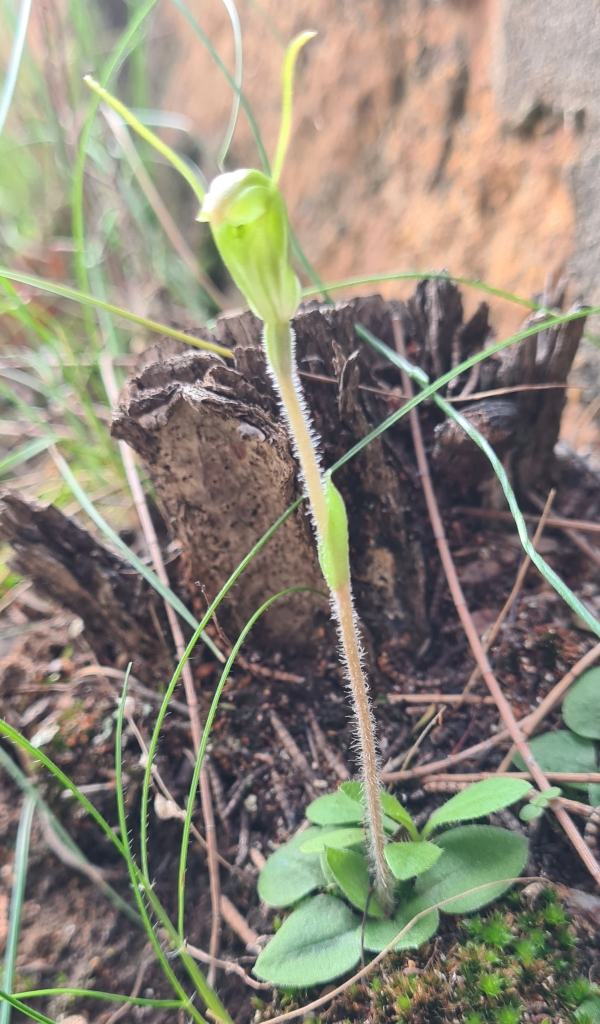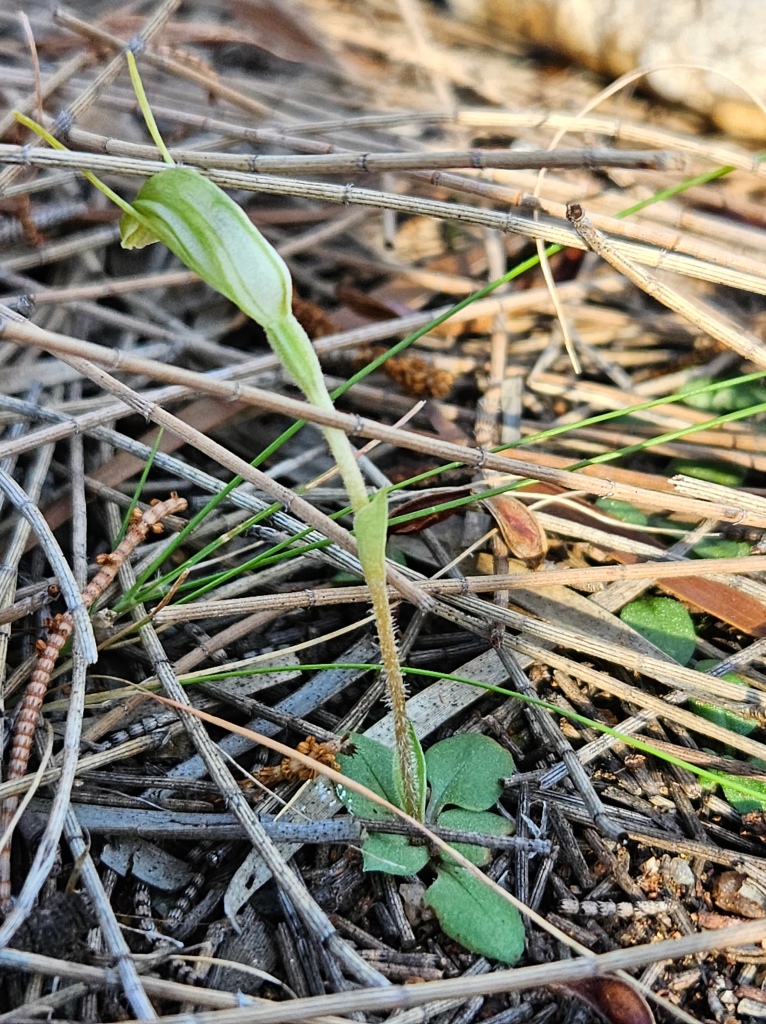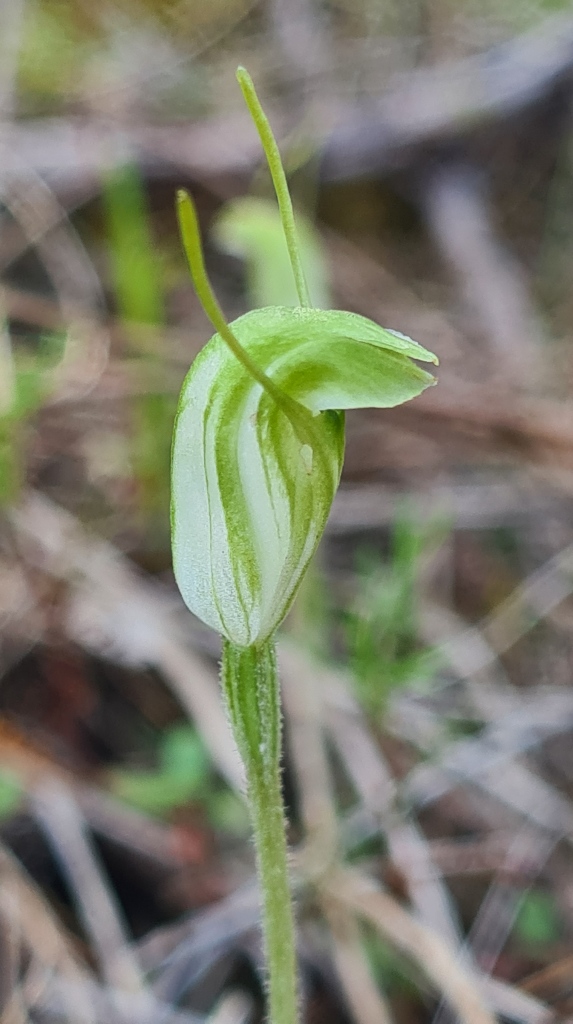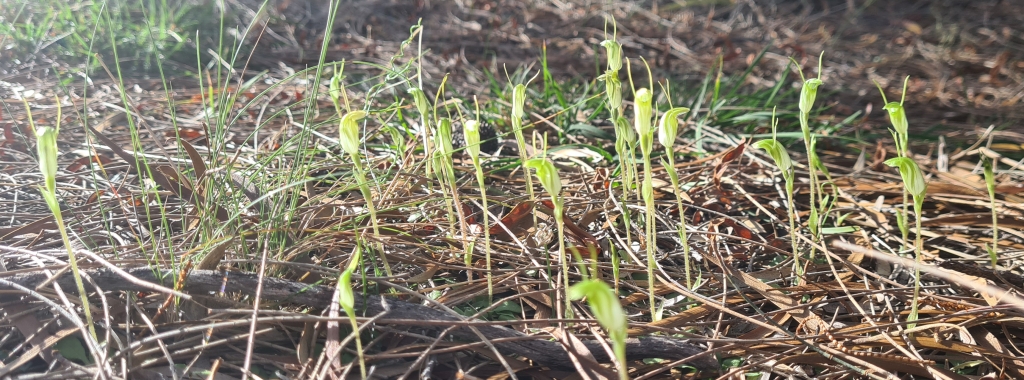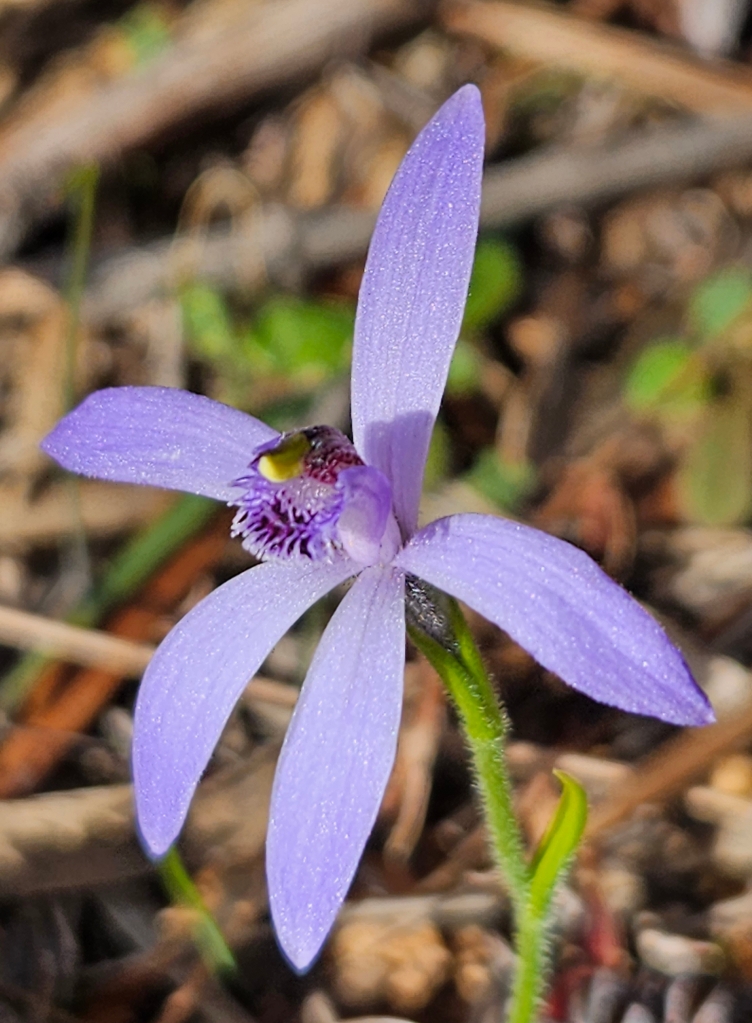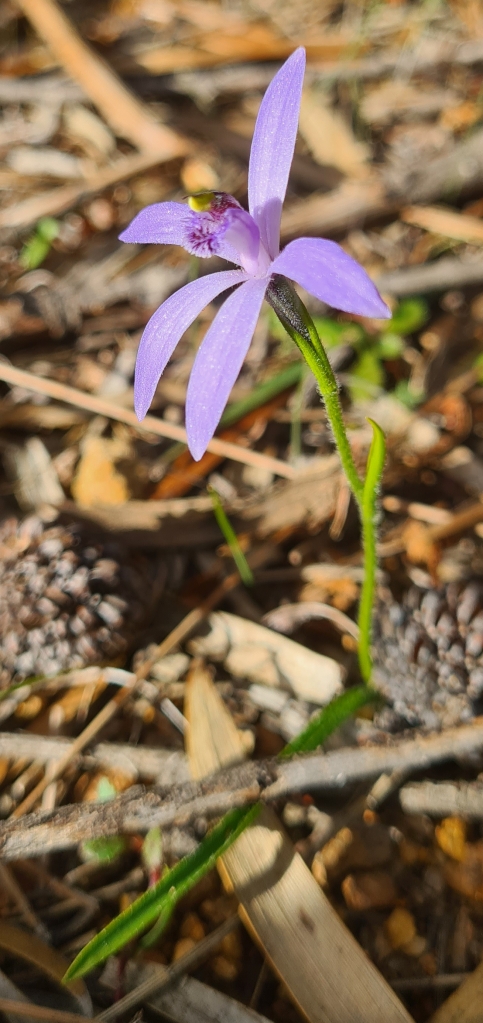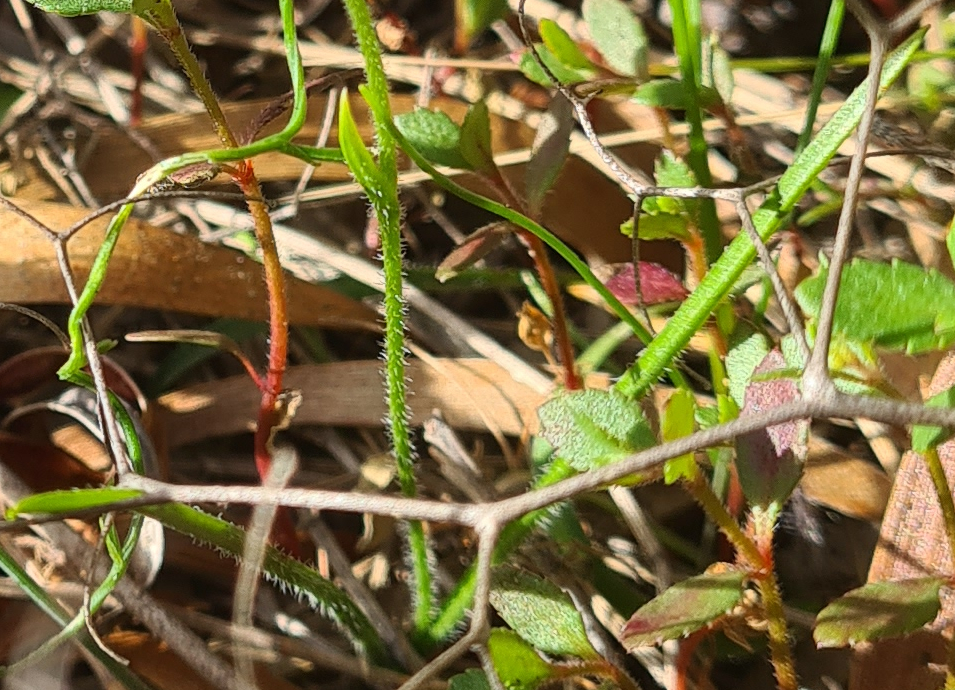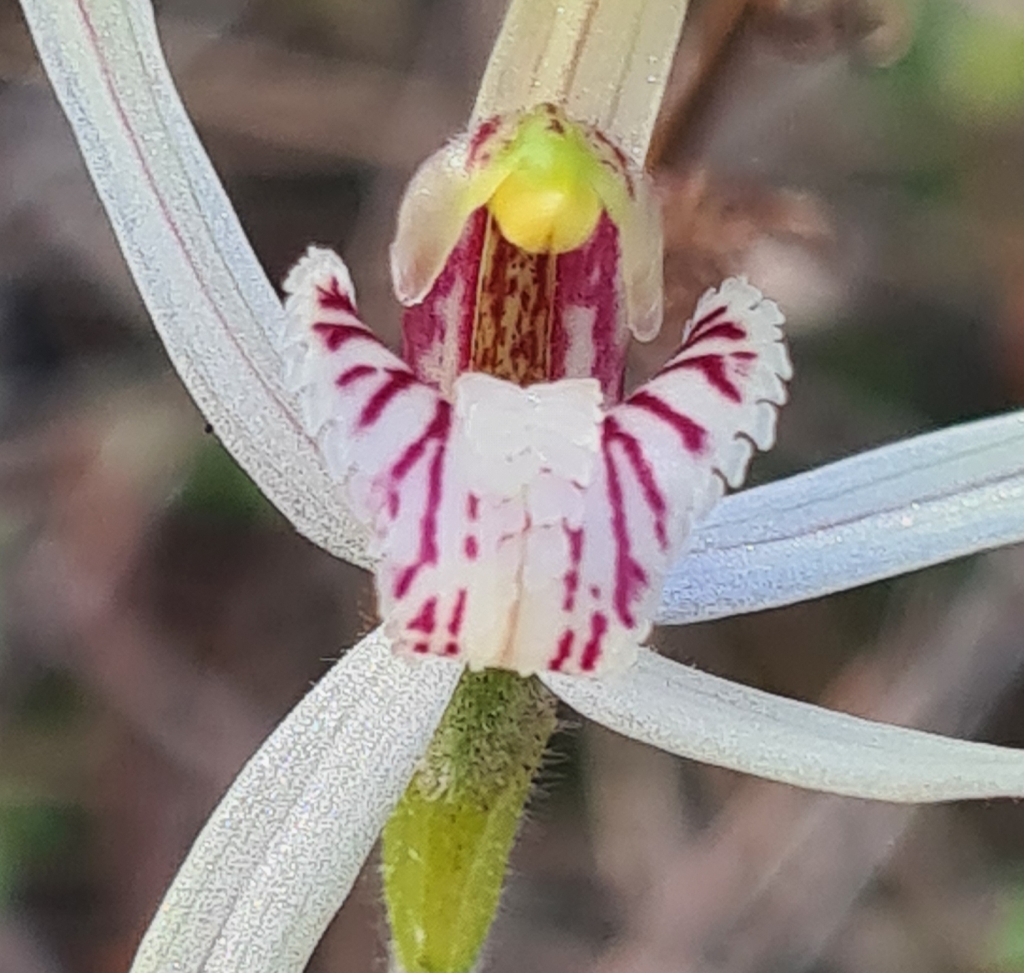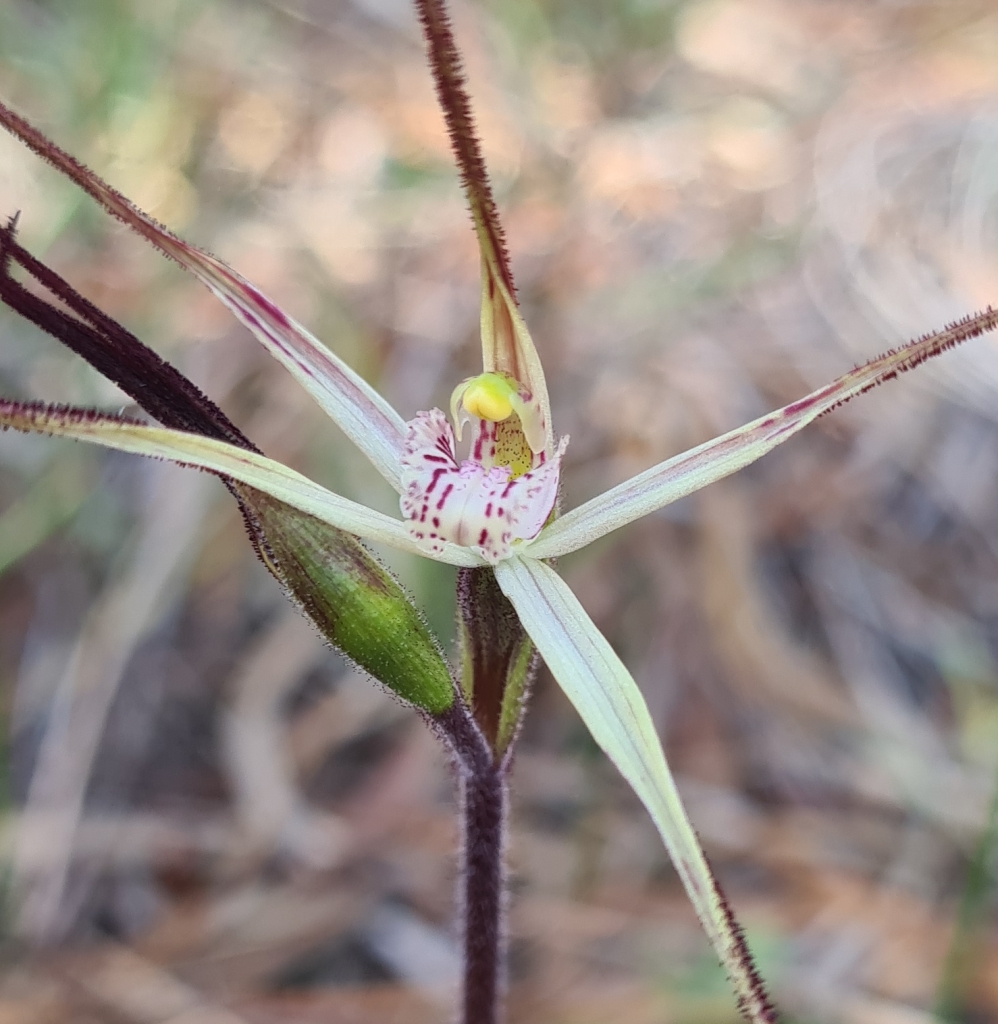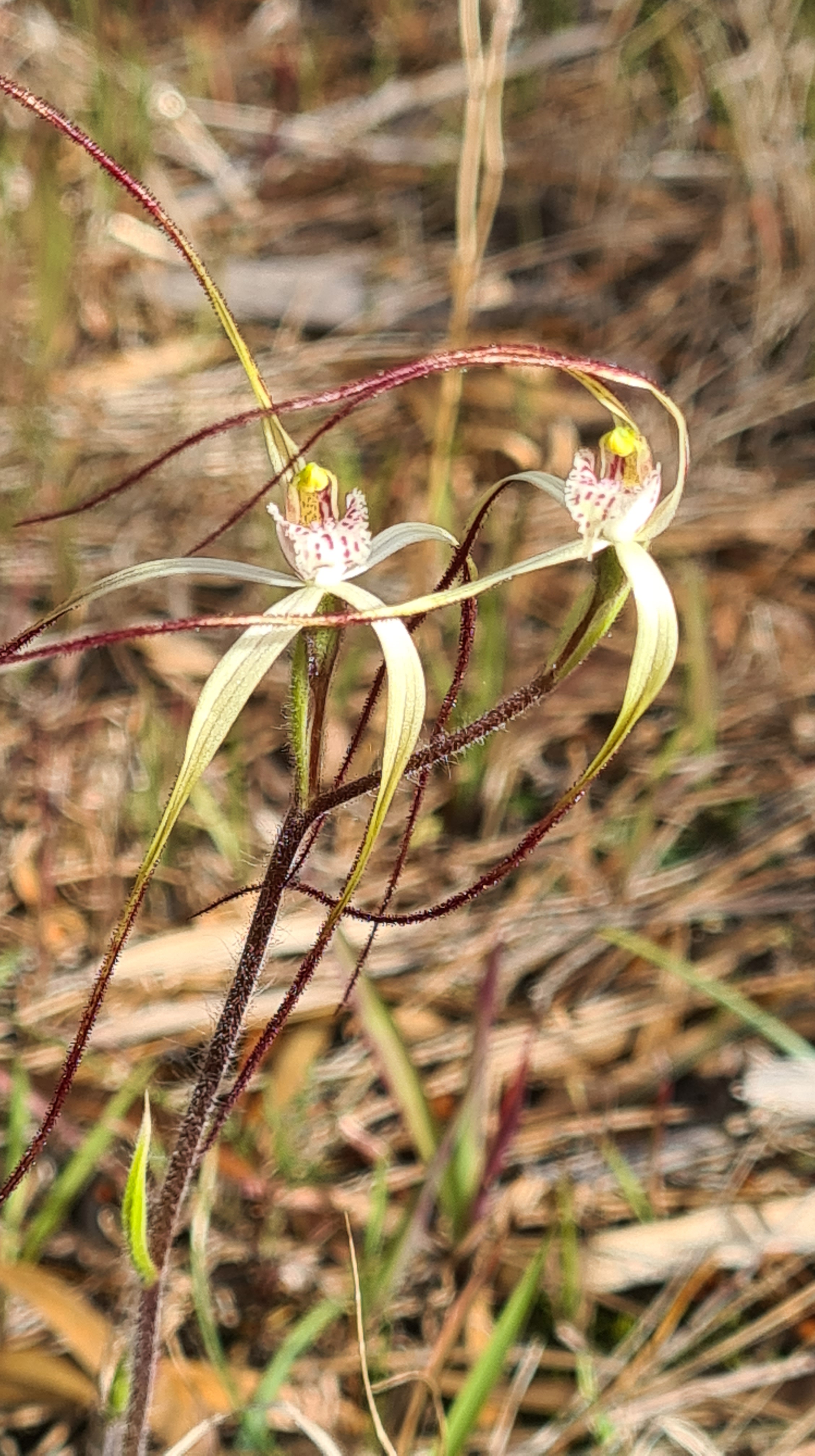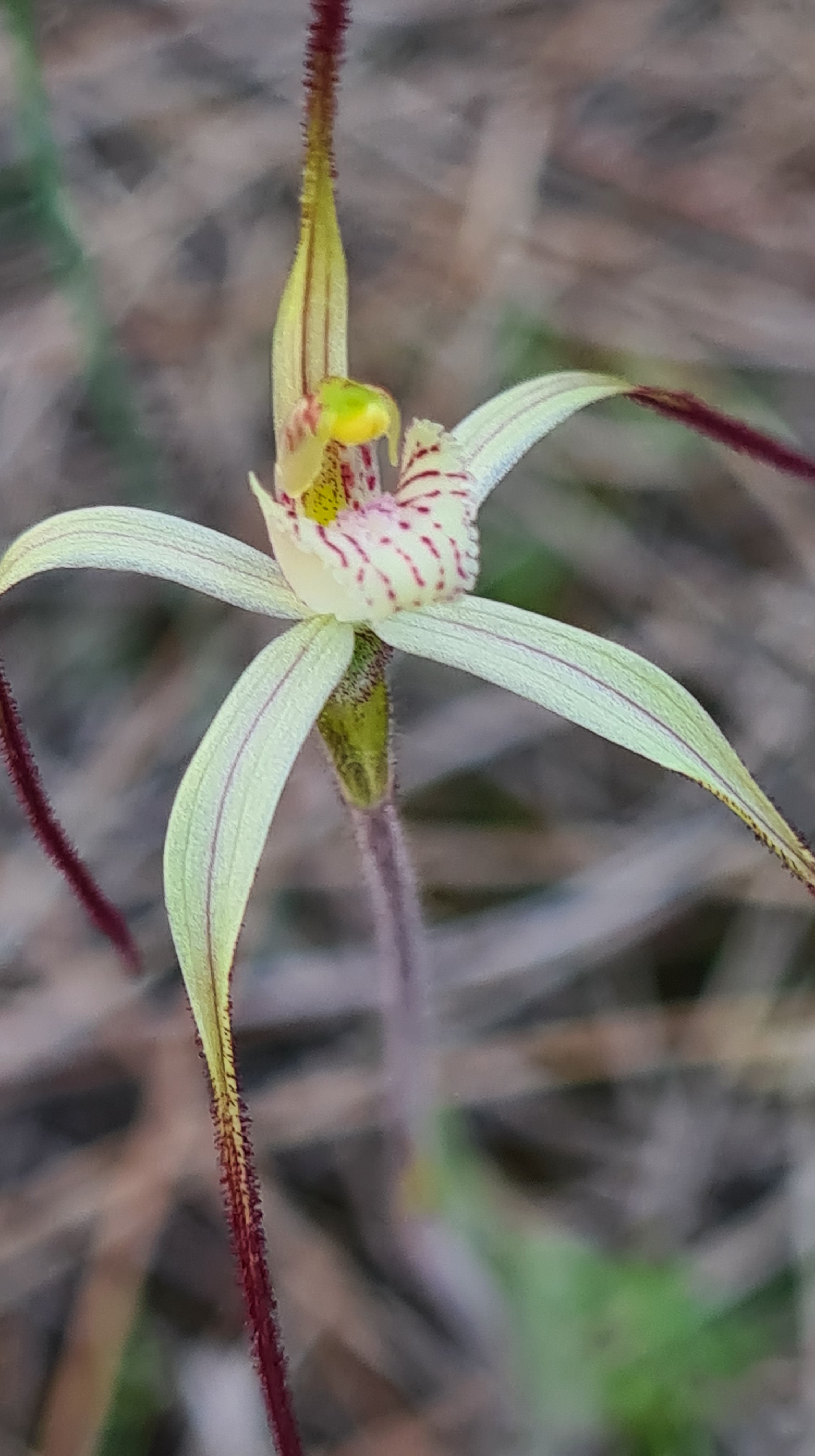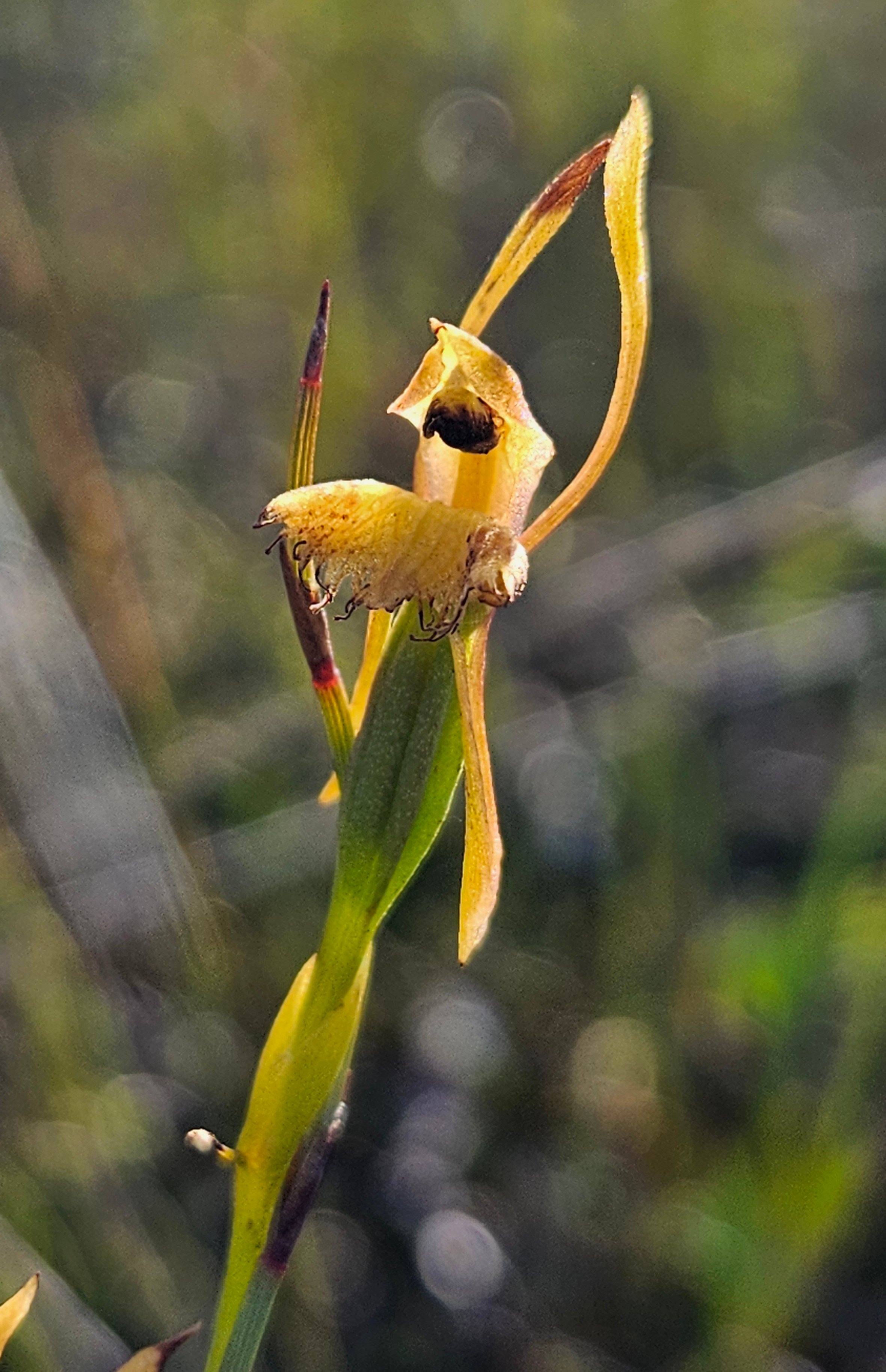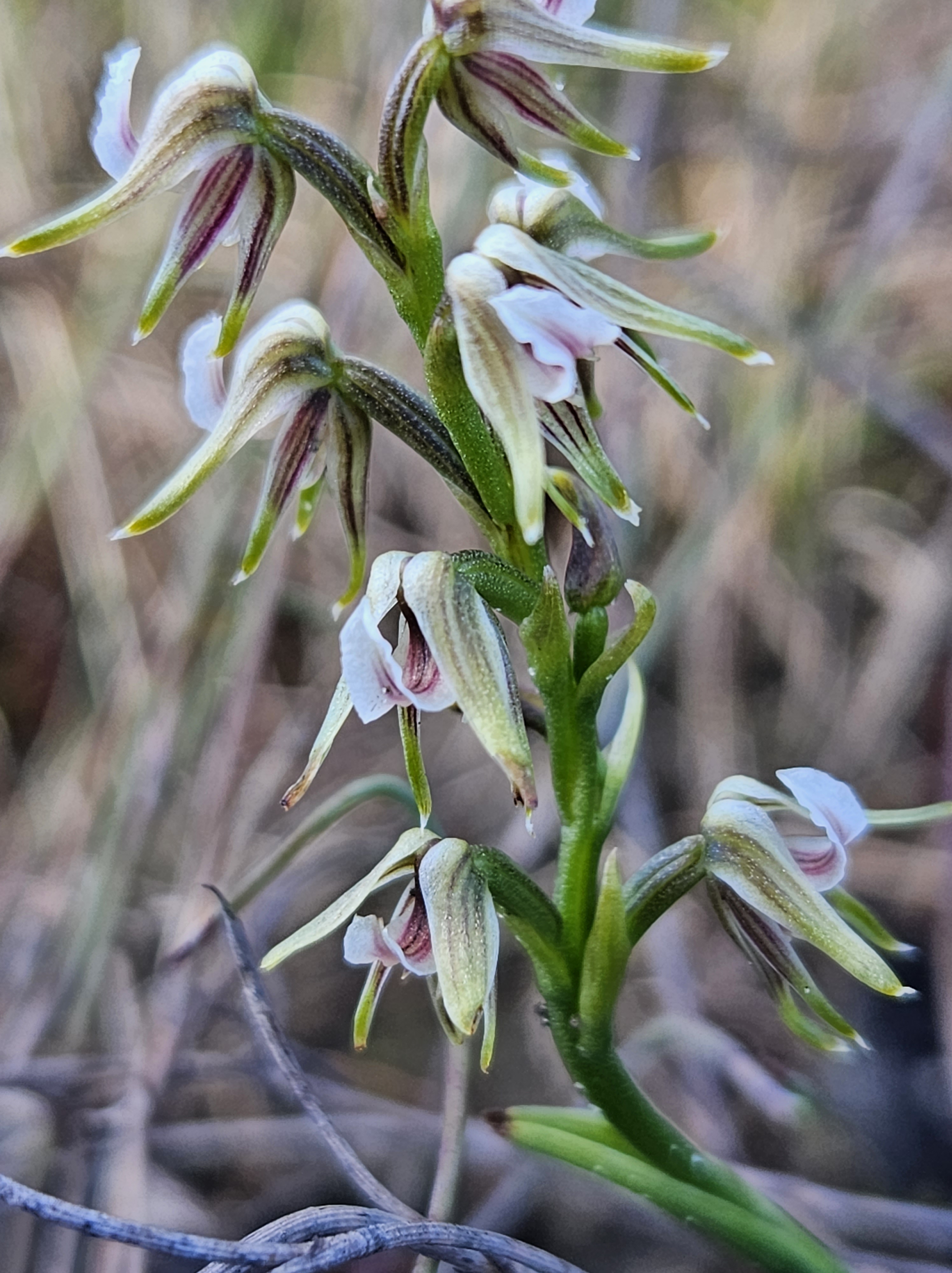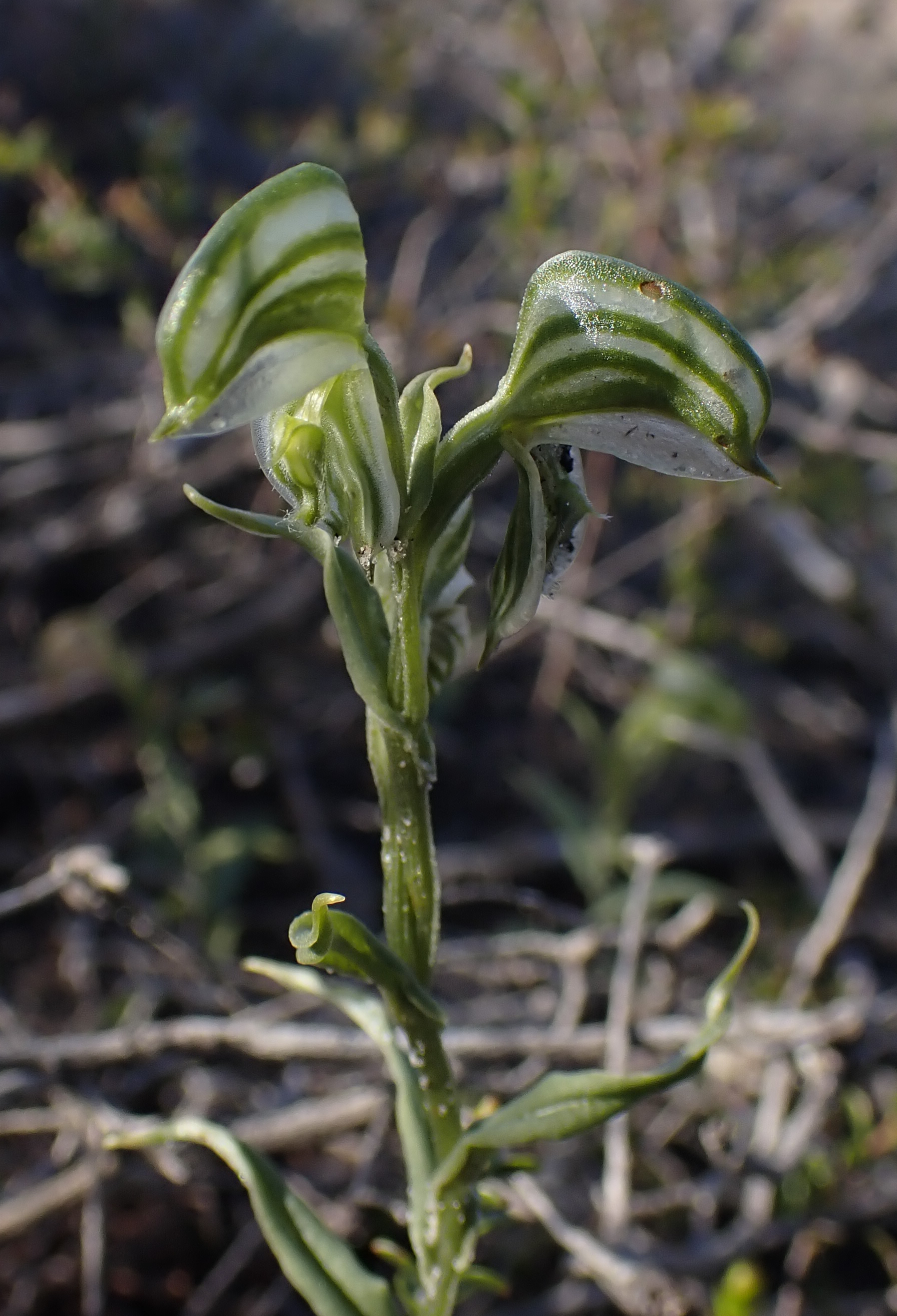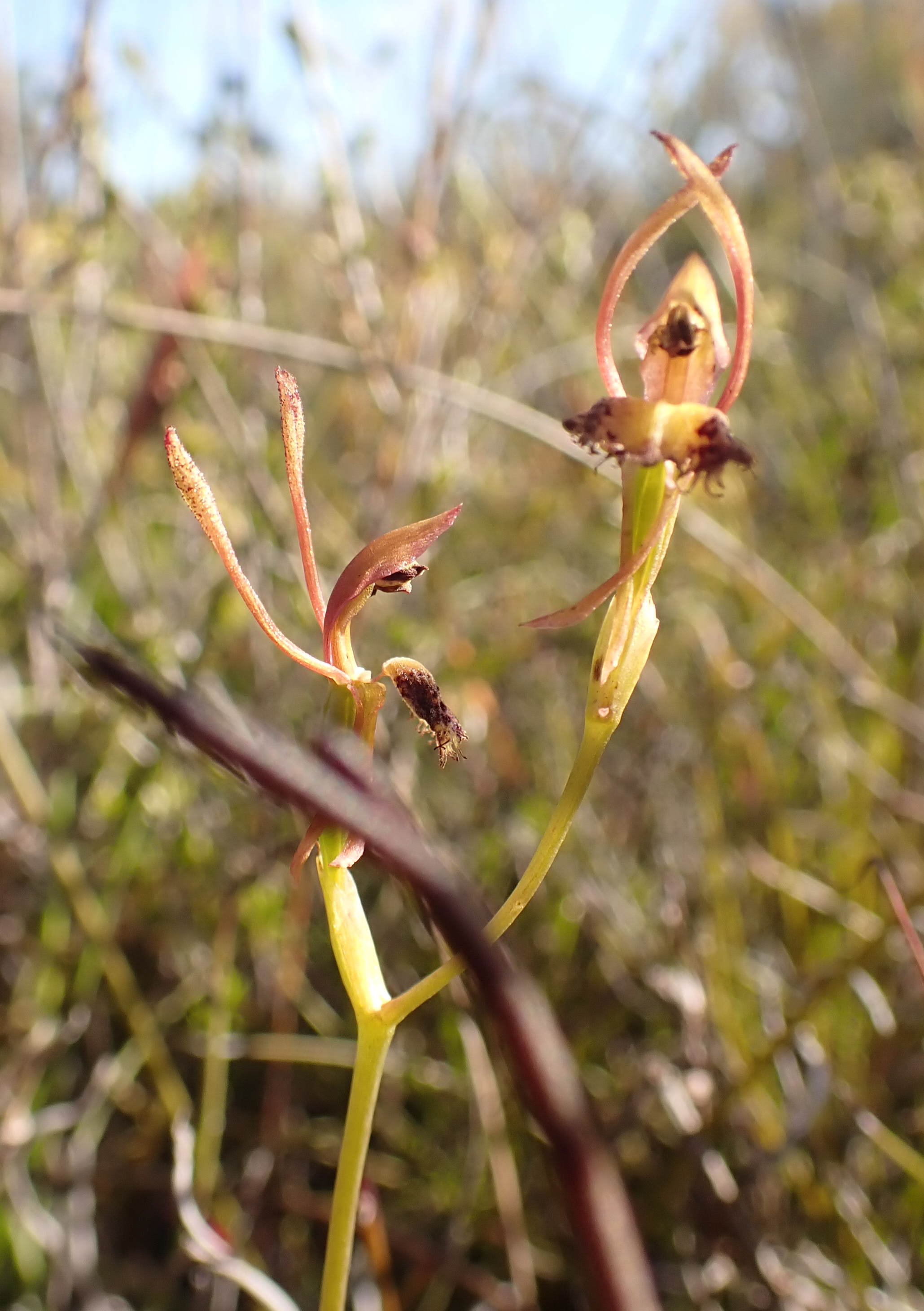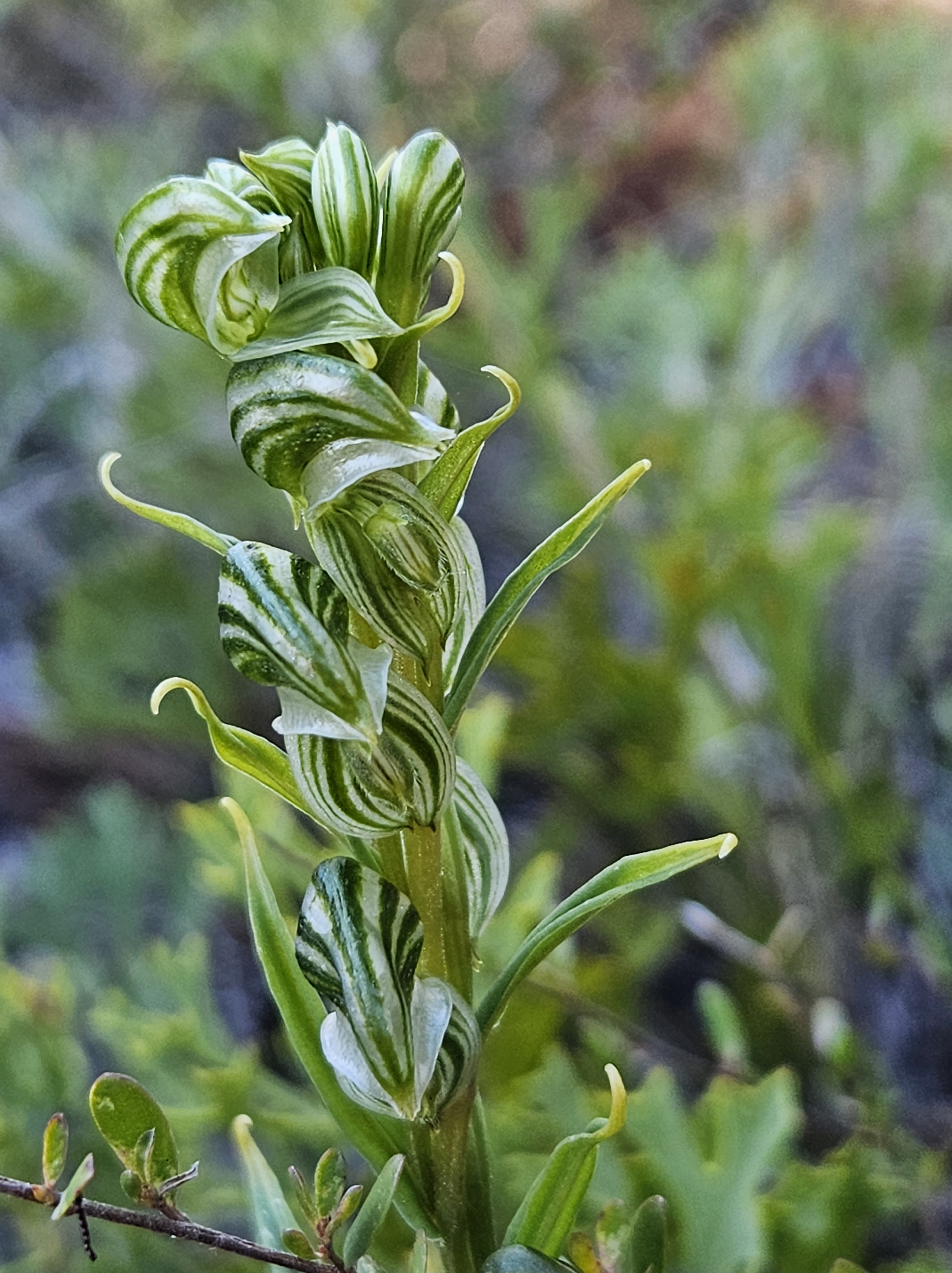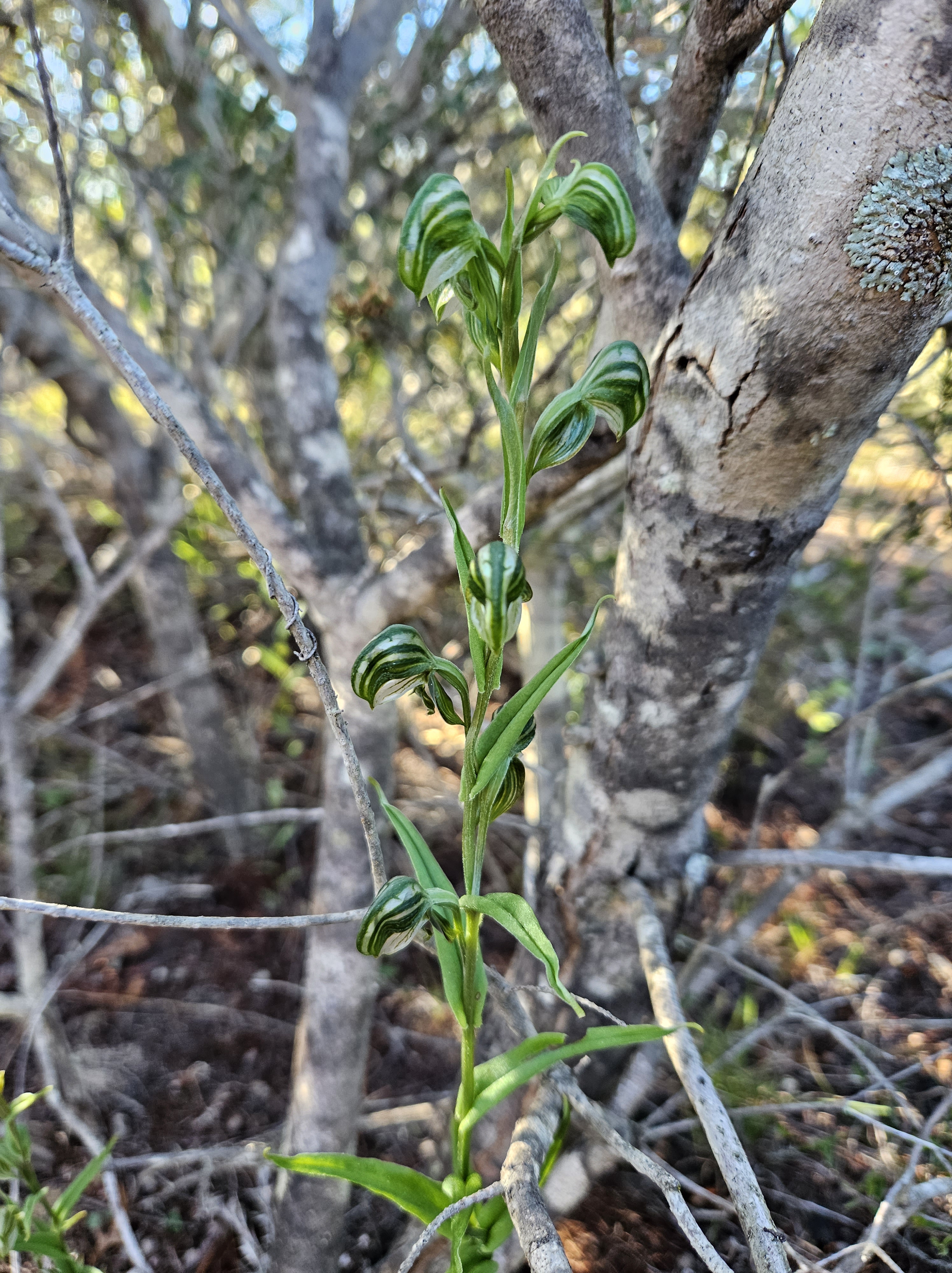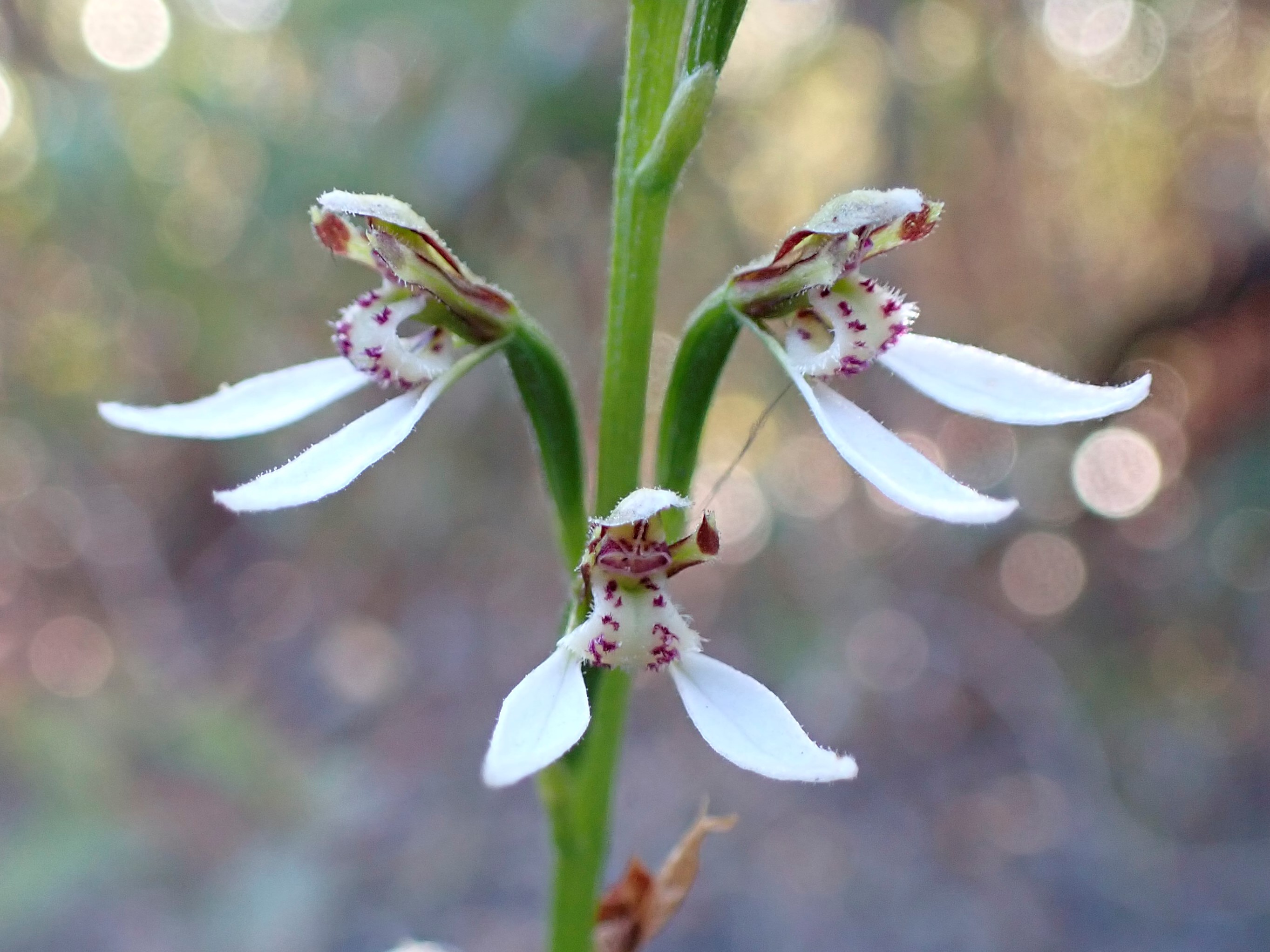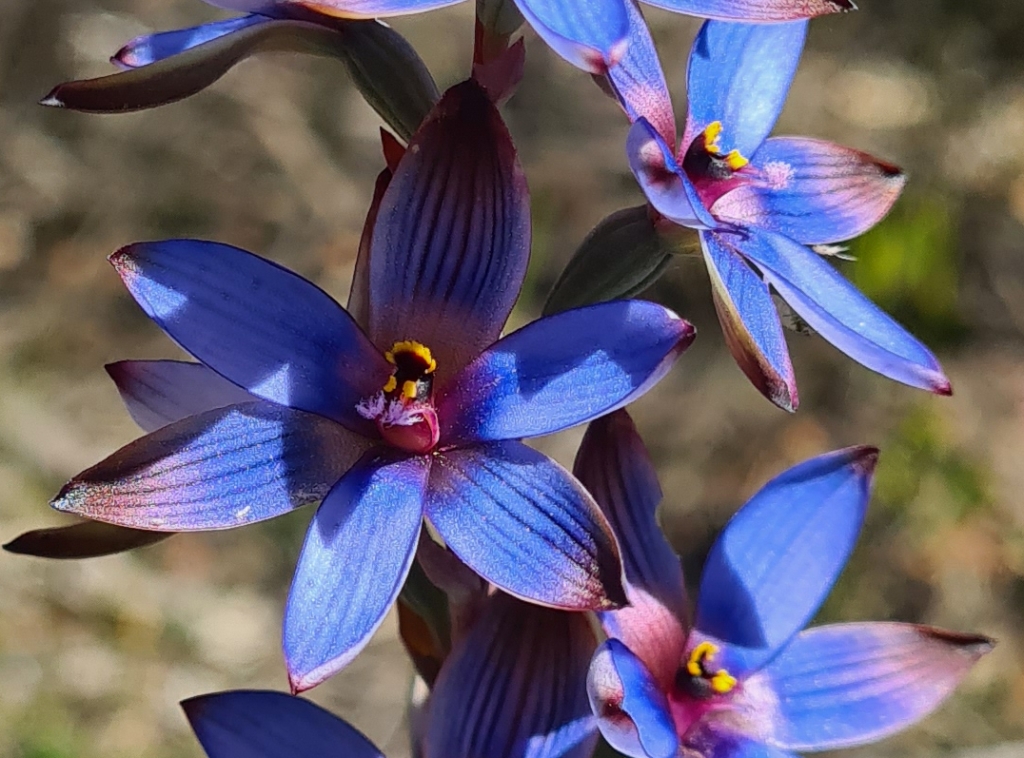All to soon our week away comes to an end. We leave Albany and head northeast along National Highway No. 1 to Wellstead where we make a quick stop at the TransWA bus bay. No orchids found flowering however we did find some Redbeak leaves and the beautiful Silver princess (Eucalyptus caesia) in flower. From here we continue along until we reach a pull over spot in the Pallinup Nature Reserve.
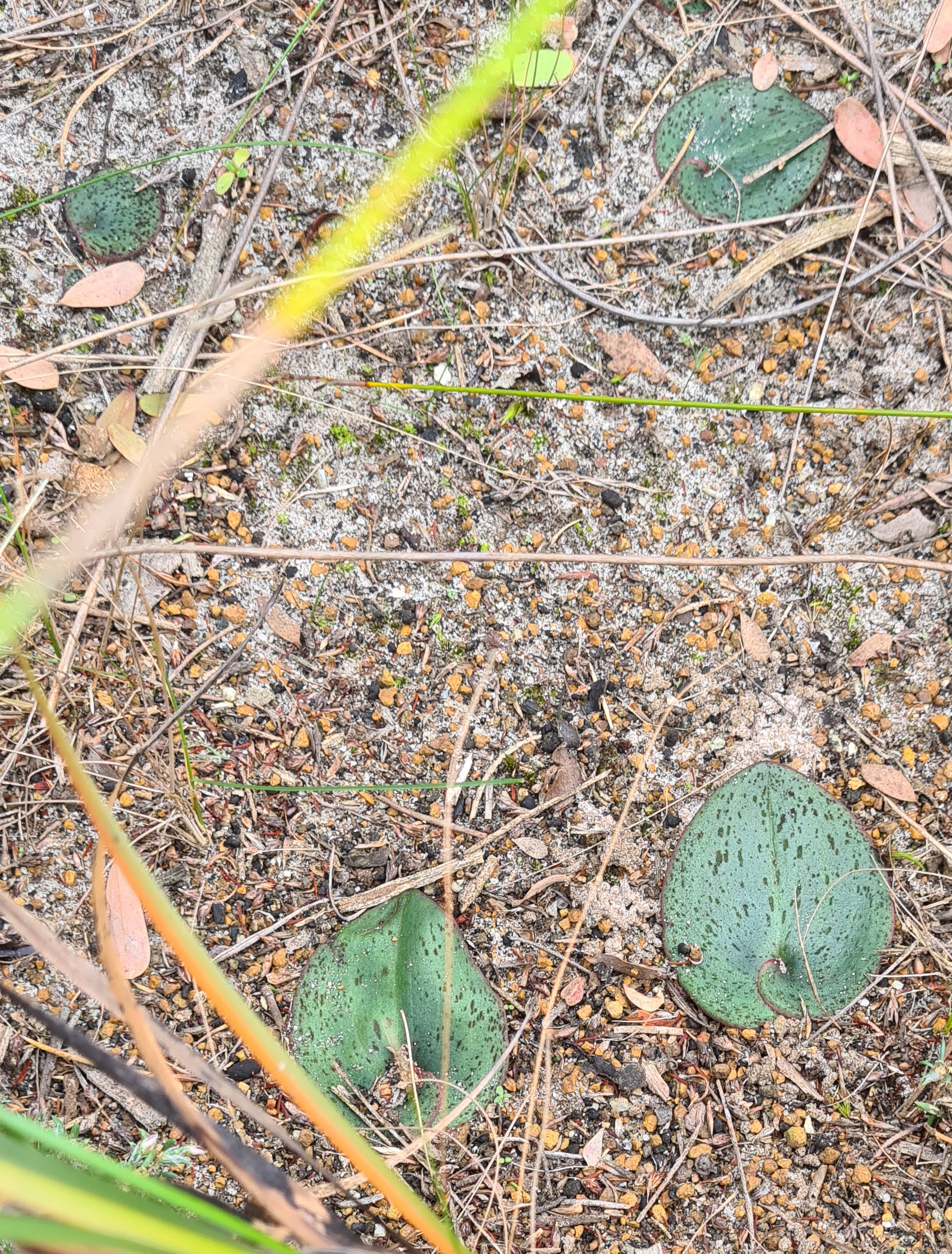
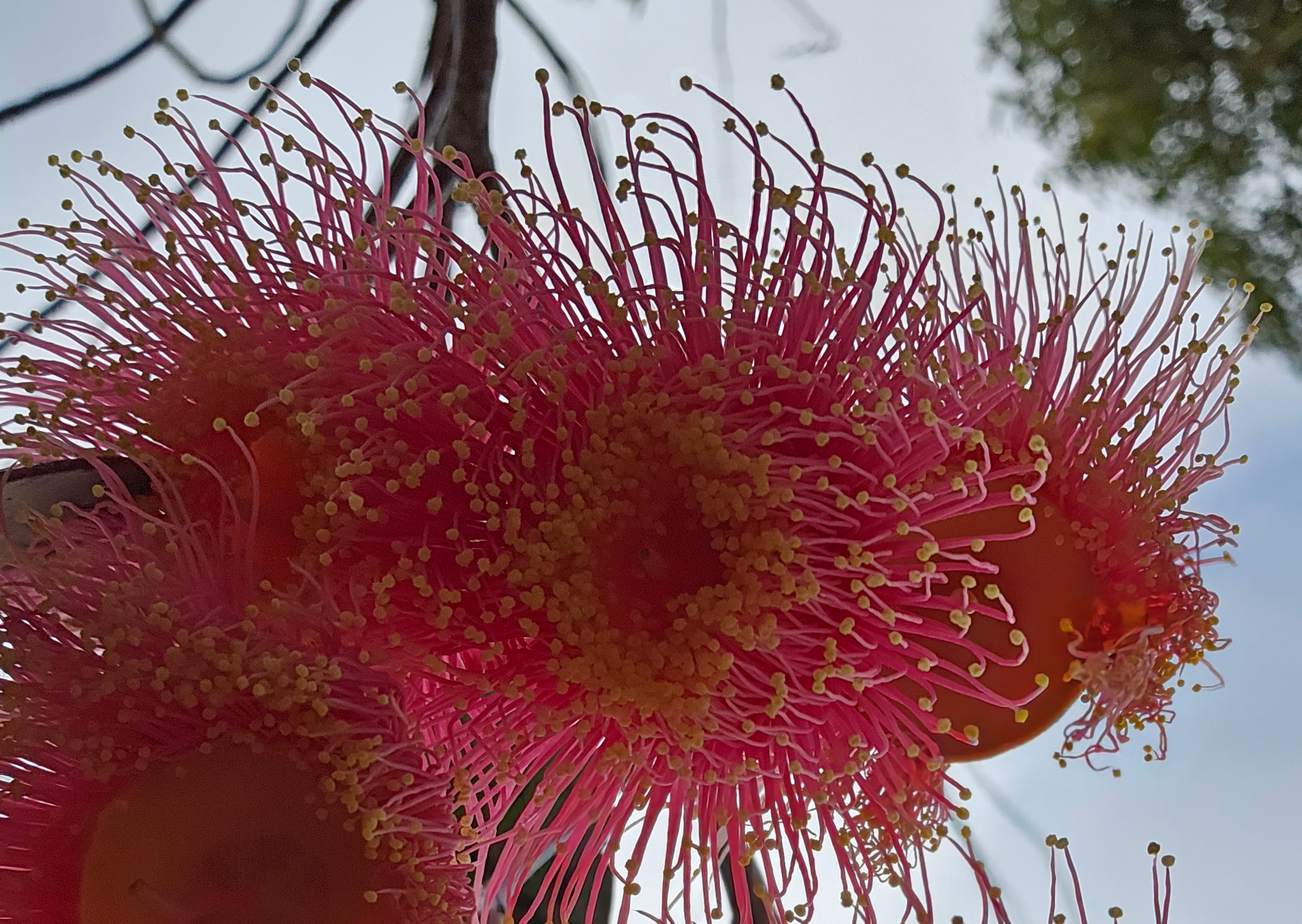
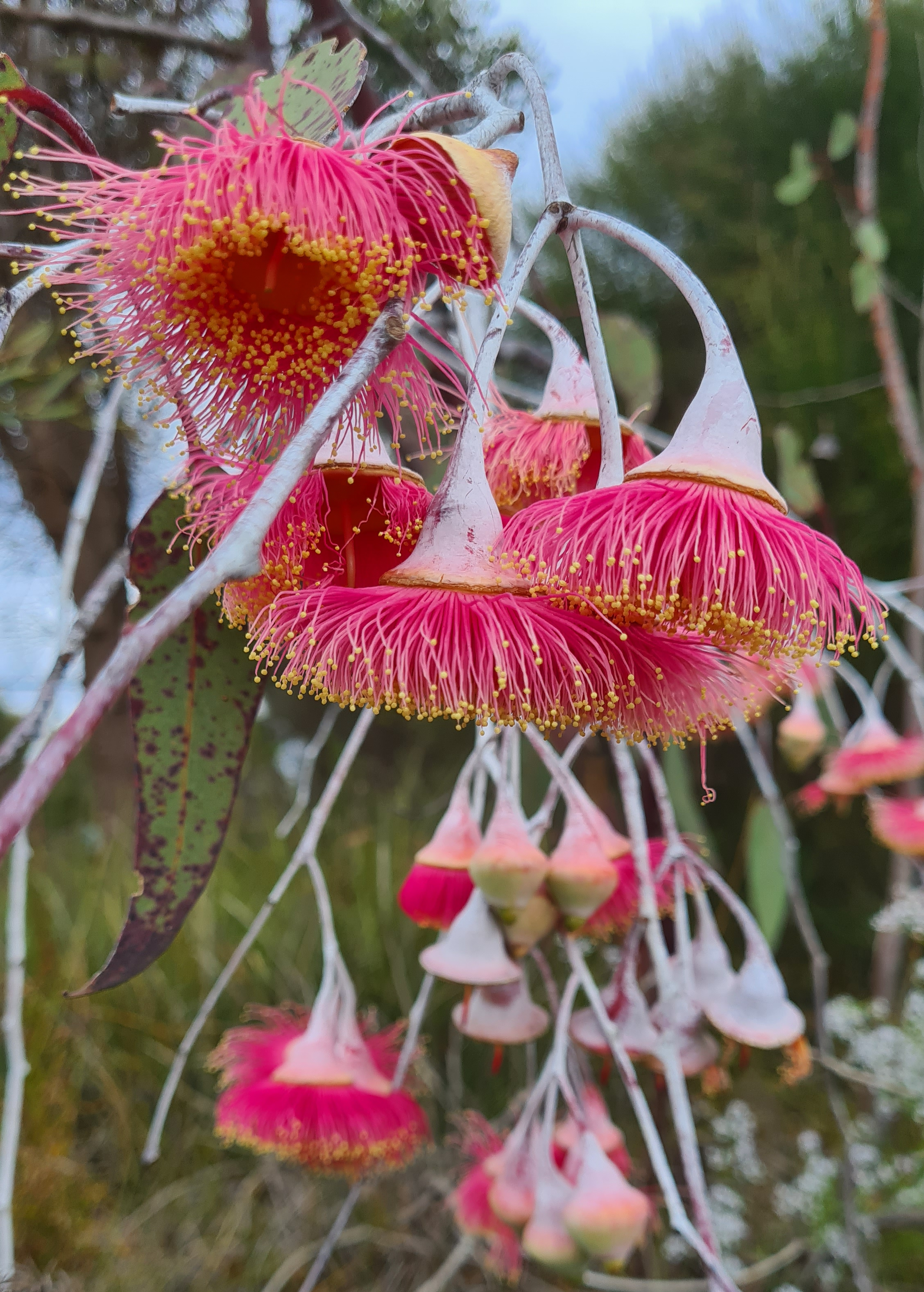
Driving into the parking bay we spy some donkey orchids in flower. A promising start however it did prove to be not so. The Green Range donkey orchid (Diuris littoralis) is the likely species of donkey orchid as they flower from July to early September over a range from Denmark to Esperance in a coastal and near coastal locations. Other than these in flower there are a couple of Banded greenhoods (Pterostylis vittata) in flower and some Jug orchids (Pterostylis recurva) close to flowering. Nothing else found, which is disappointing.



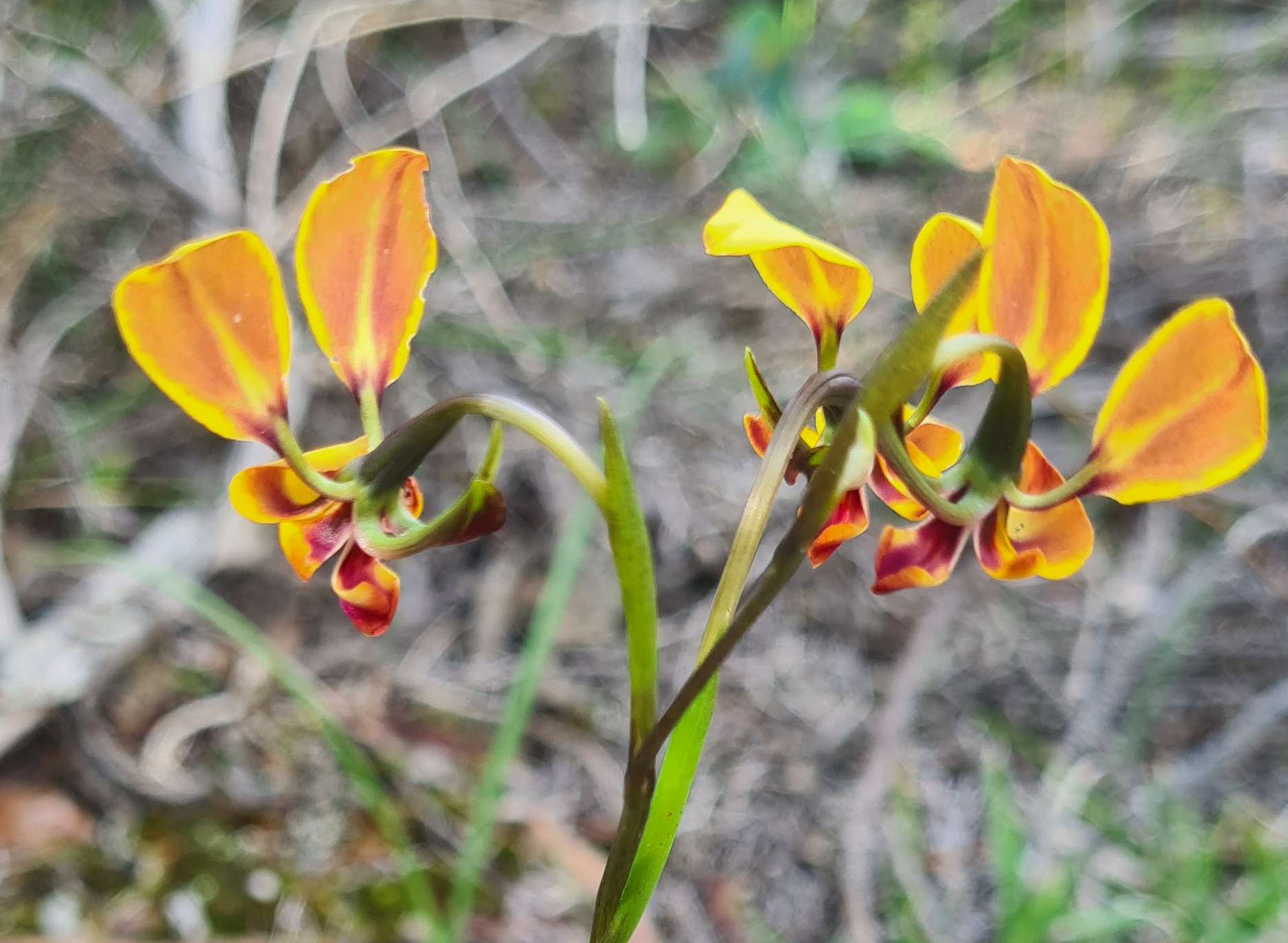


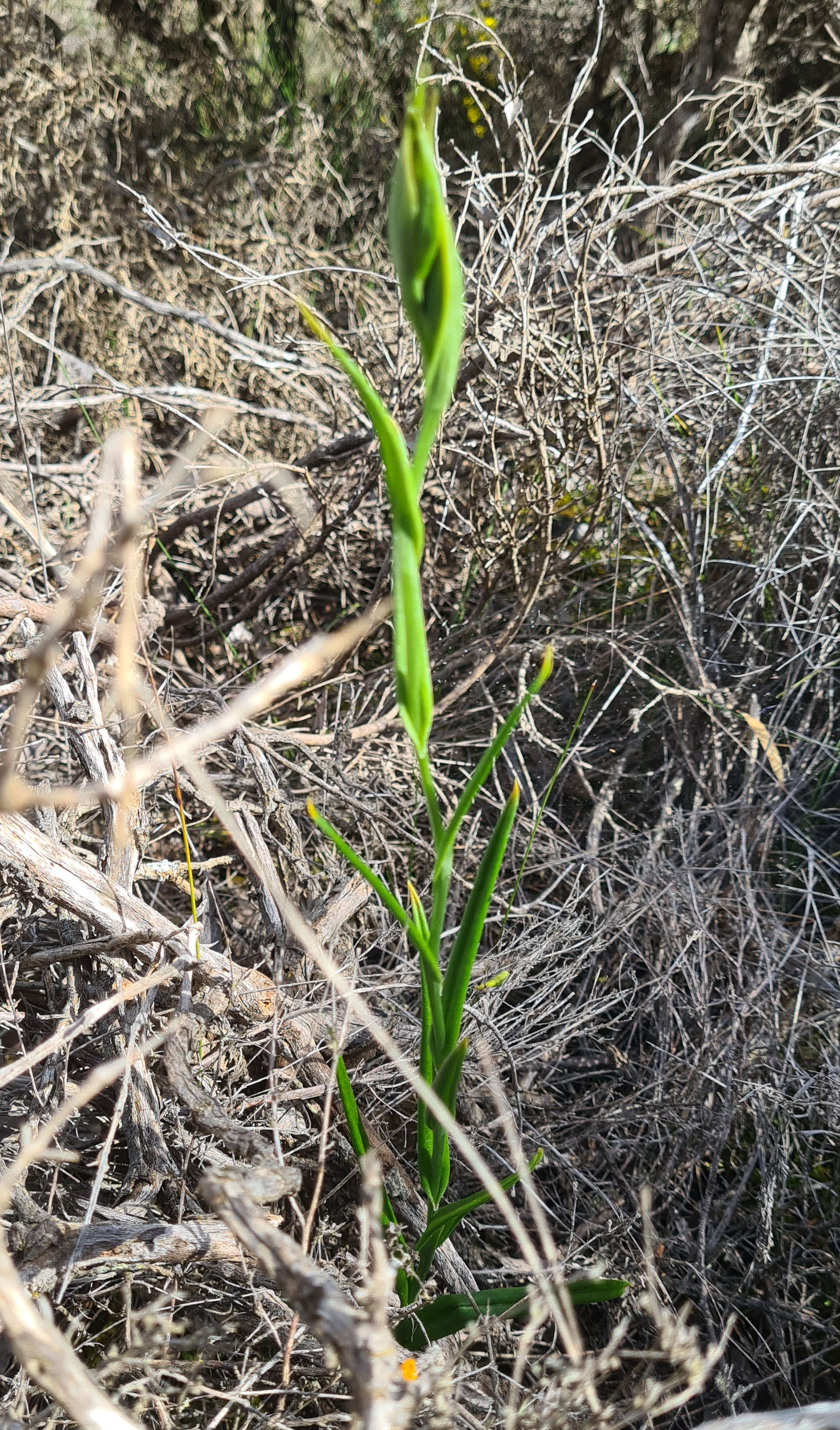


Moving on we head toward Jerramungup, where we plan to check out the recently burnt area again to see what is now in flower. First up though we check out a location shared to us by a friend who used to live in the area. Down Carlawillup Road we go, until we reach the gully. Here we pull over and have a quick scout around. Only Banded greenhoods and other nearly in flower jug orchids were found. Will need to check this location out further into the orchid season to see what is flowering then.

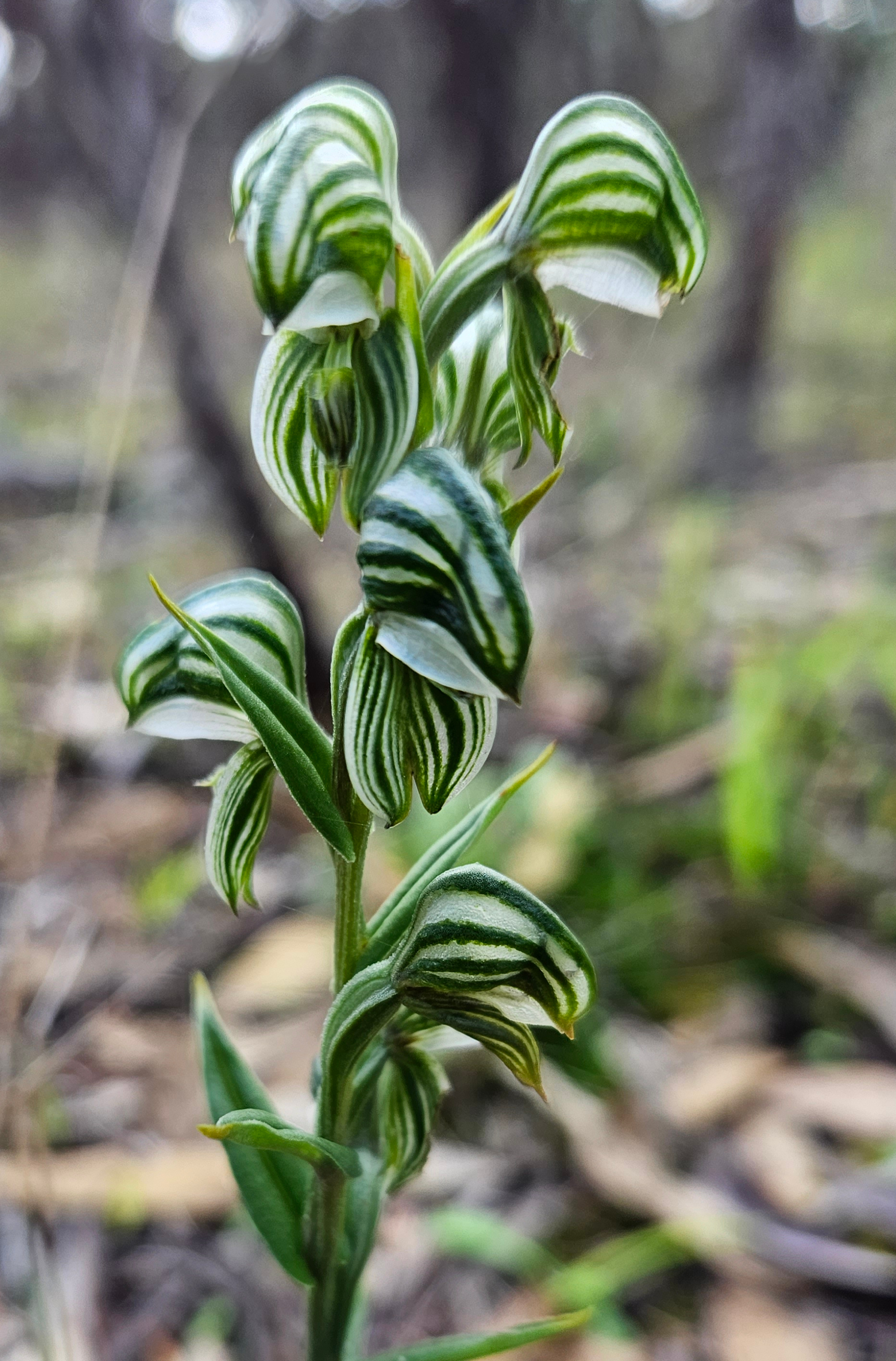

Back to the burnt area near Jerry and again we are a bit disappointed as we find loads of donkey orchids and a few Banded greenhoods. The only other interesting find were some Redbeaks from last season with their charcoal black dried flowers. The Latin “pyr” (fire), “orchis” (pertaining to Orchidaceae) & “niger” (black) show how this scientific name Pyrorchis nigricans was chosen. They flower after fire and the dried flower is black in colour.
The other issue is naming the donkey orchids as they do appear to differ in their appearance. So some may be the Green Range donkey orchid as noted being found earlier today, whilst others could be the South Coast donkey orchid (Diuris brockmanii). The latter orchid flowers between Ongerup and Esperance from June to early August, so they could co-occur.




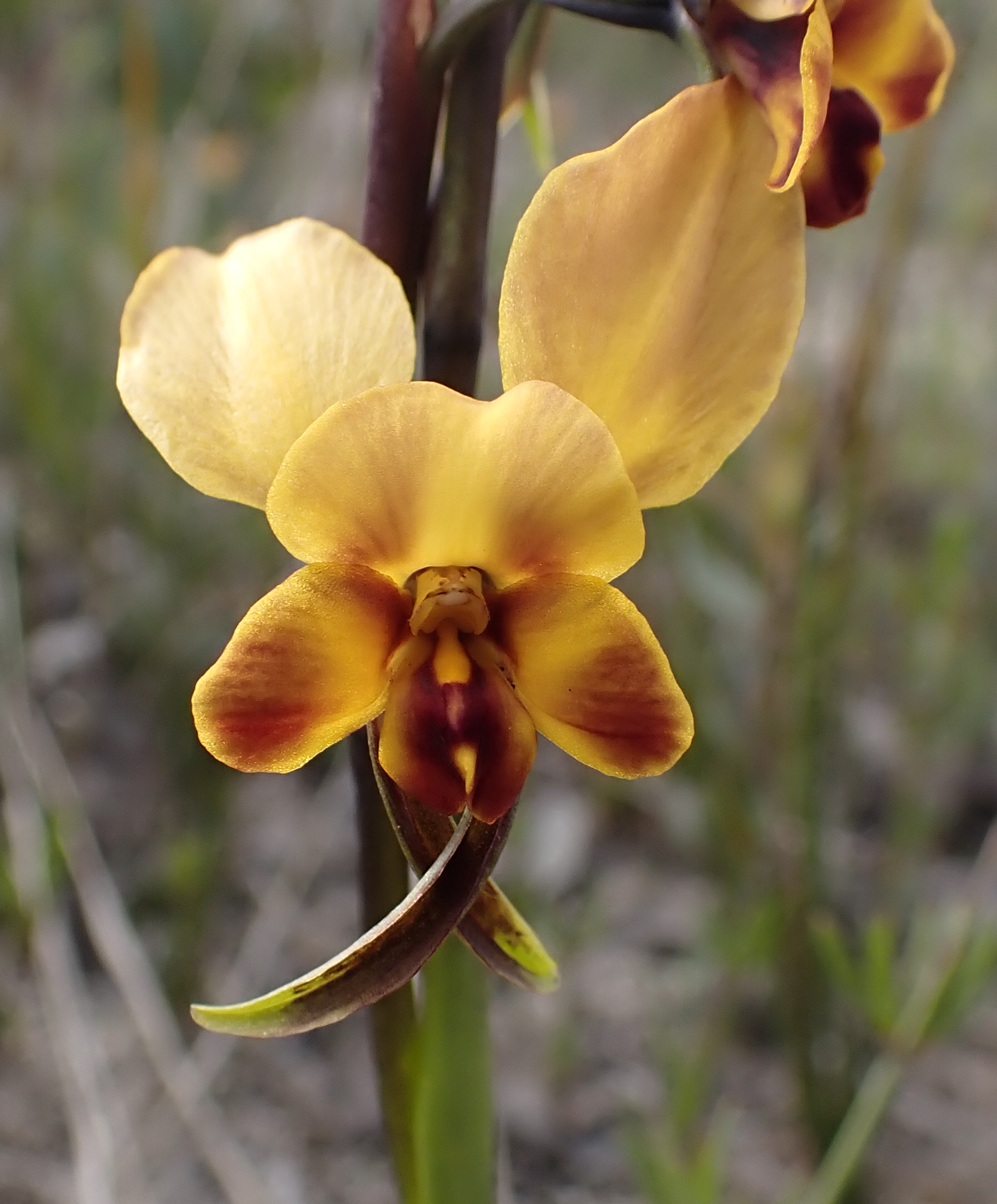
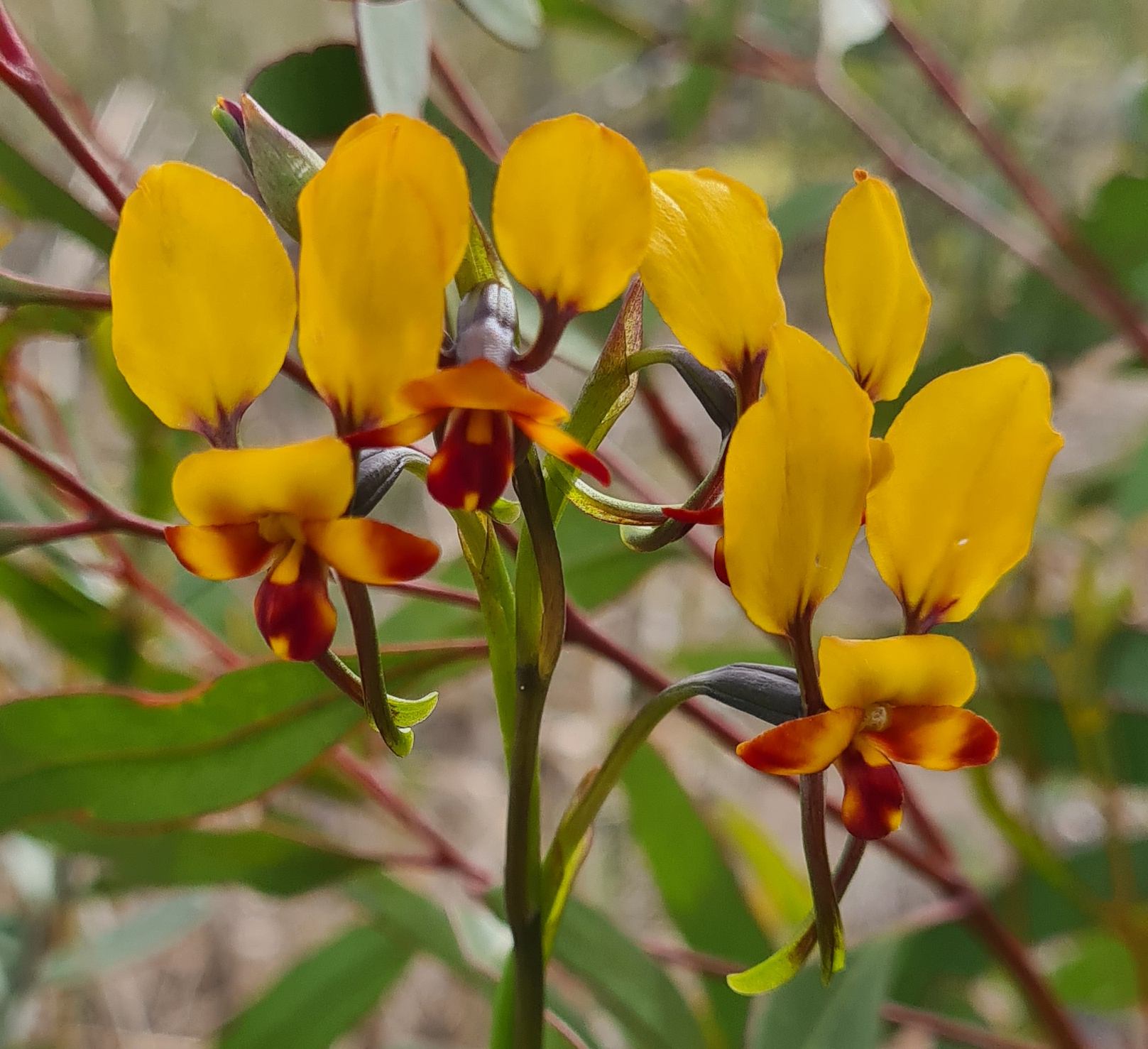
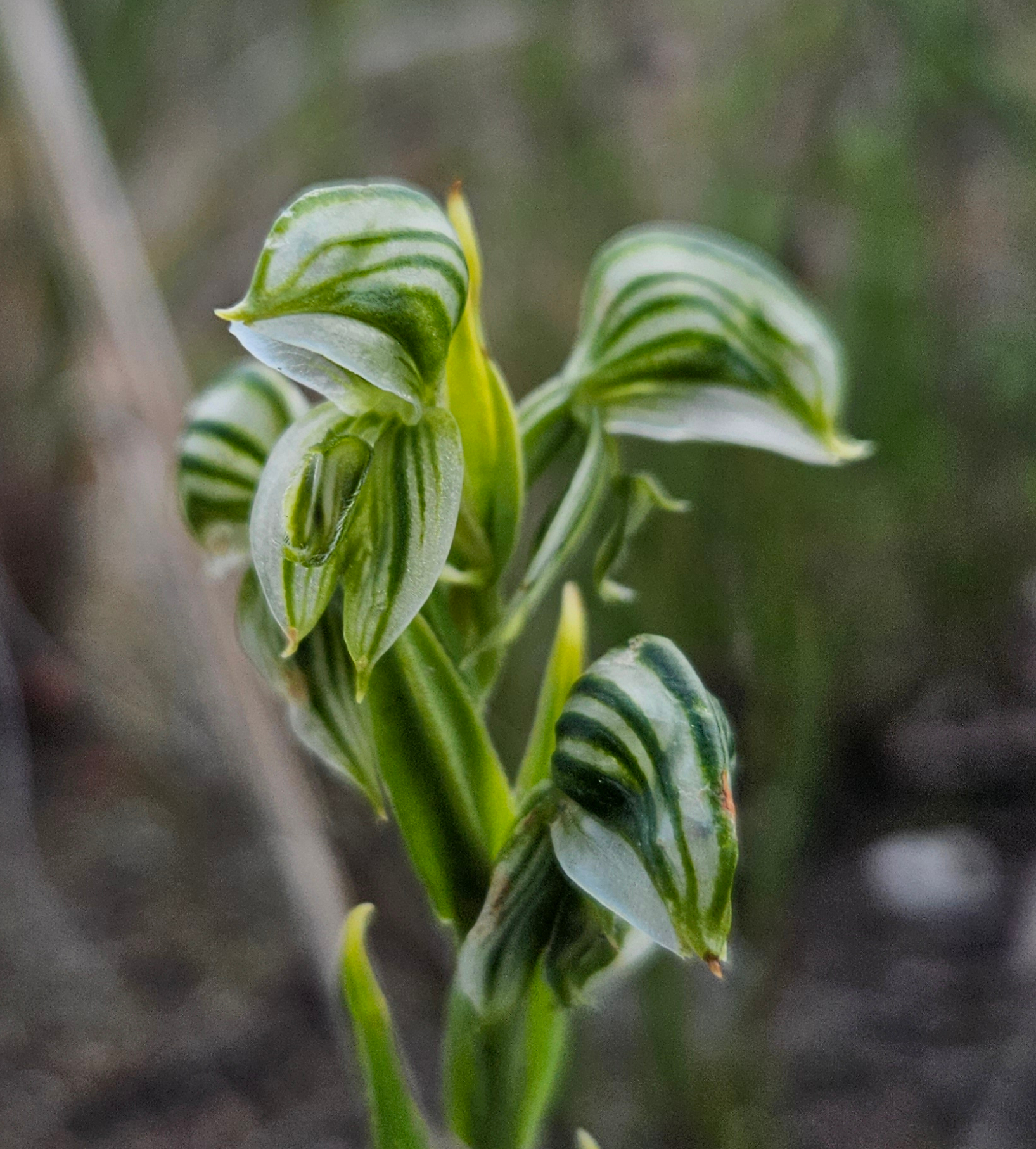
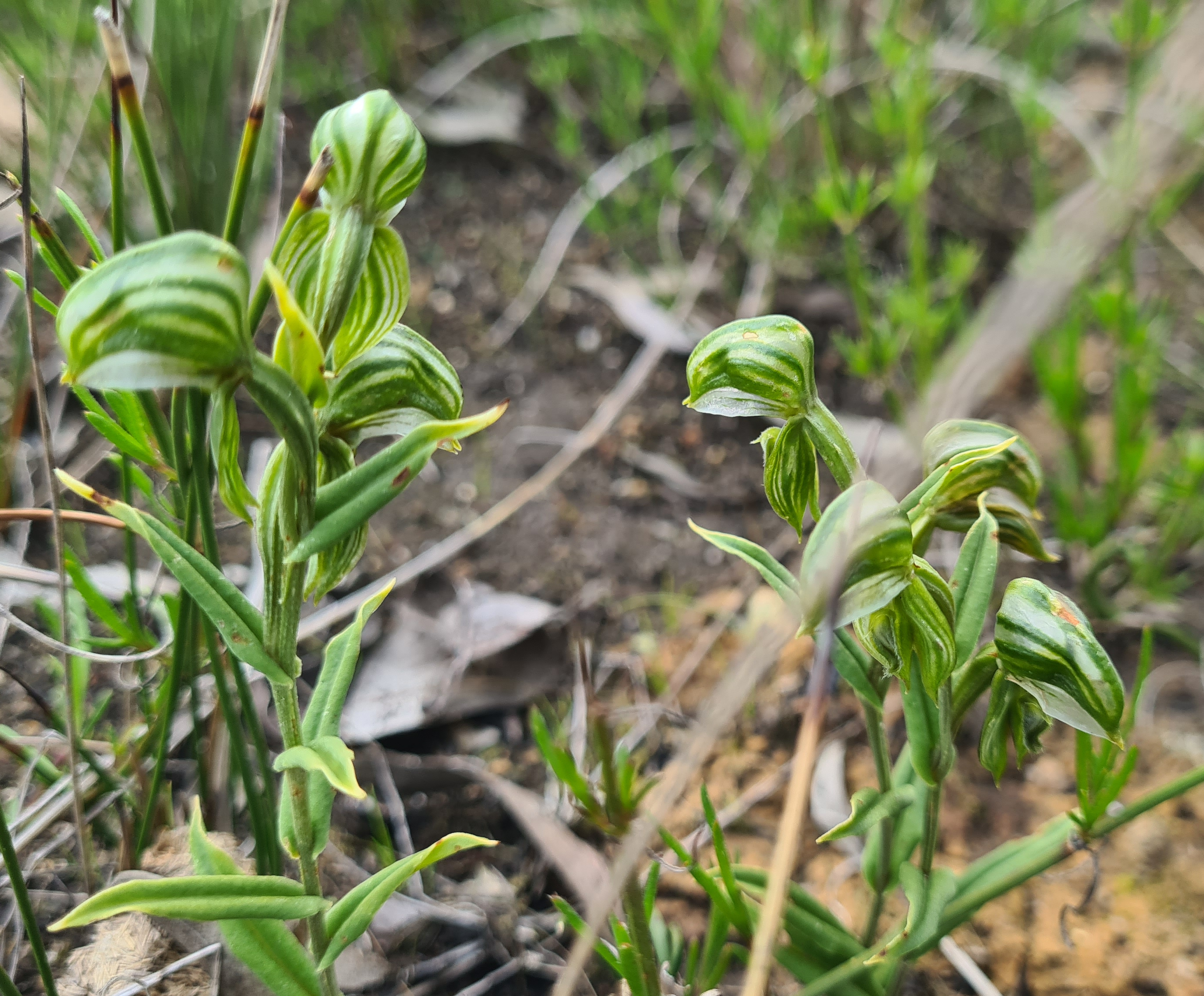


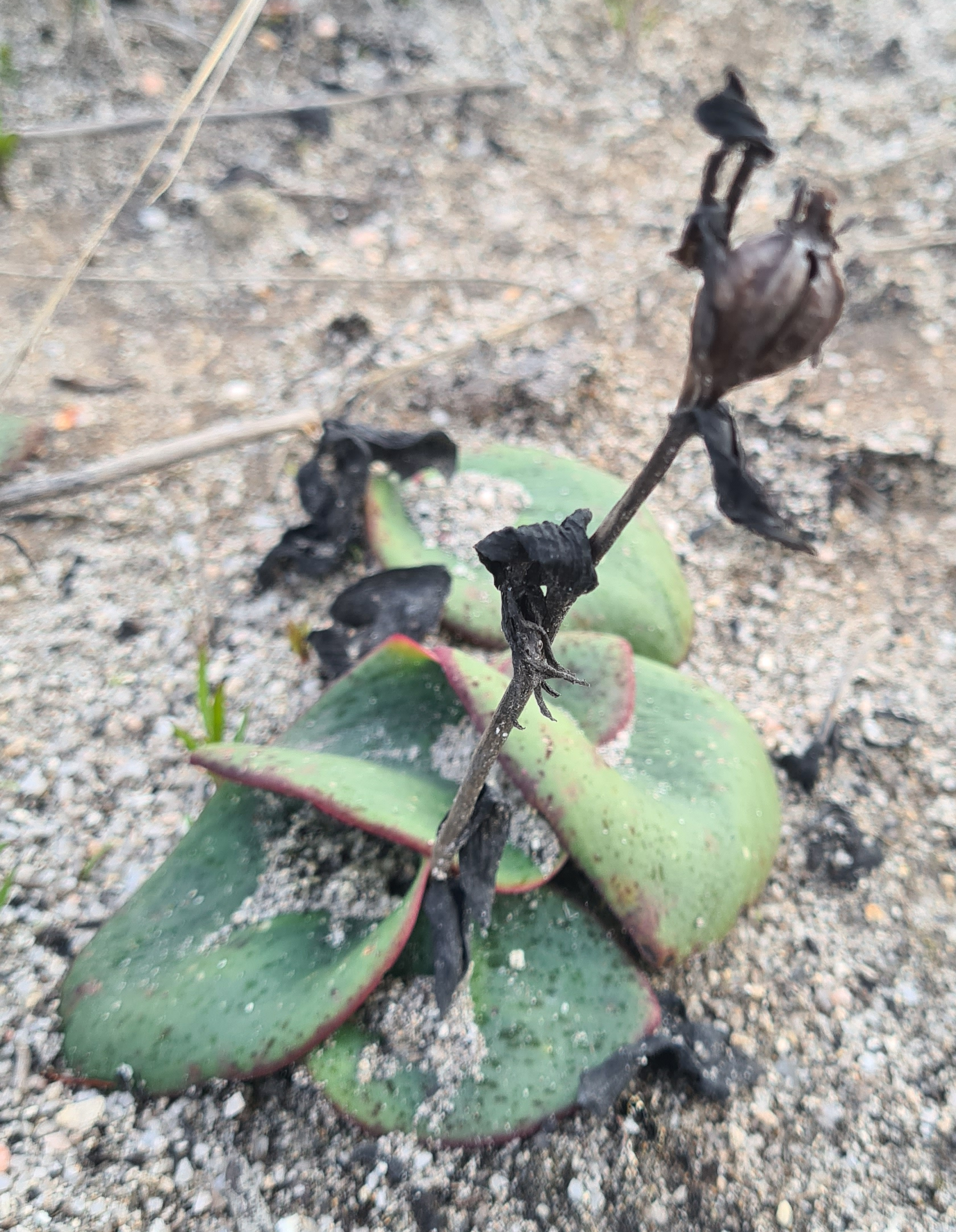
We now make tracks for Newdegate, where we plan to stay in the local hotel for the night. A rustic hotel which was busy with the locals, so our wonderful meal was eaten in the company of many. Only one more day of travel before we reach home, so we try and get a good night’s sleep, however the heater kept cutting out so needed to be reset many times.






